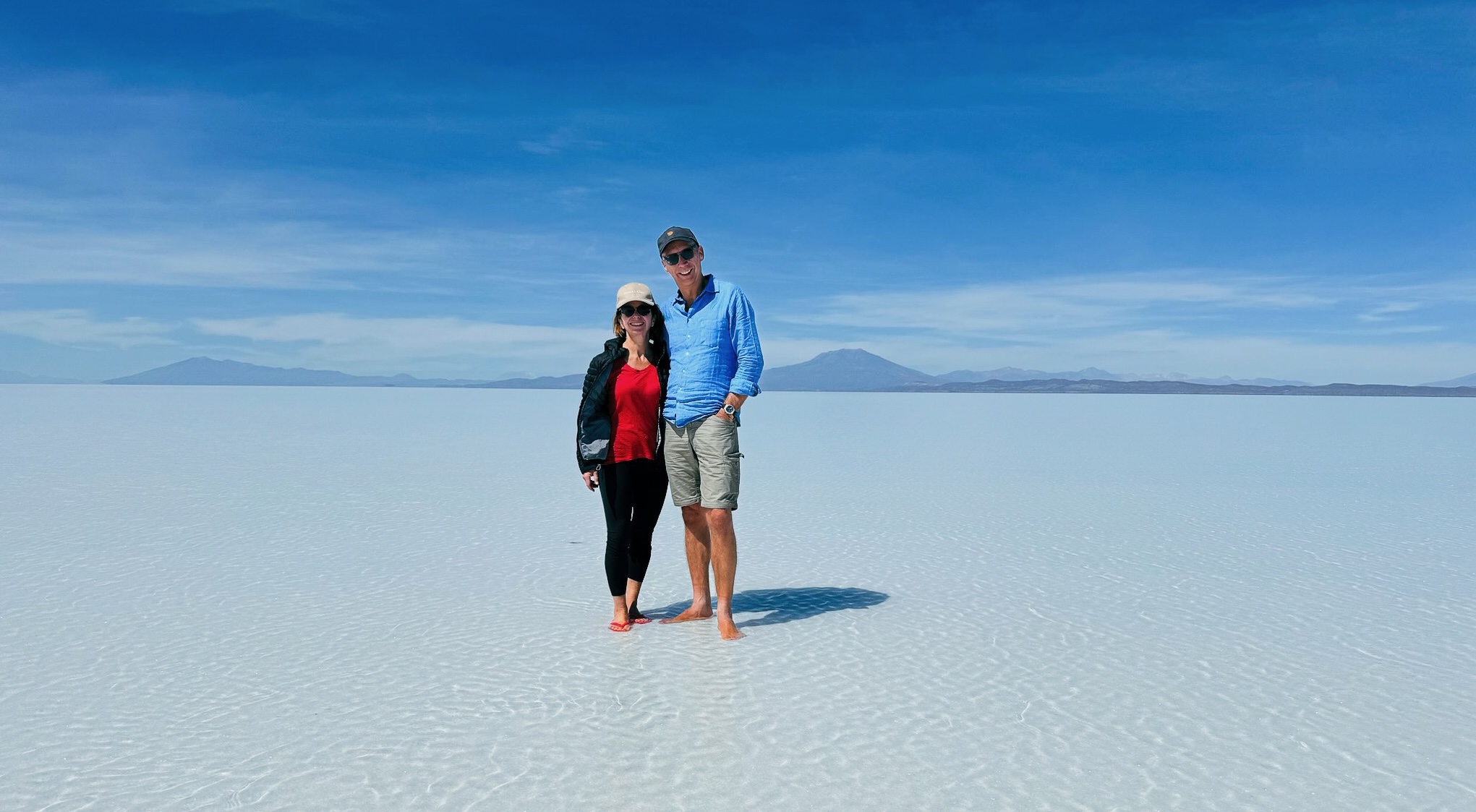
A trip to Chile and Bolivia is an amazing combination of different, breathtaking landscapes. Where else in the world can you bike through arid deserts, marvel at the ethereal, other-worldly white expanse of the world’s biggest salt flats, hike past mountain peaks and glaciers and enjoy gourmet cuisine in a famous wine region?!
Overview of our trip
Our journey to South America was an unforgettable adventure, blending some of the continent’s most iconic and diverse landscapes. We began by exploring Chile’s Atacama region, with its dramatic deserts, geysers and star-filled skies, before crossing into Bolivia to marvel at the breathtaking Salar de Uyuni, the world’s largest salt flats. We took a break from outdoor adventure and spent a couple of days in Chile’s wine region, staying at Vik Chile, a hotel that had been on our wishlist for many years. From there, we ventured south to Patagonia, where we hiked through rugged terrain and stood in awe of its towering peaks. We carried on into the Argentinian part of Patagonia, staying near El Calafate to witness the magnificent Perito Moreno Glacier. Wrapping up our trip, we spent a few days in the vibrant, colourful city of Buenos Aires, before flying home to London.
For the Atacama and Patagonia parts of the trip we looked at three luxury lodge options. We chose Explora, as we liked the design of the lodges and the fact it has a long established presence in Chile, with a wide range of explorations. They also offered an amazing crossing to the Bolivian salt flats from the Atacama lodge. The other options included Tierra, which people we met told us is a bit higher end than Explora, and Awasi which looked smaller and more intimate.
When to visit
Planning a trip to Chile and Bolivia requires careful consideration of the best time to visit three distinct regions: the Atacama Desert, the Uyuni Salt Flats, and Patagonia. We settled on late November which worked out well. The Atacama Desert was warm not scorching, the Salar de Uyuni was still in the dry season and in Patagonia the weather was mild and we got luck with some blue skies and sunshine.
As with all our curated trips, the places we write about here were selected based on lots of research, using luxury travel magazines like Condé Nast Traveller plus recommendations from friends who knew the cities well.
Day 0: Fly London to Santiago
Day 1: Arrive Santiago, stay Singular (1 night)
Day 2: Fly Santiago to Calma then transfer to San Pedro de Atacama, stay Explora (3 nights)
Day 5: Explora Travesía from San Pedro de Atacama to Salar de Uyuni, stay Explora lodges in Ramaditas (1 night), Chituca (1 night) and Uyuni (2 nights)
Day 9: transfer (c. 8 hours) to Calama, stay Noi Borde Loa (1 night)
Day 10: Fly Calama to Santiago then transfer (c.2 hours) to Millahue, stay Vik Chile (2 nights)
Day 12: transfer to Santiago then fly to Puerto Natales, transfer to Torres del Paine, stay Explora (3 nights)
Day 15: transfer to El Calafate, stay EOLO (3 nights)
Day 18: fly El Calafate to Buenos Aires, stay 4 Seasons (3 nights)
Day 21: fly Buenos Aires to London via Rio
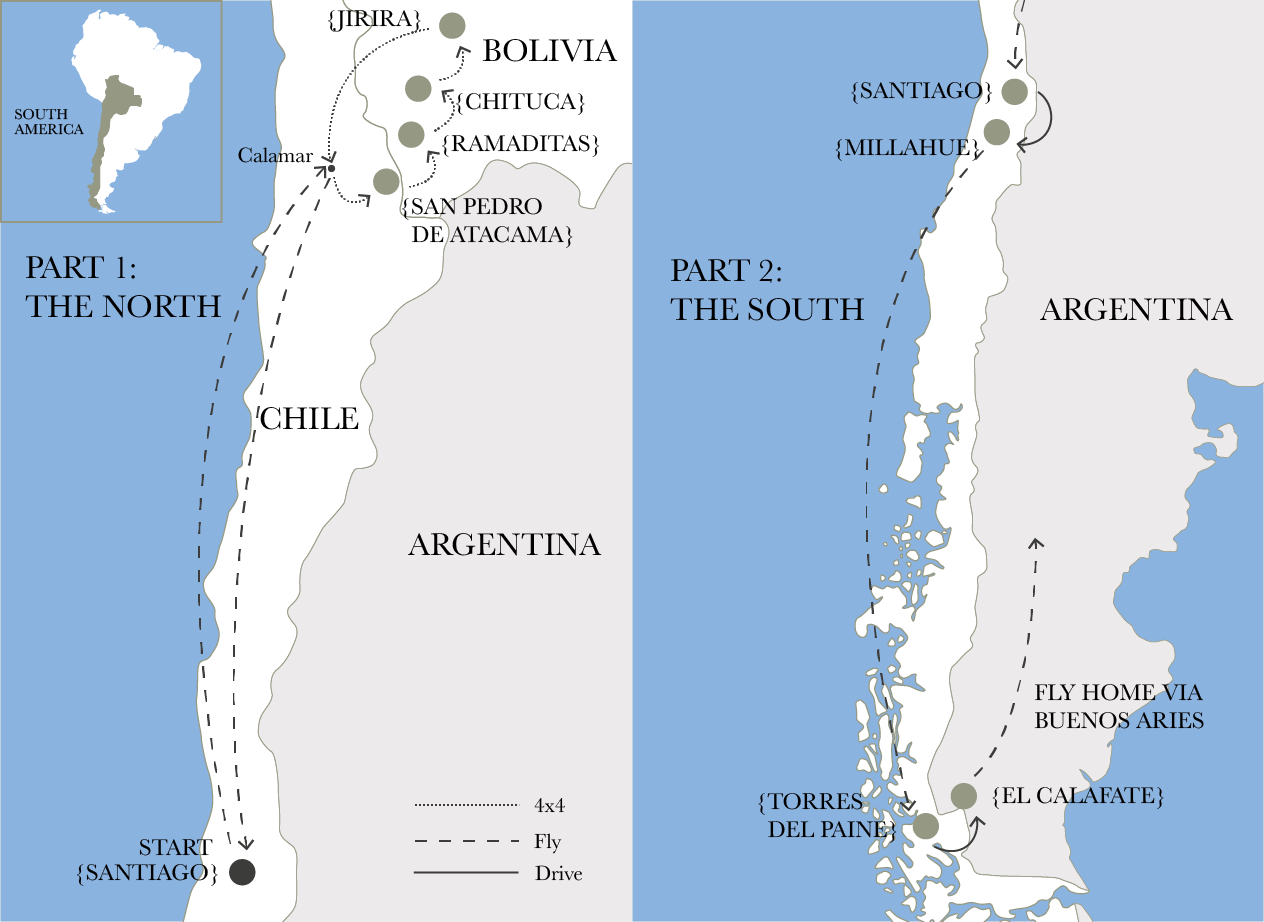
Santiago
People had told us that Santiago wasn’t that interesting a city, but we loved our short stay there. It was full of life and colour, beautiful buildings and had countless drinking and dining venues.
Stay
The Singular Santiago
The Singular is a lovely boutique hotel combining old-world charm and contemporary styling. It has two bars, including one on the rooftop, where there is also a little pool. Located in the Lastarria area we talk about below.
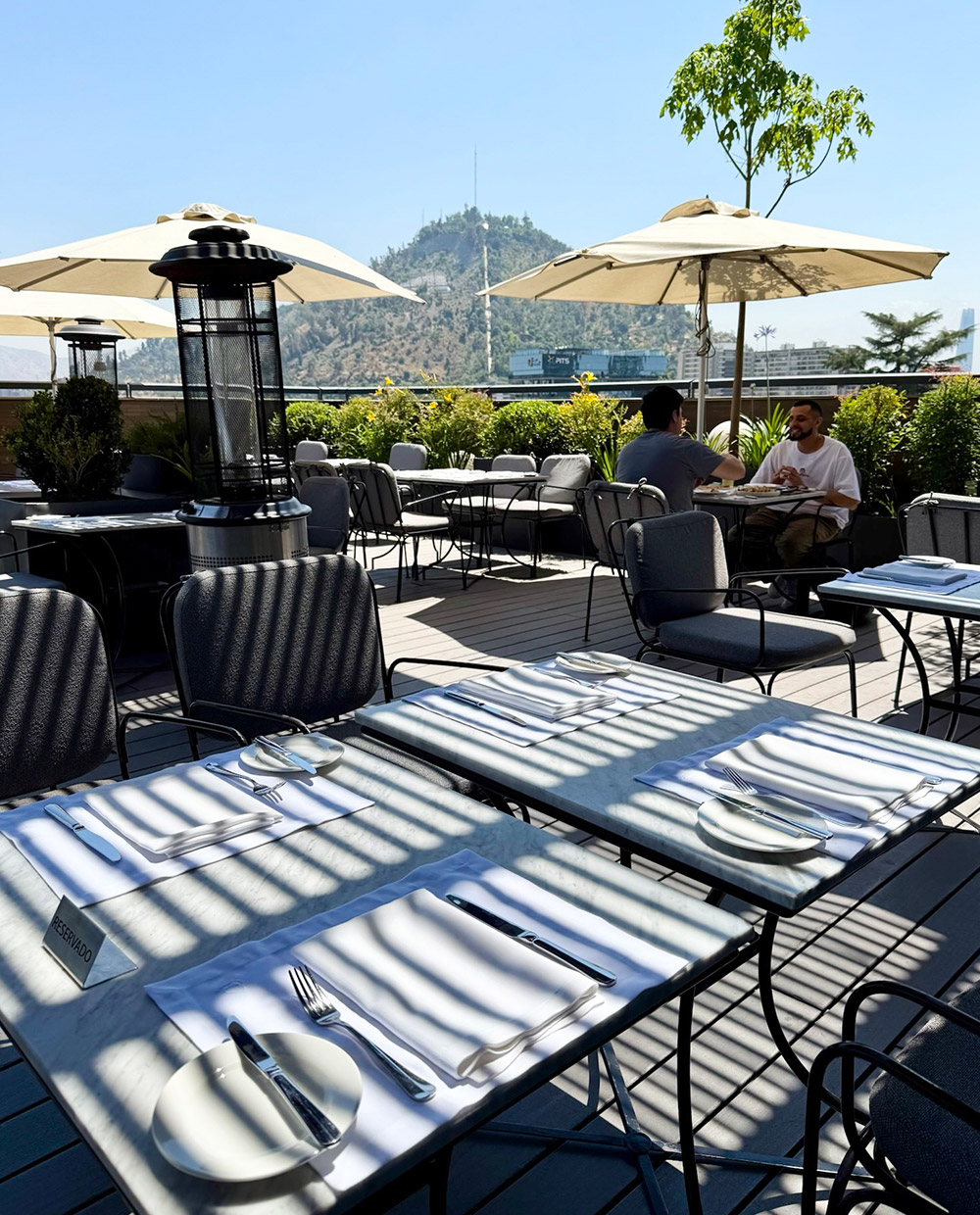
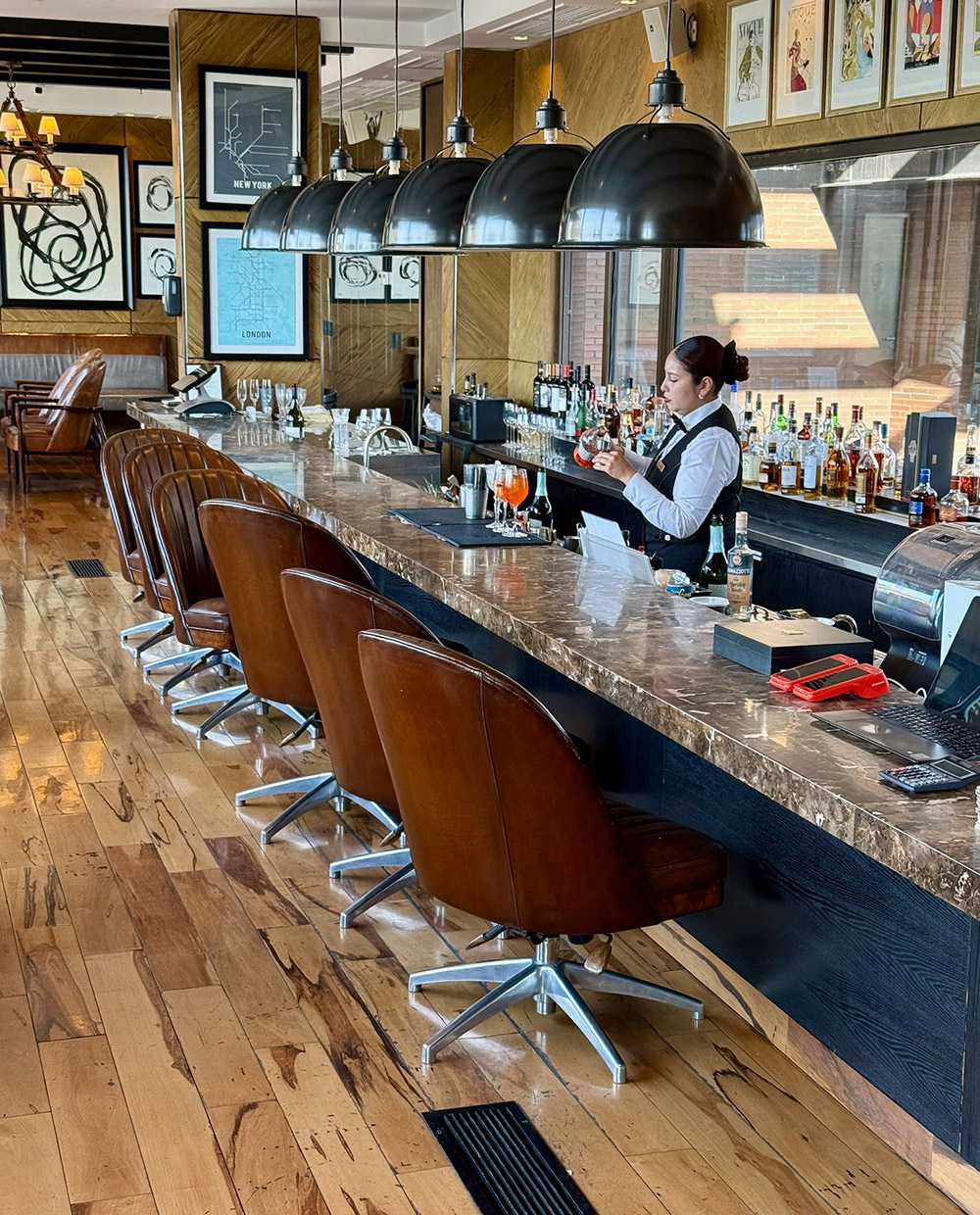
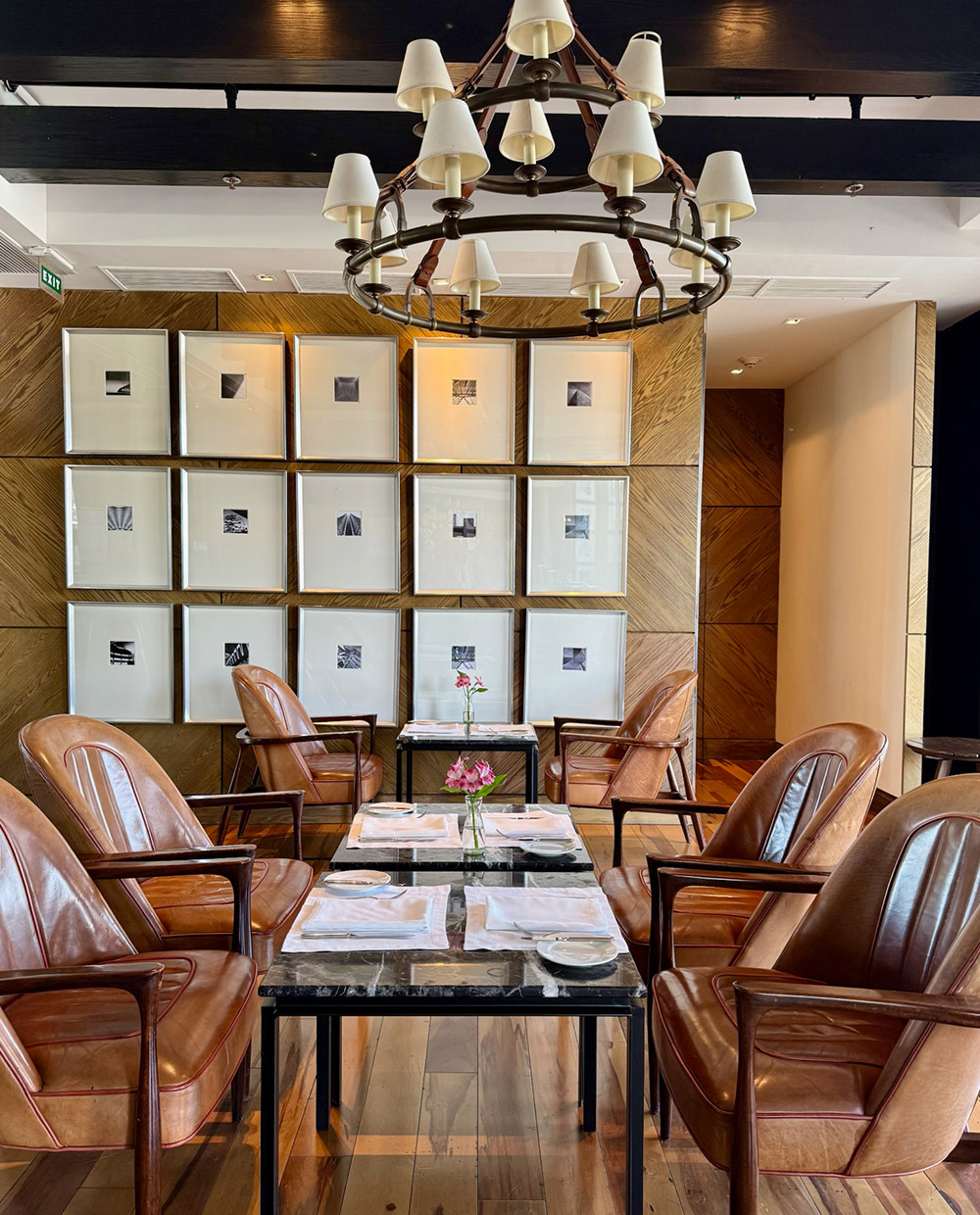
Do & See
Lastarria
We spent several hours strolling through the charming Lastarria neighbourhood near the Singular hotel. Paseo José Victorino street was lined with colourful buildings, lively cafés and market vendors selling everything from handmade jewellery to vintage books. Parroquia de la Veracruz is a small yet captivating colonial church.
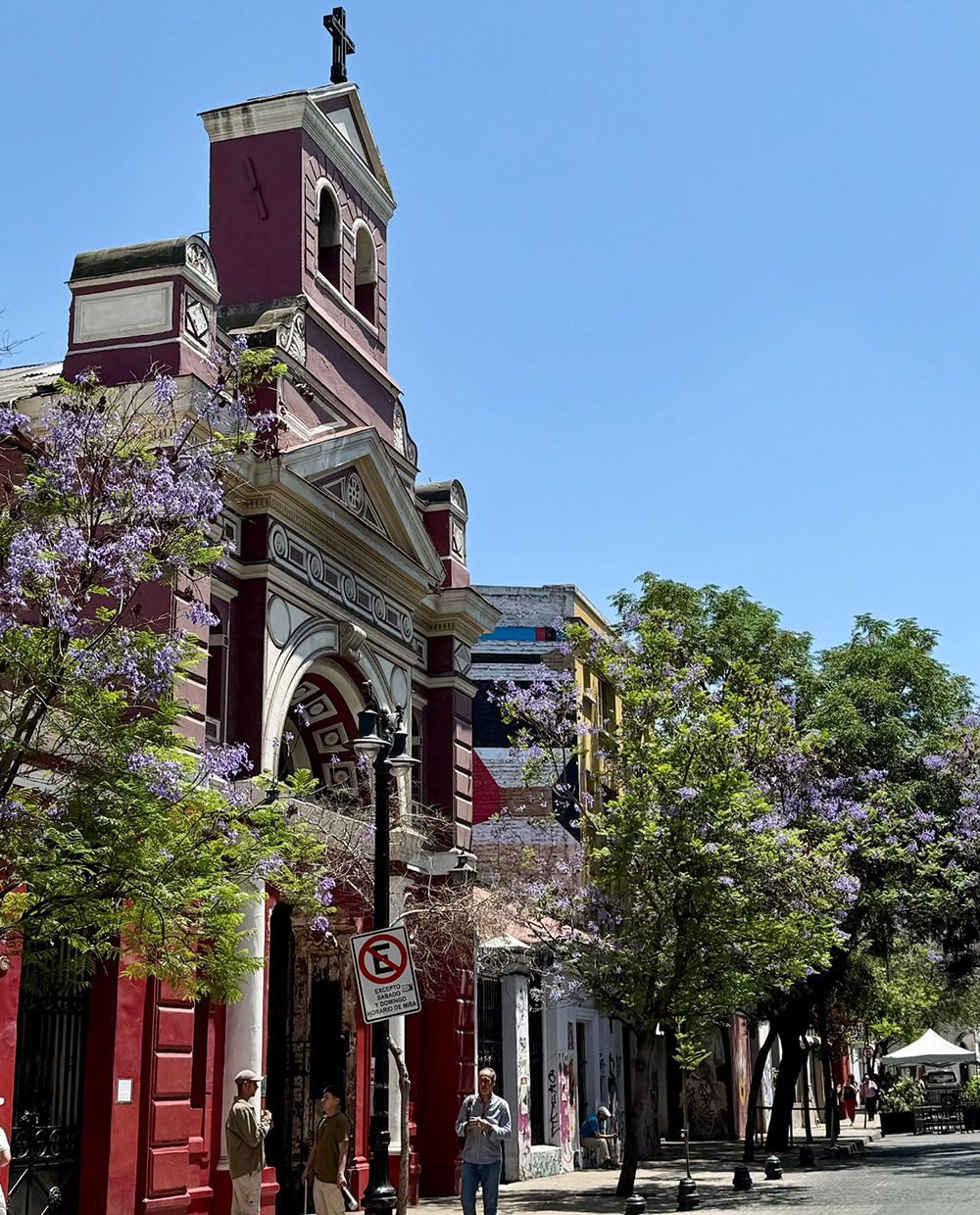
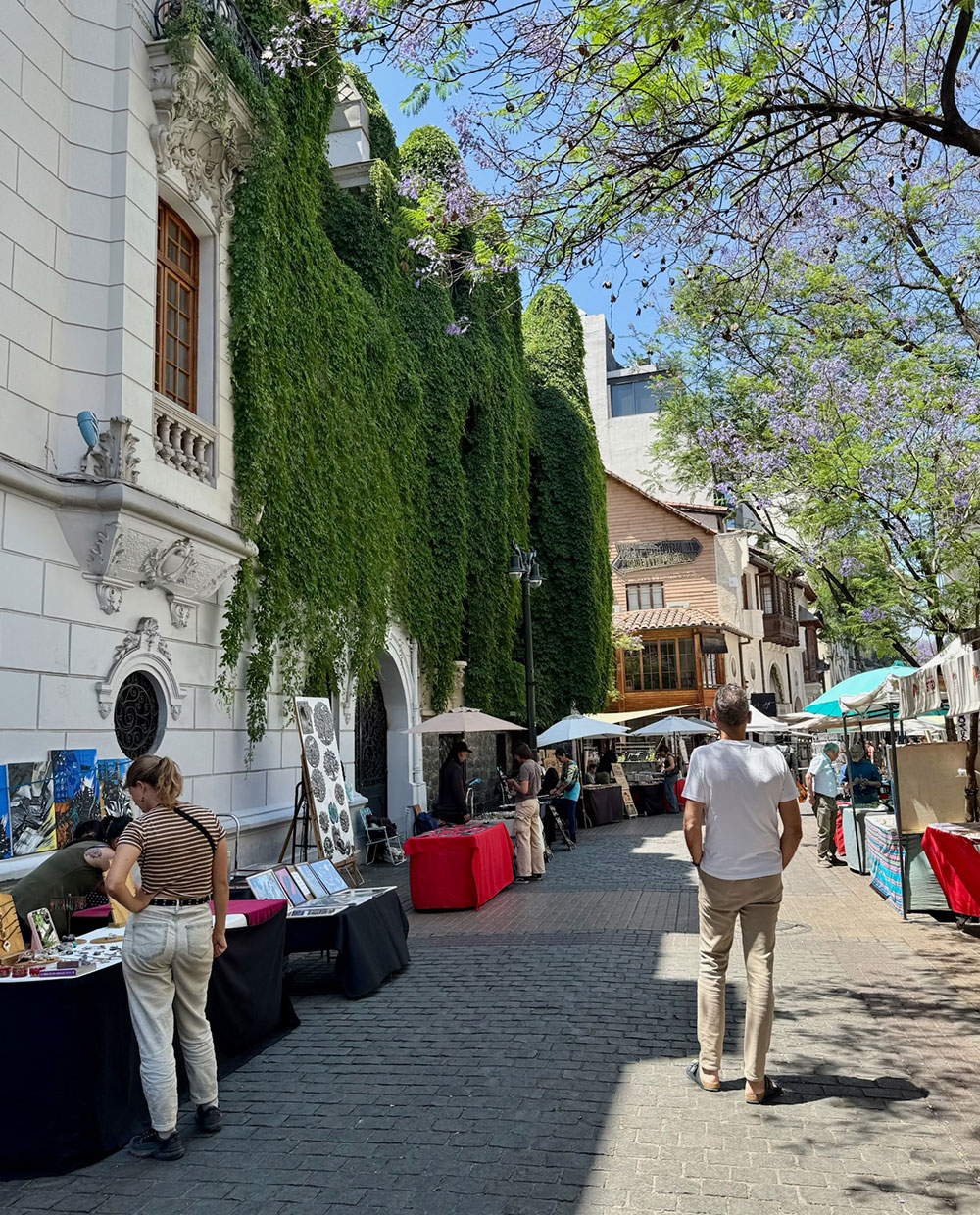
Plaza de Armas
The Plaza de Armas is the central square where history, culture and everyday life collide. The square is the home of the impressive Metropolitan Cathedral and other colonial buildings. But it is also a place full of life, such as the corner of the square where locals gather around small, weathered tables to play chess.
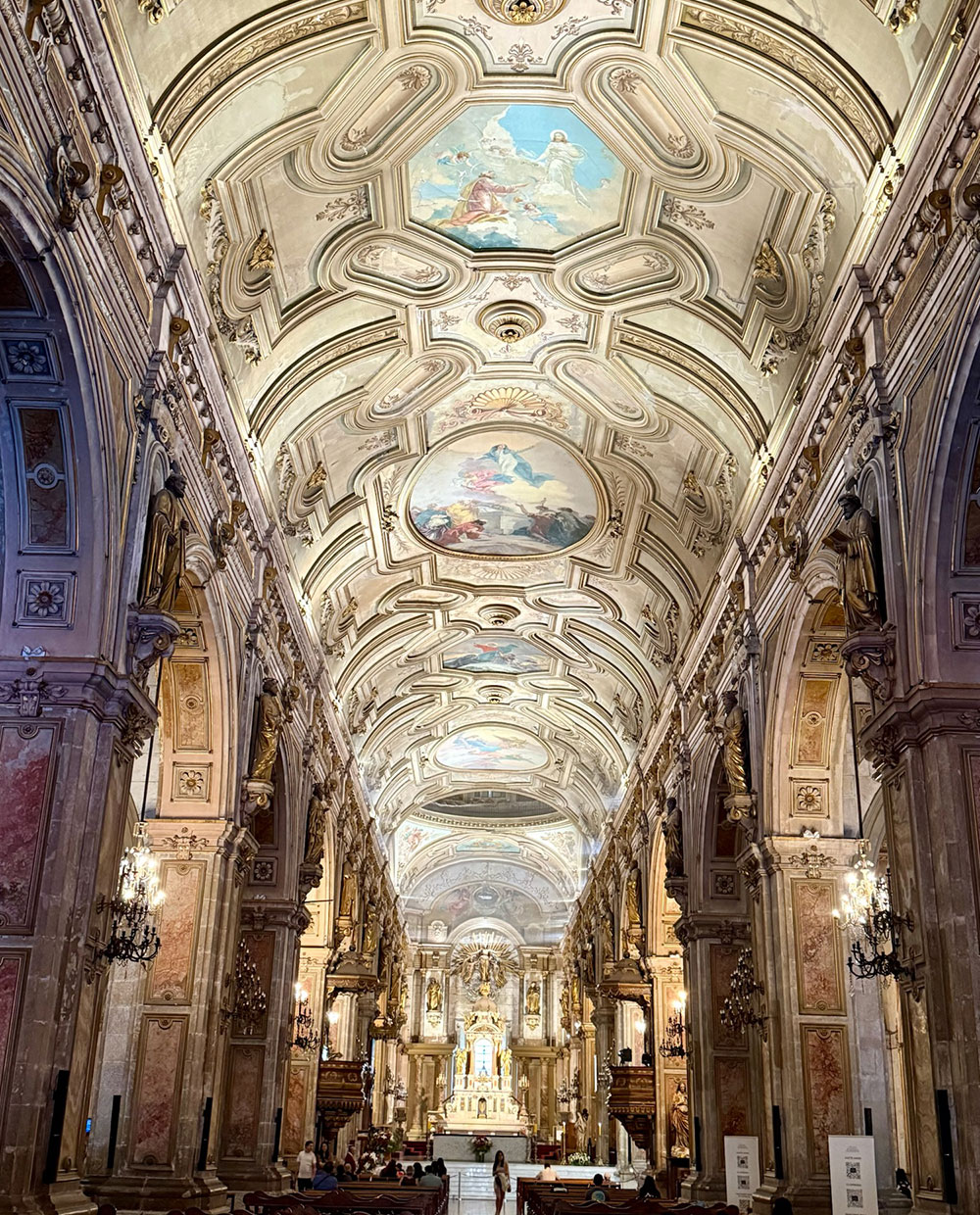
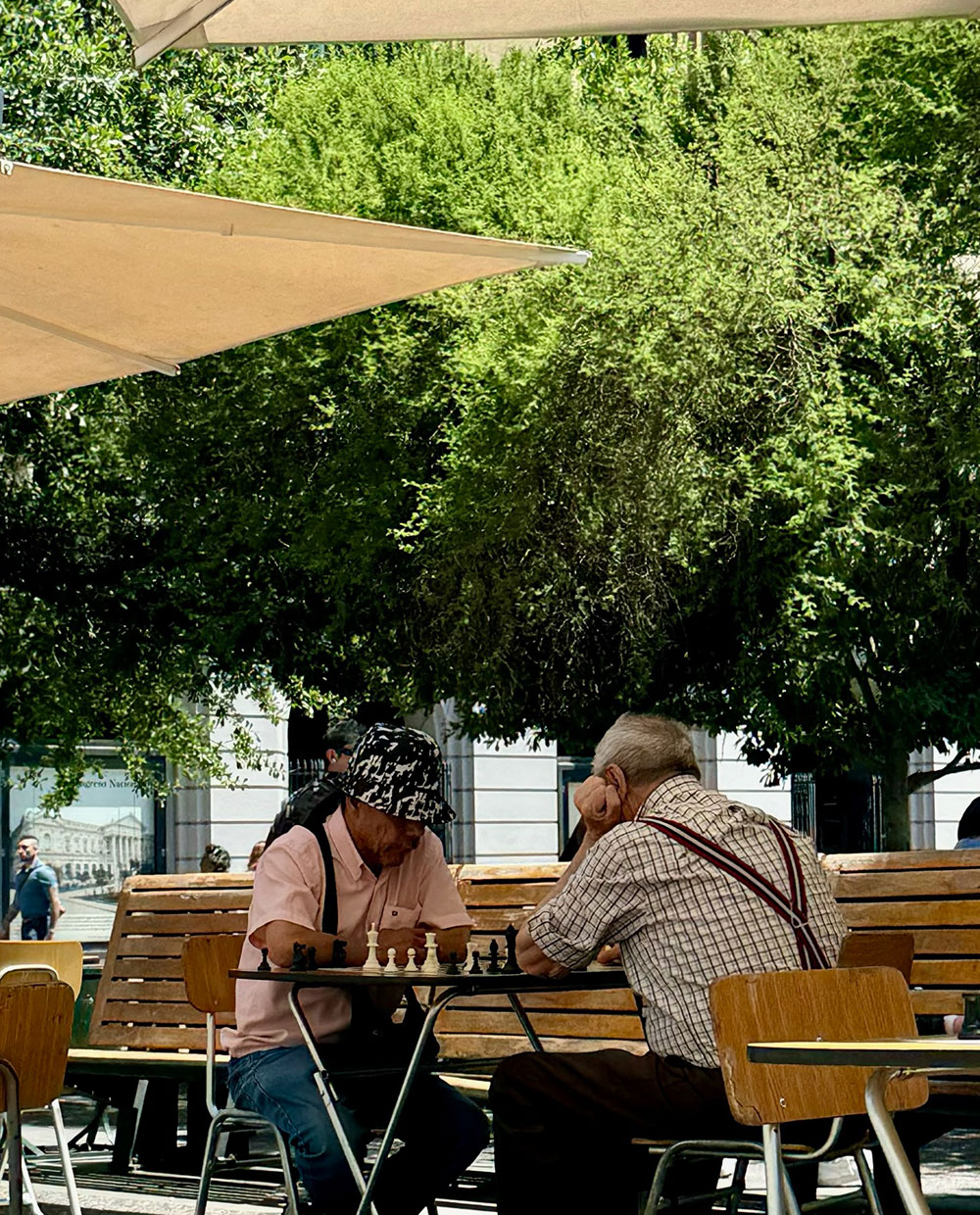
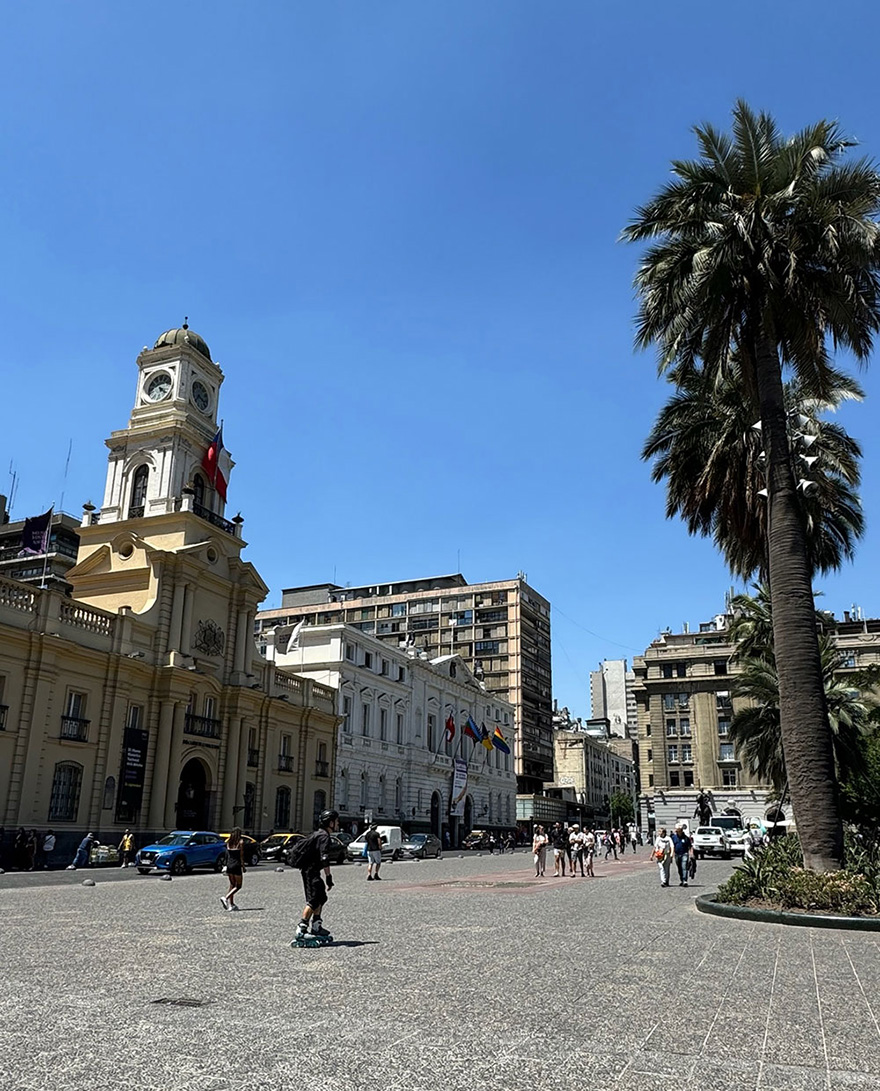
A short away, La Moneda Palace impressed us with its neoclassical grandeur. This elegant building dating from 1805 houses the office of Chile’s president.
Santa Lucía Hill
Rising above the city, Santa Lucía Hill provided a peaceful break from the hustle and bustle of the city, with picturesque gardens, historic structures and views of the city.
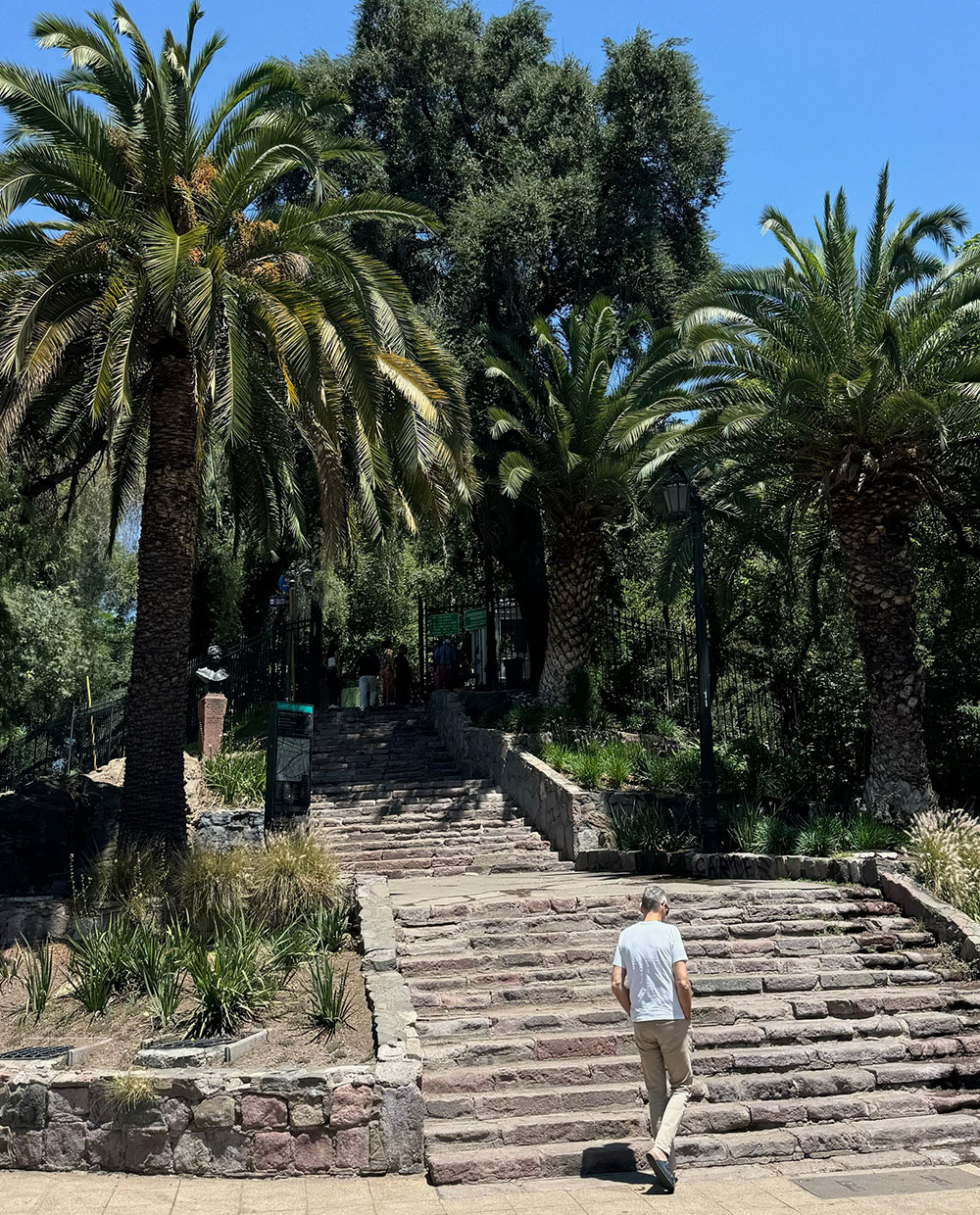
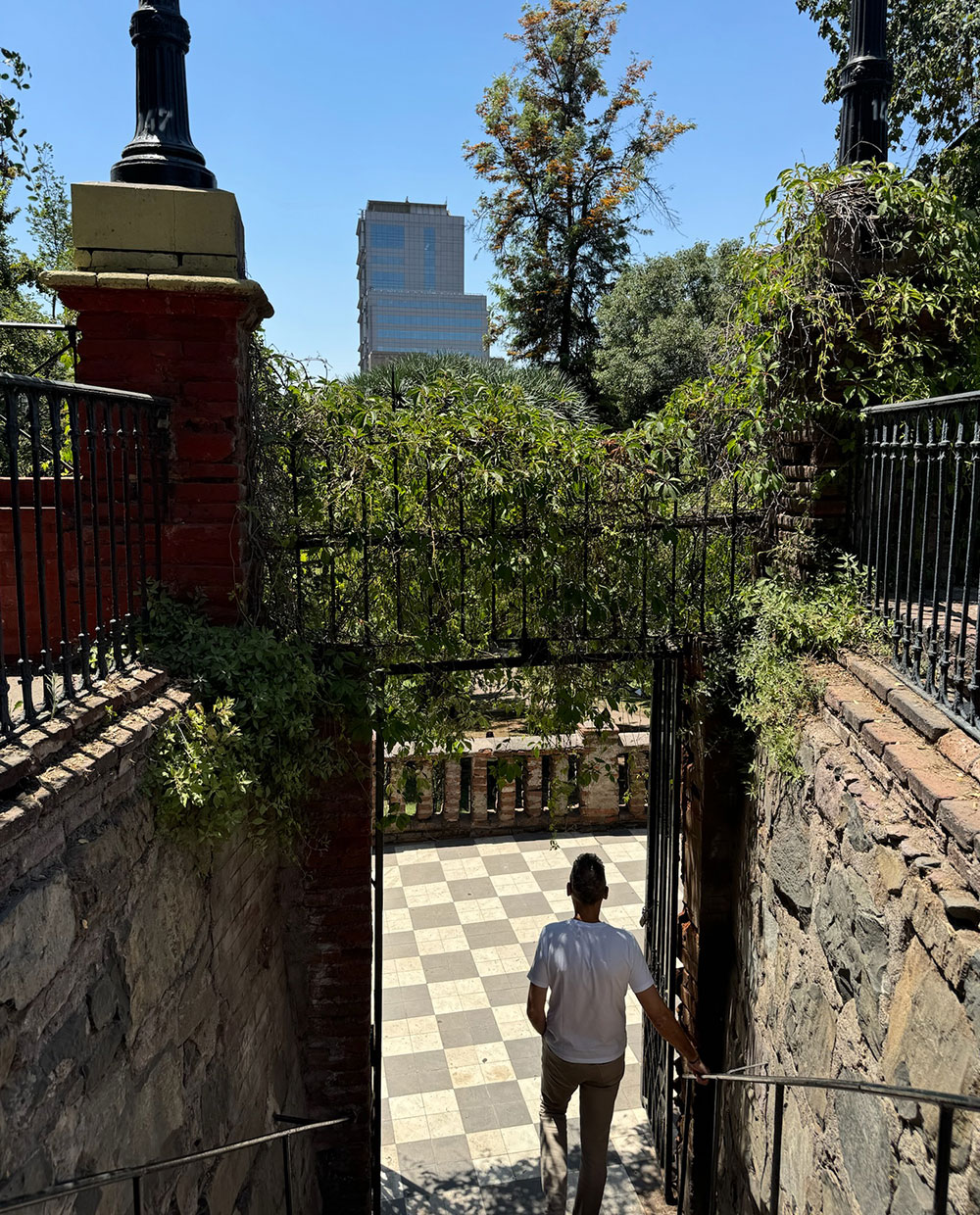
Dine & Drink
Patio Bellavista
Bellavista is colourful, funky area, including Patio Bellavista, a collection of eating & dining venues. We saw it during the day when it was quiet, but locals told us it gets very lively in the evening!
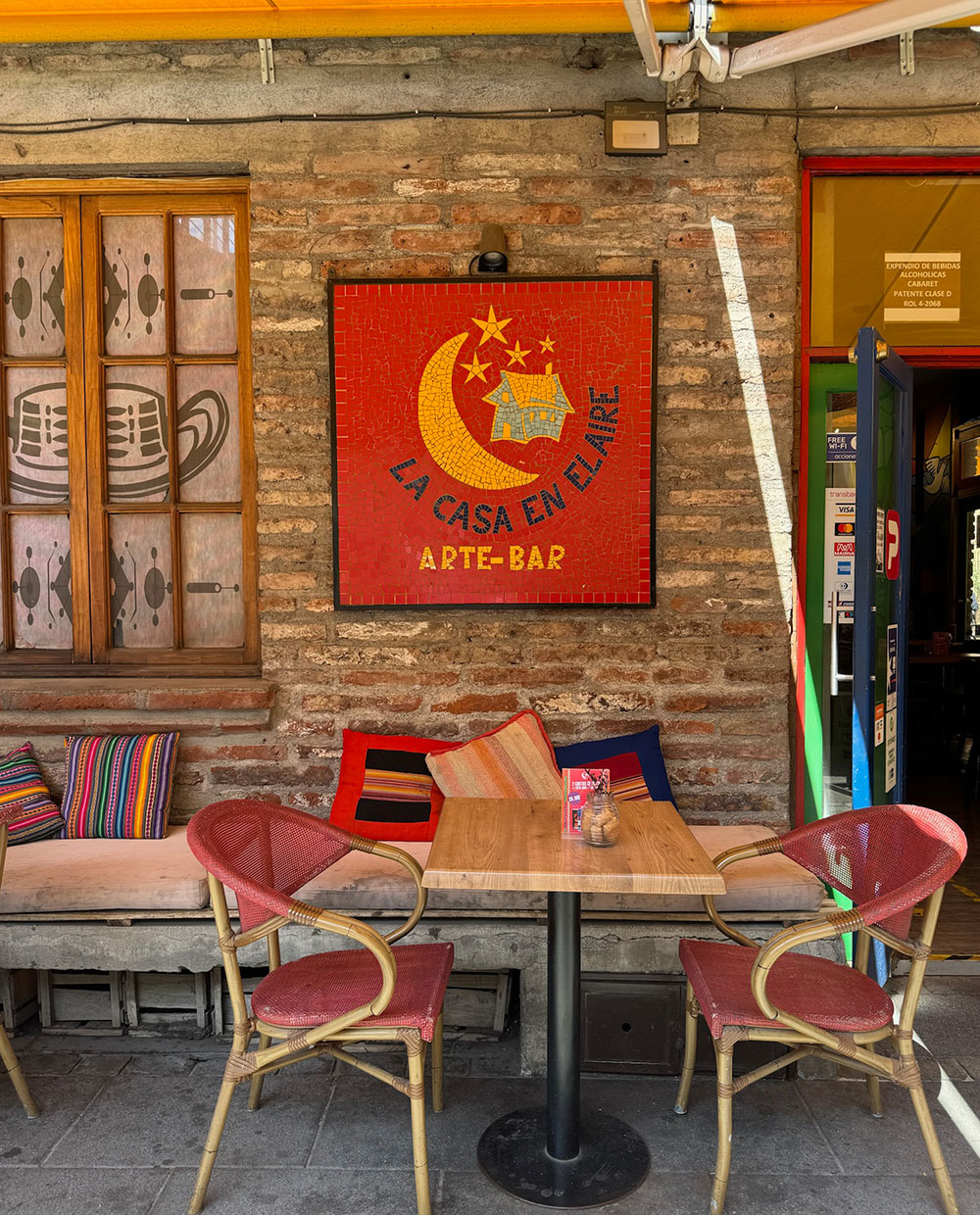
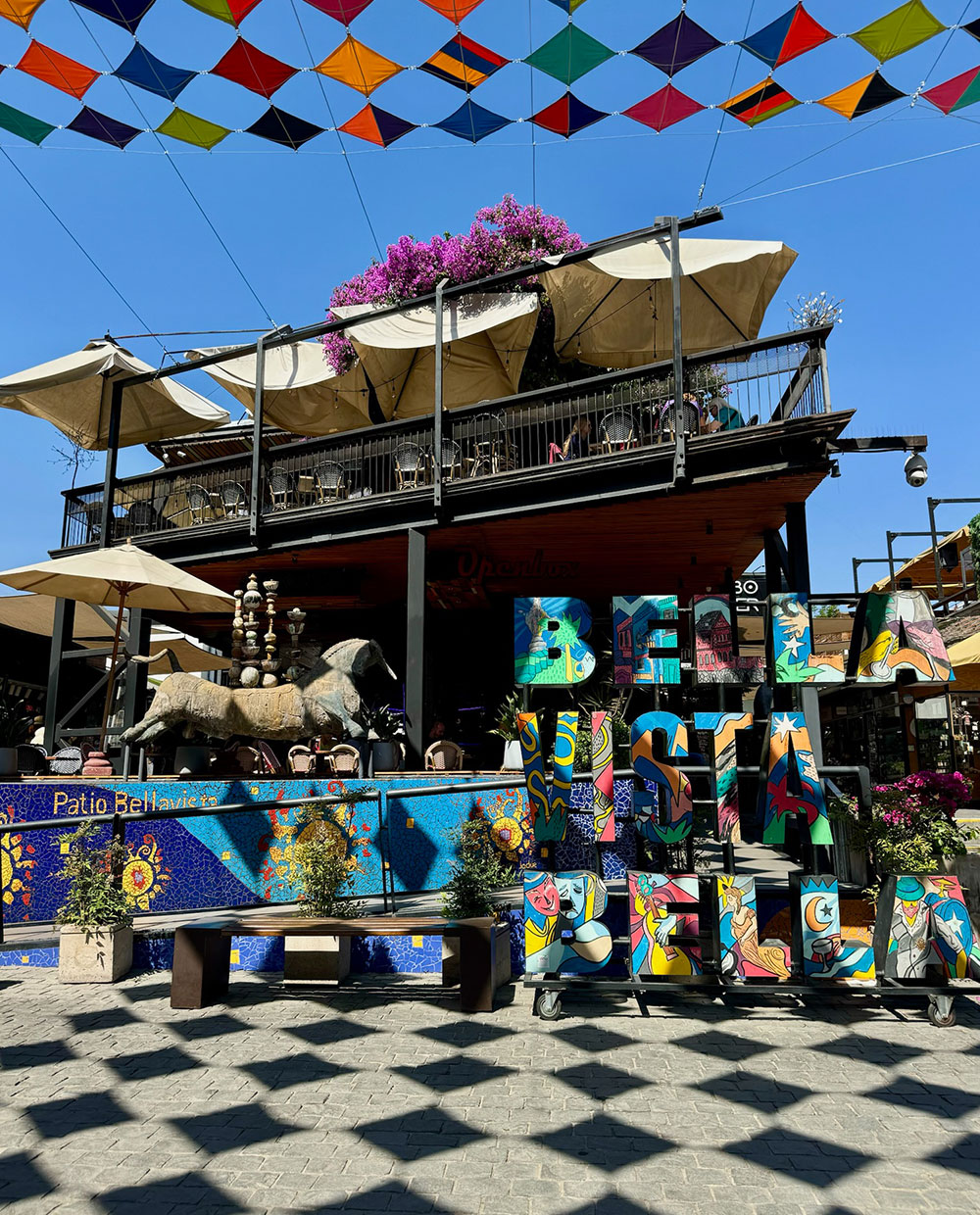
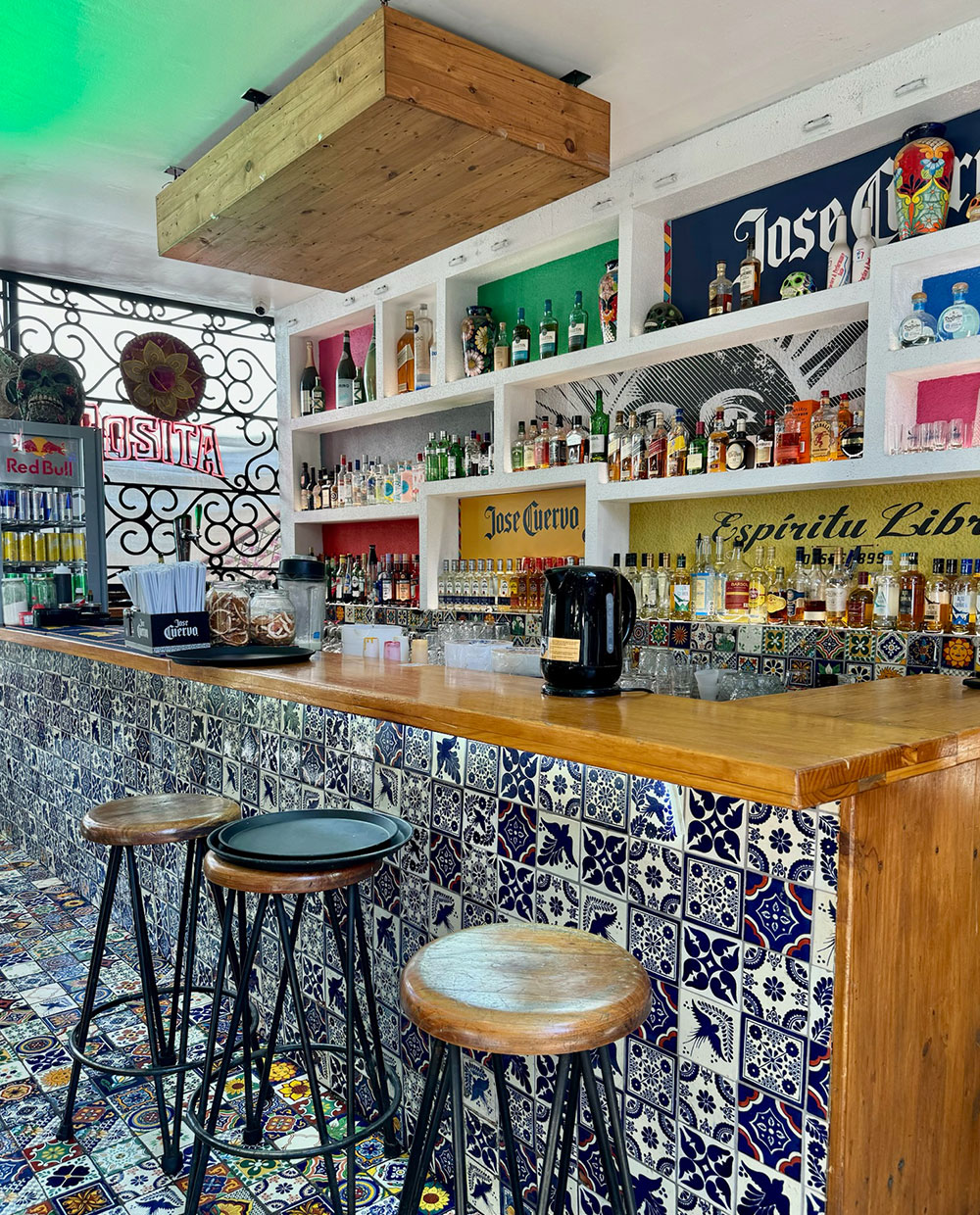
We enjoyed checking out the buildings in the nearby streets covered with bright graffiti murals. This was some of the most impressive street art we saw during our South American journey.
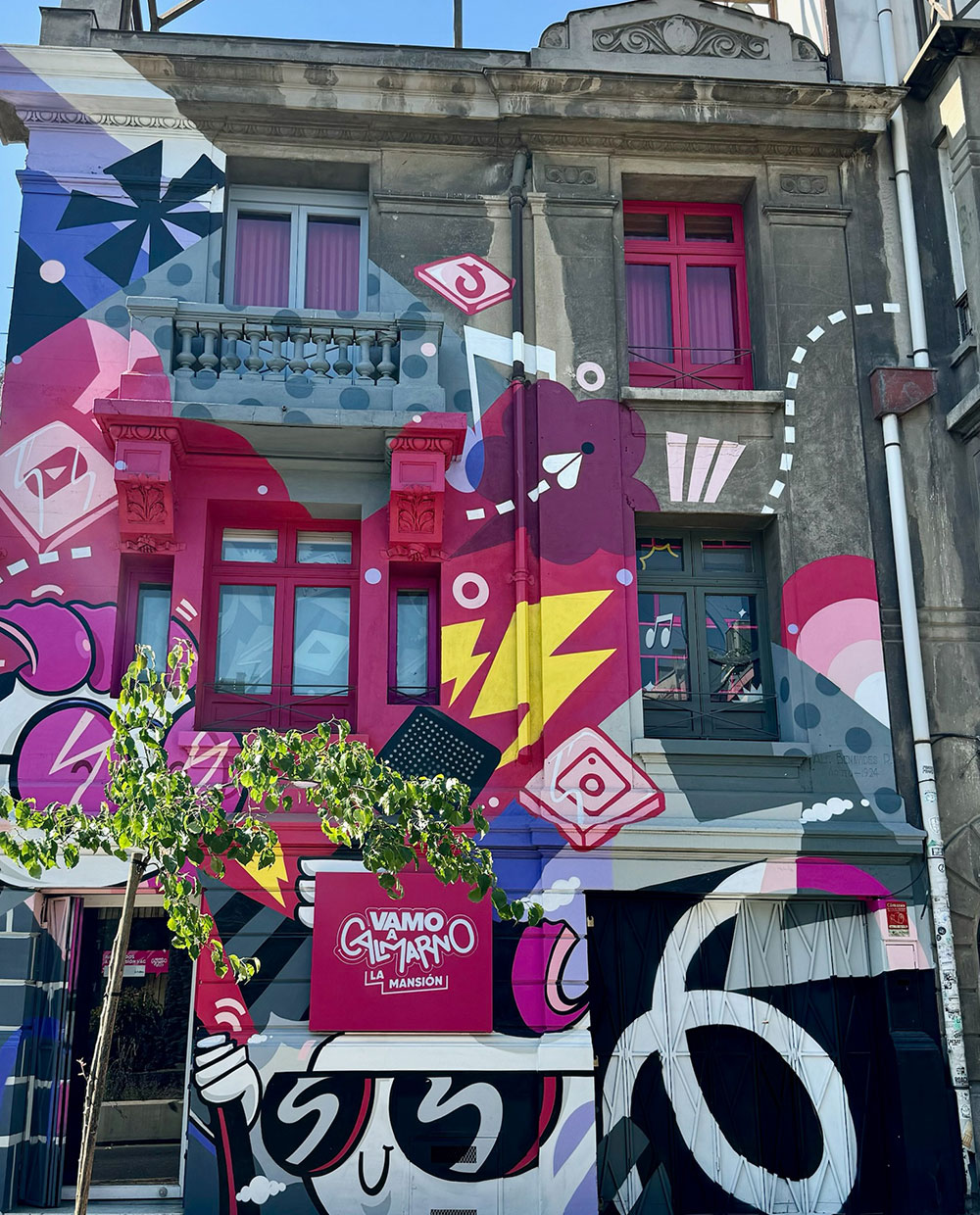
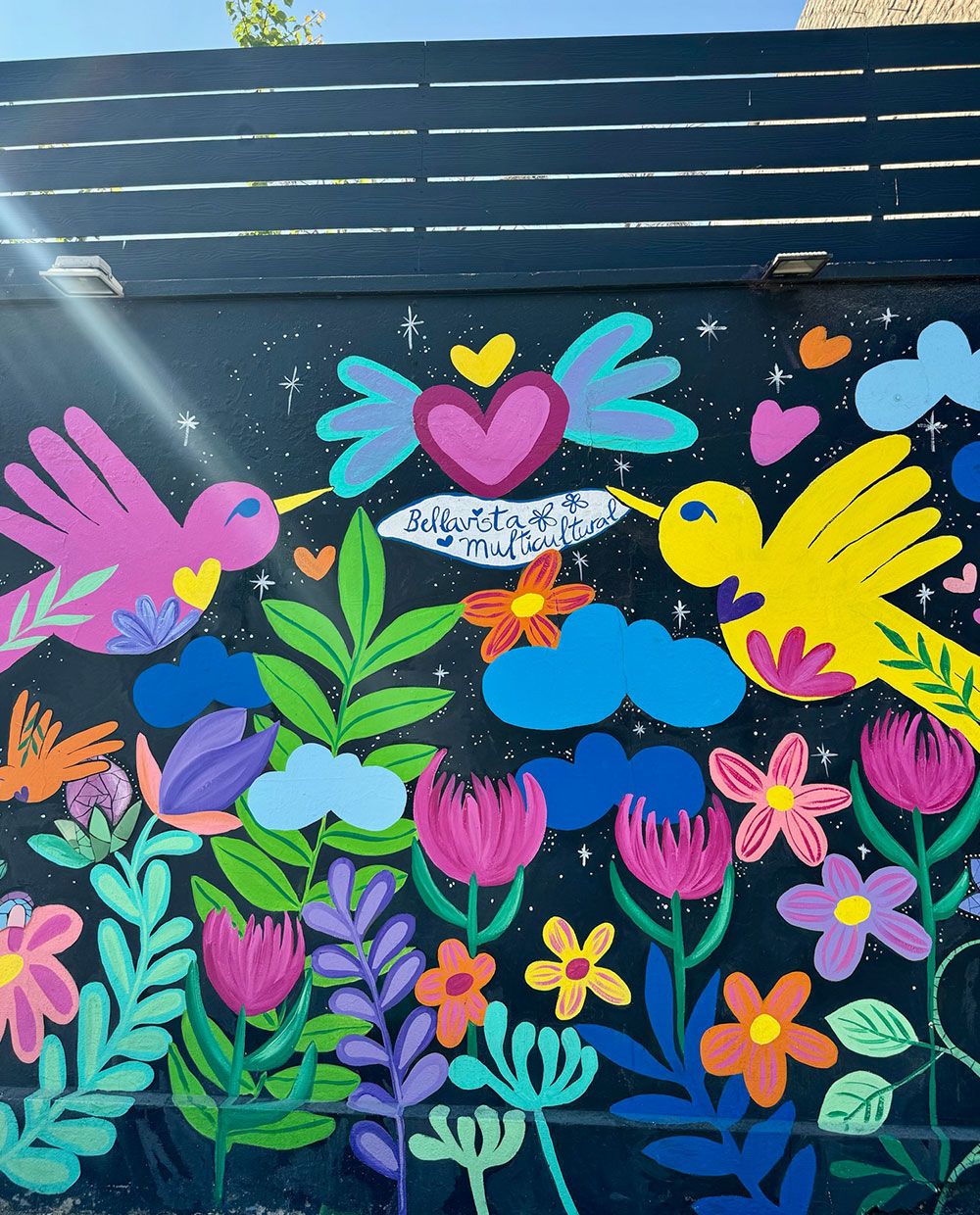

Sanguchería Ciudad Vieja
For cocktails and a casual bite, we discovered Sanguchería Ciudad Vieja in Bellavista. The interior was colourful, the vibe upbeat and we loved the little terrace.
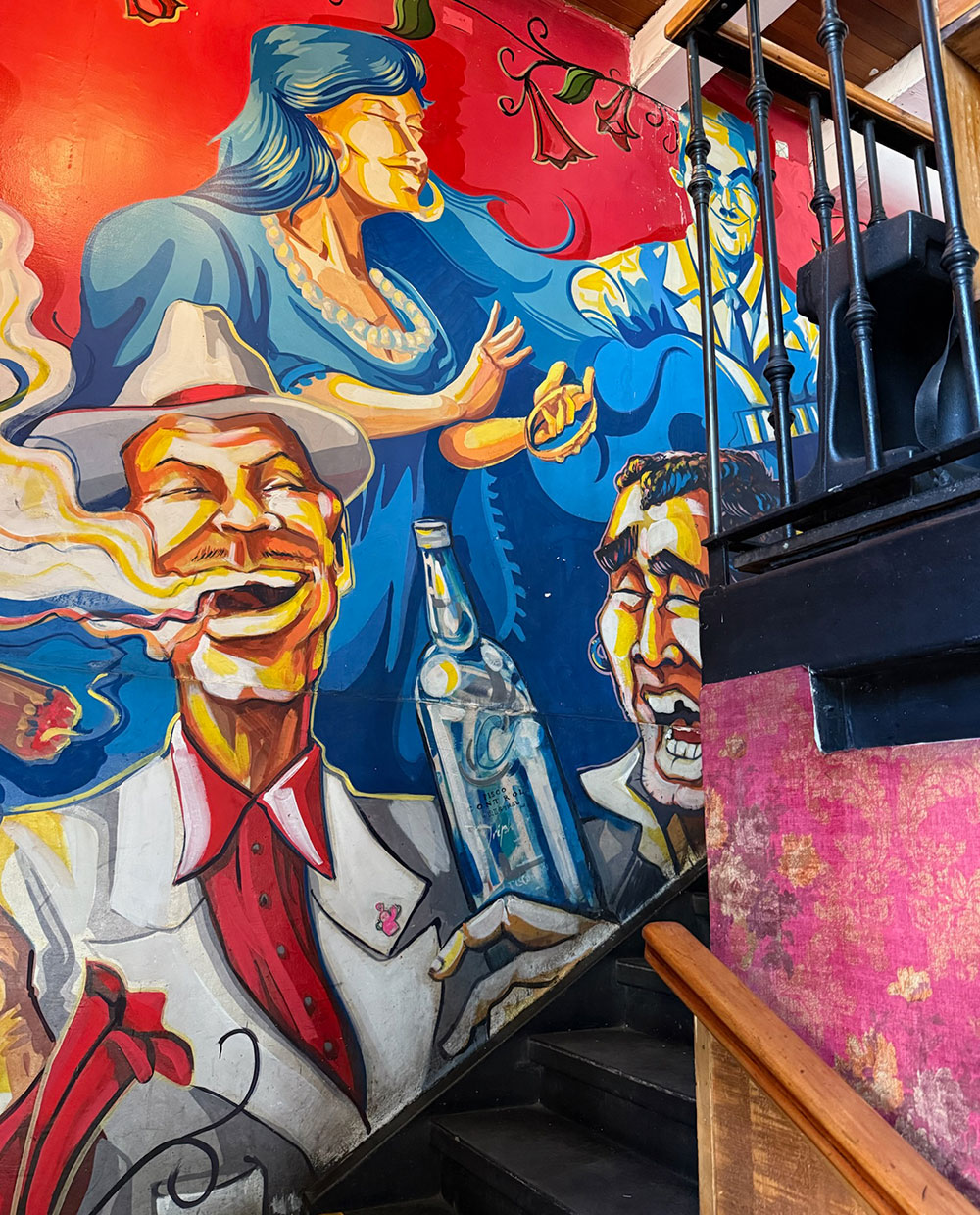
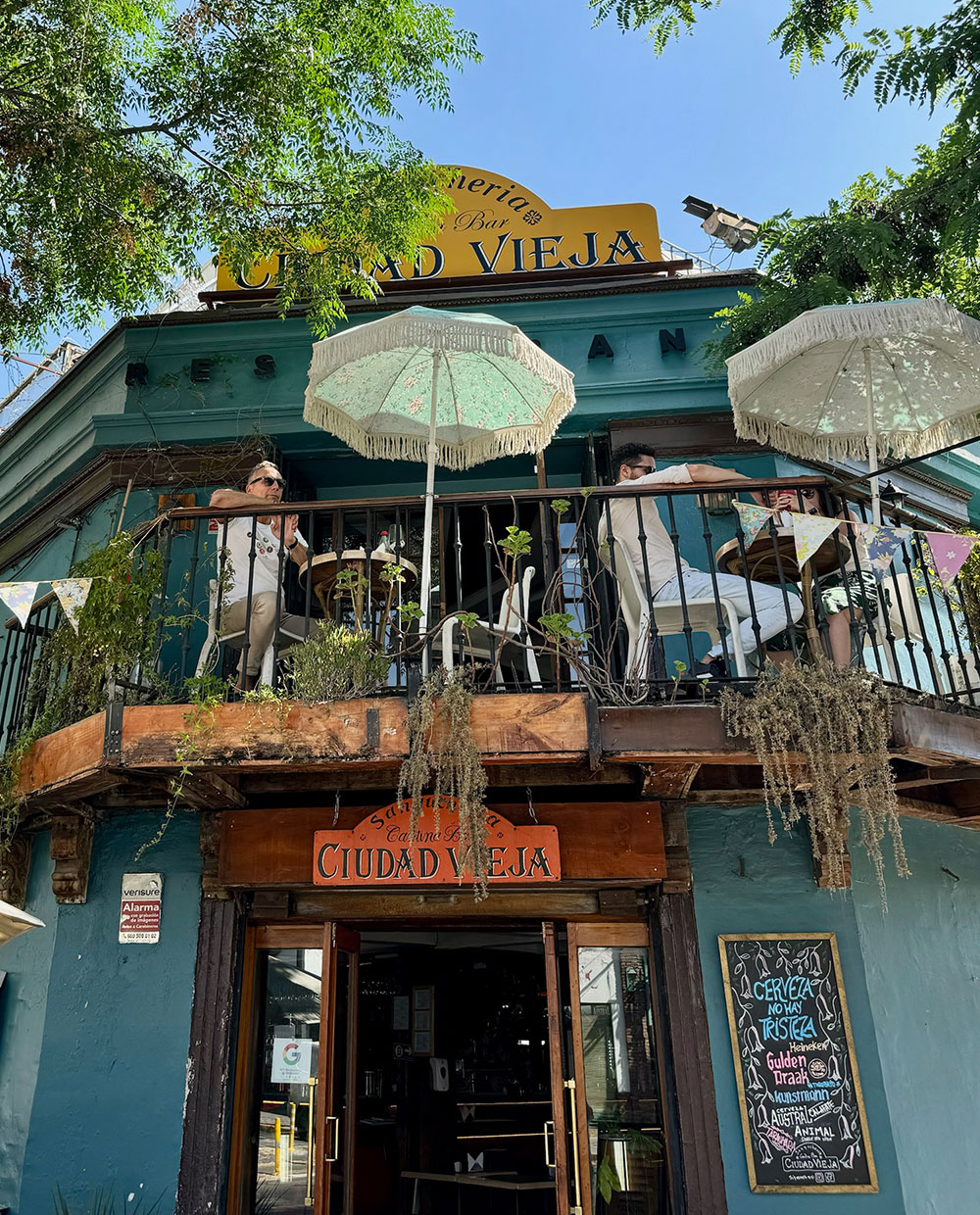
Chipe Libre - República Independiente del Pisco
Chipe Libre is a buzzy bar in Lastteria that has an extensive drinks menu celebrating pisco in all its forms. In addition to creative cocktails, we also enjoyed some delicious light bites.
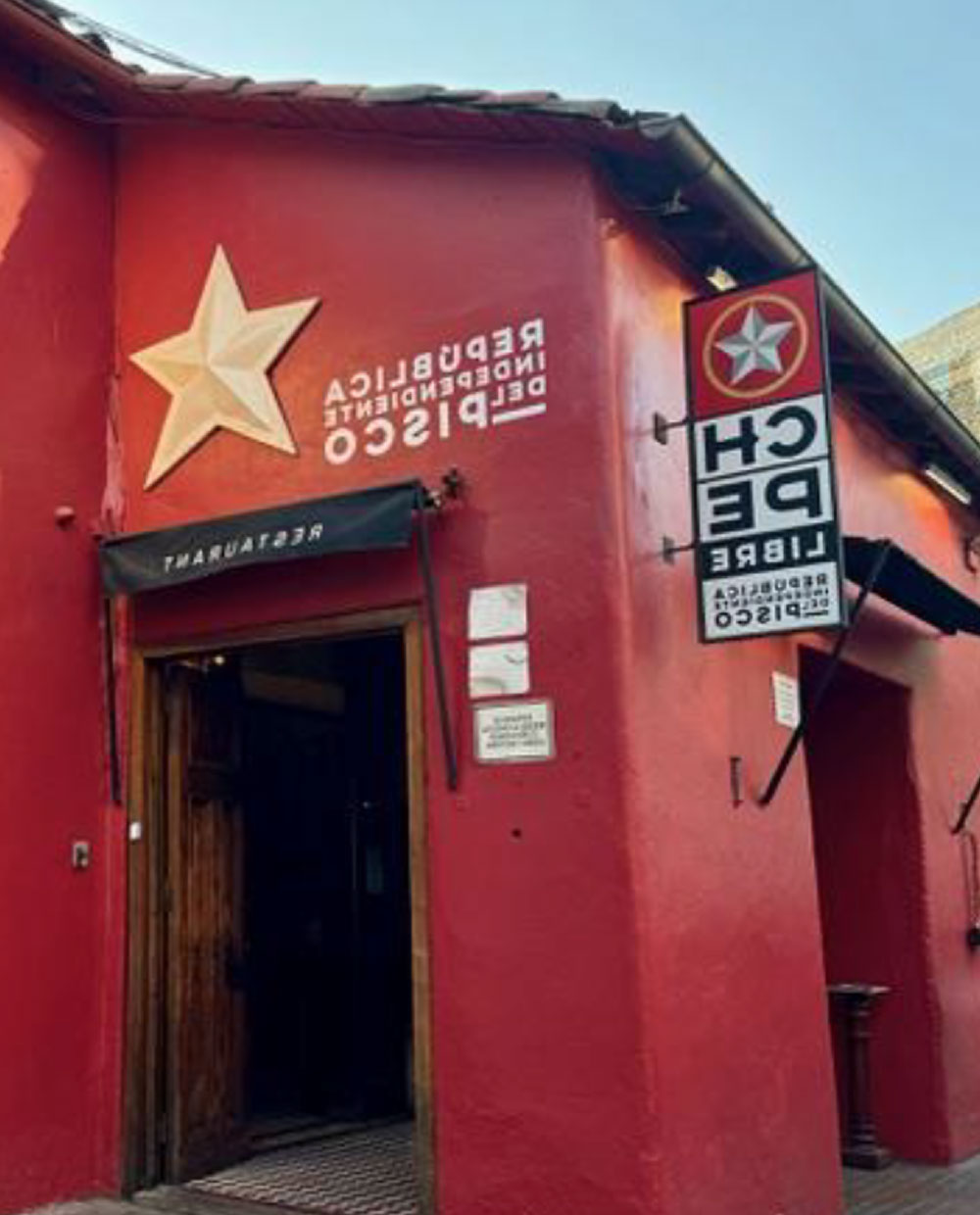
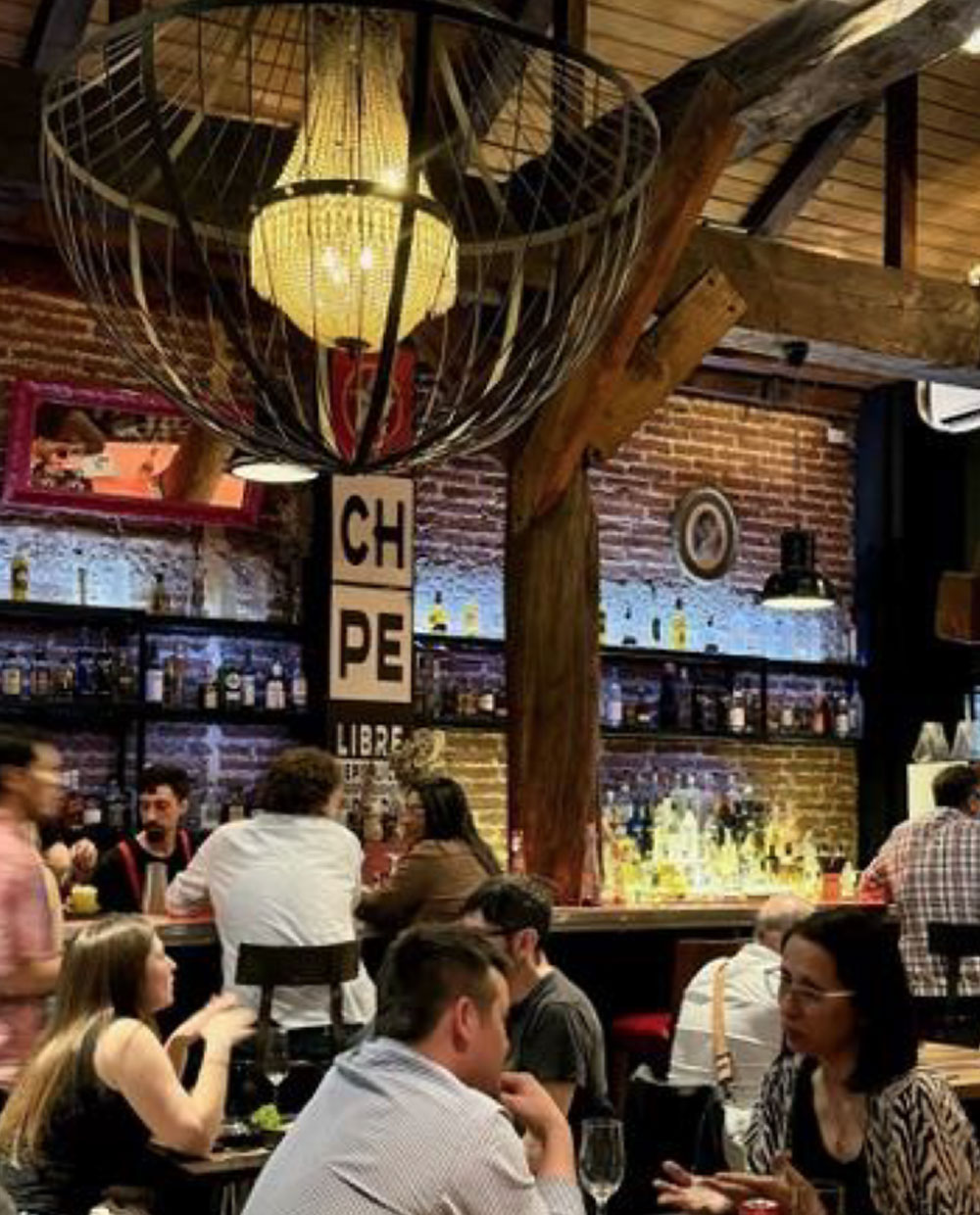
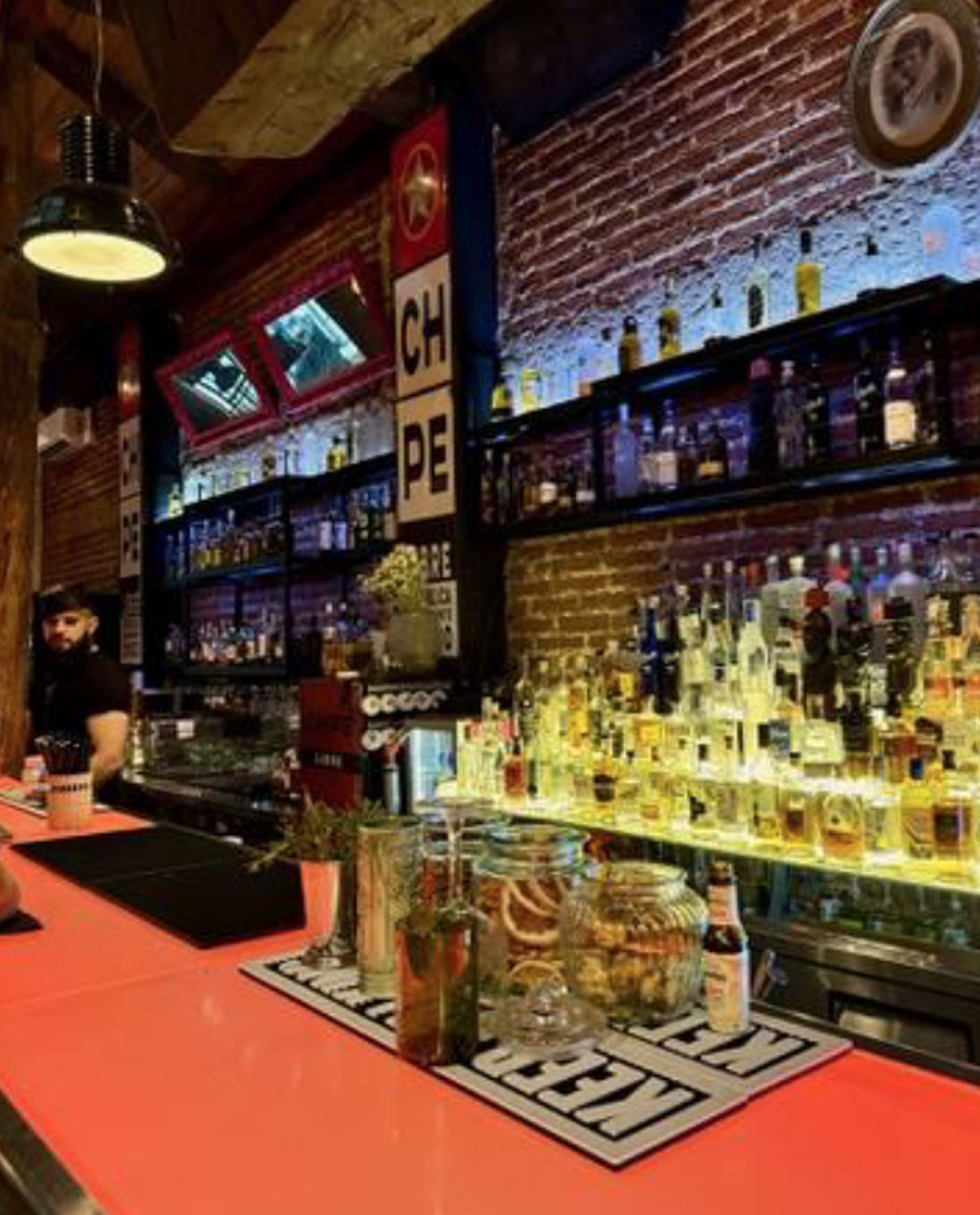
Bocanáriz
If you’re a wine lover, you’ll be in paradise at Bocanáriz! This lively Lastteria wine bar has a mind-boggling selection of wines and does wine flights of 3 small glasses for only $7! There is also a menu of creative cuisine to accompany your selection of wines.
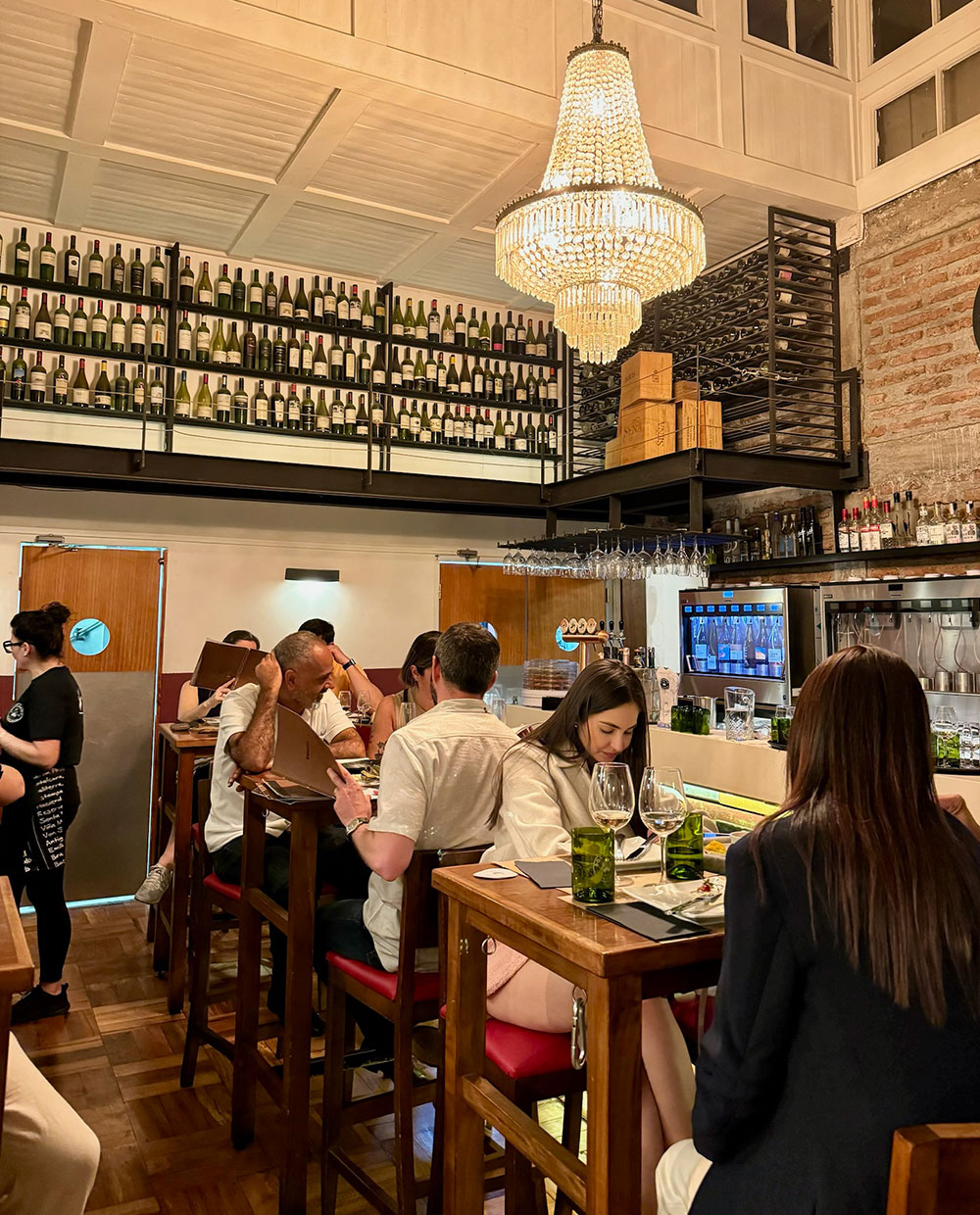
Castillo Forestal
We didn’t have time to dine at Castello Forestal but likes the look of the terrace, with views over the greenery of the Parque Forestal.
Atacama Desert
From Santiago we flew north to the The Atacama Desert, one of the most extraordinary travel destinations we’ve visited. As the driest desert in the world, it offers an otherworldly beauty, with shimmering lagoons, towering volcanoes and dramatic red-rock formations. Simply driving around is a non-stop show of amazing landscapes like the one below.
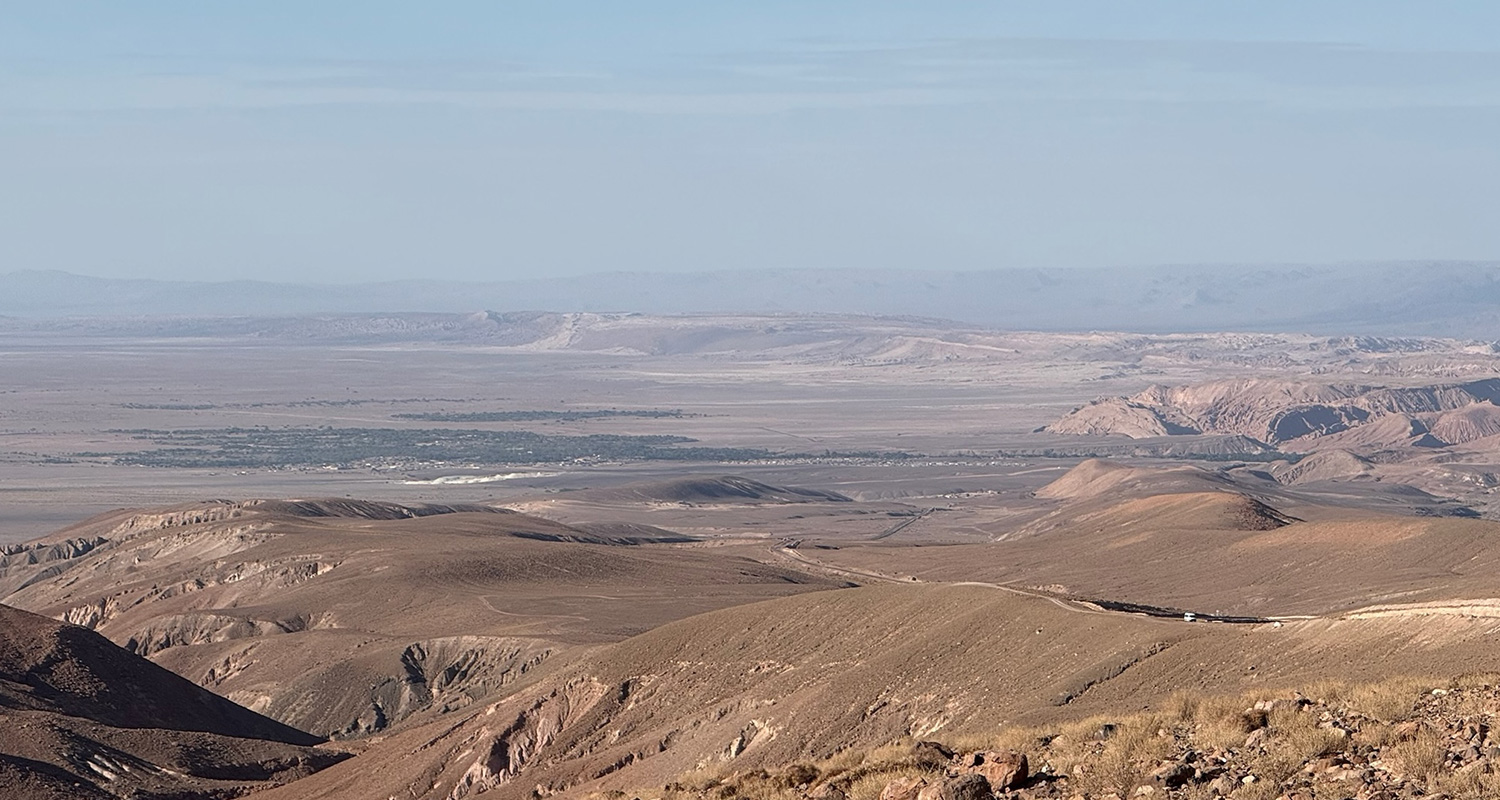
Stay
Explora Atacama
Explora Atacama is situated on a 17-hectare desert estate, an oasis amidst the rugged landscapes of the Atacama Desert. It is a 15 minute walk from the little town of San Pedro de Atacama. We liked the contemporary interior design, with lots of wood, leather and stone echoing the surrounding terrain. There is a spacious bar and lounge area and a terrace with outdoor sofas and also seating for lunch and breakfast.

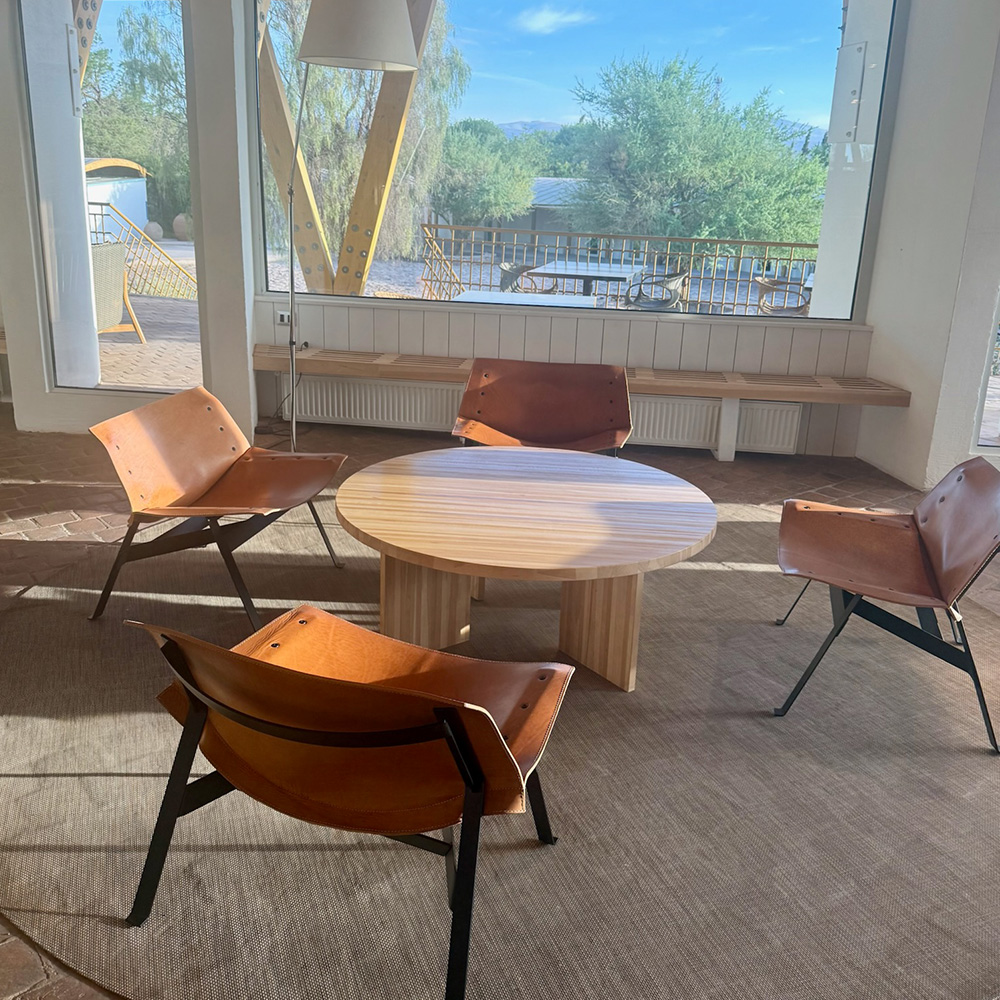
The lodge’s rooms are colourful and feature local textiles. We paid a bit more to have a Yali room with large window with views of the gardens and the famous Licancabur in the distance.
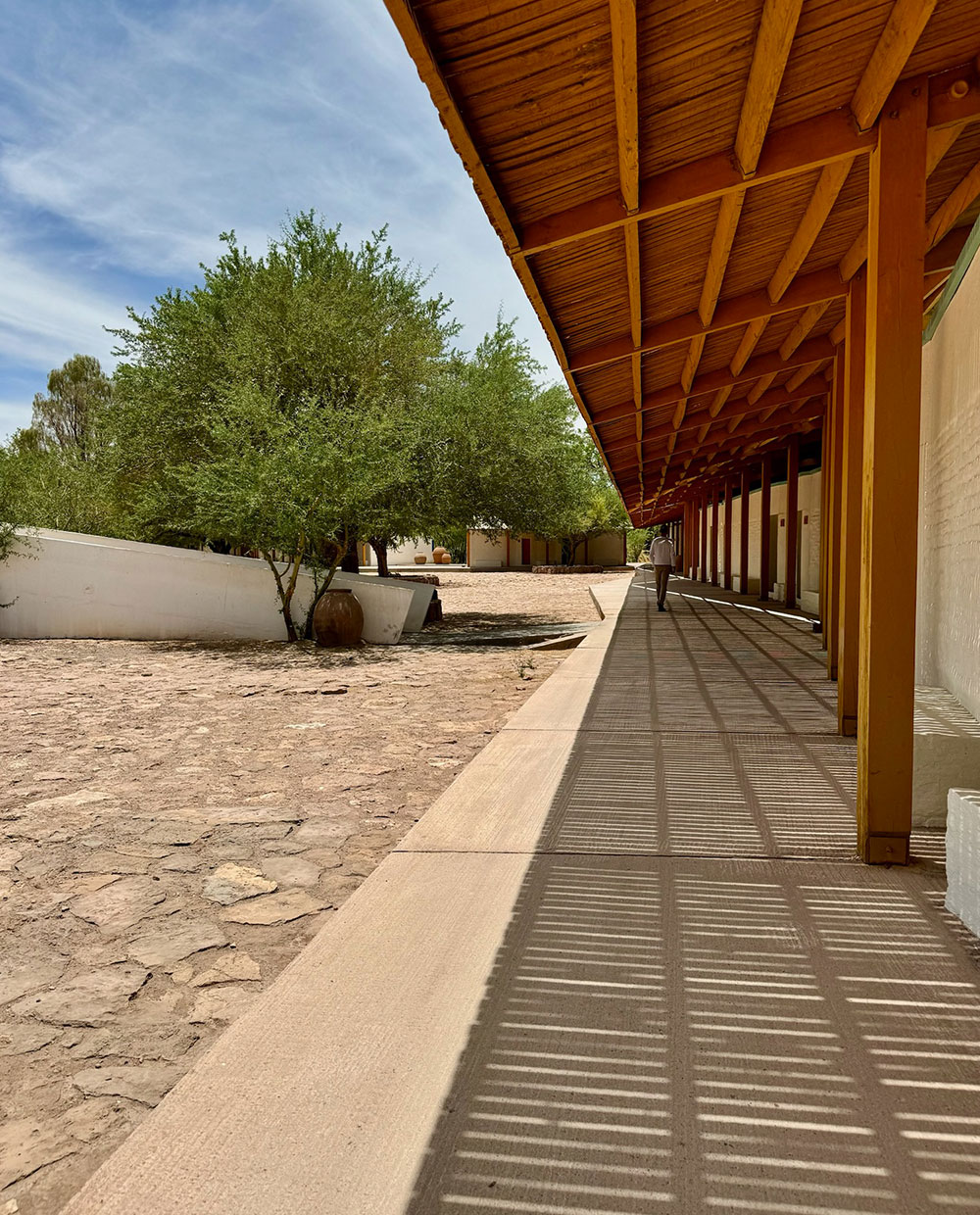
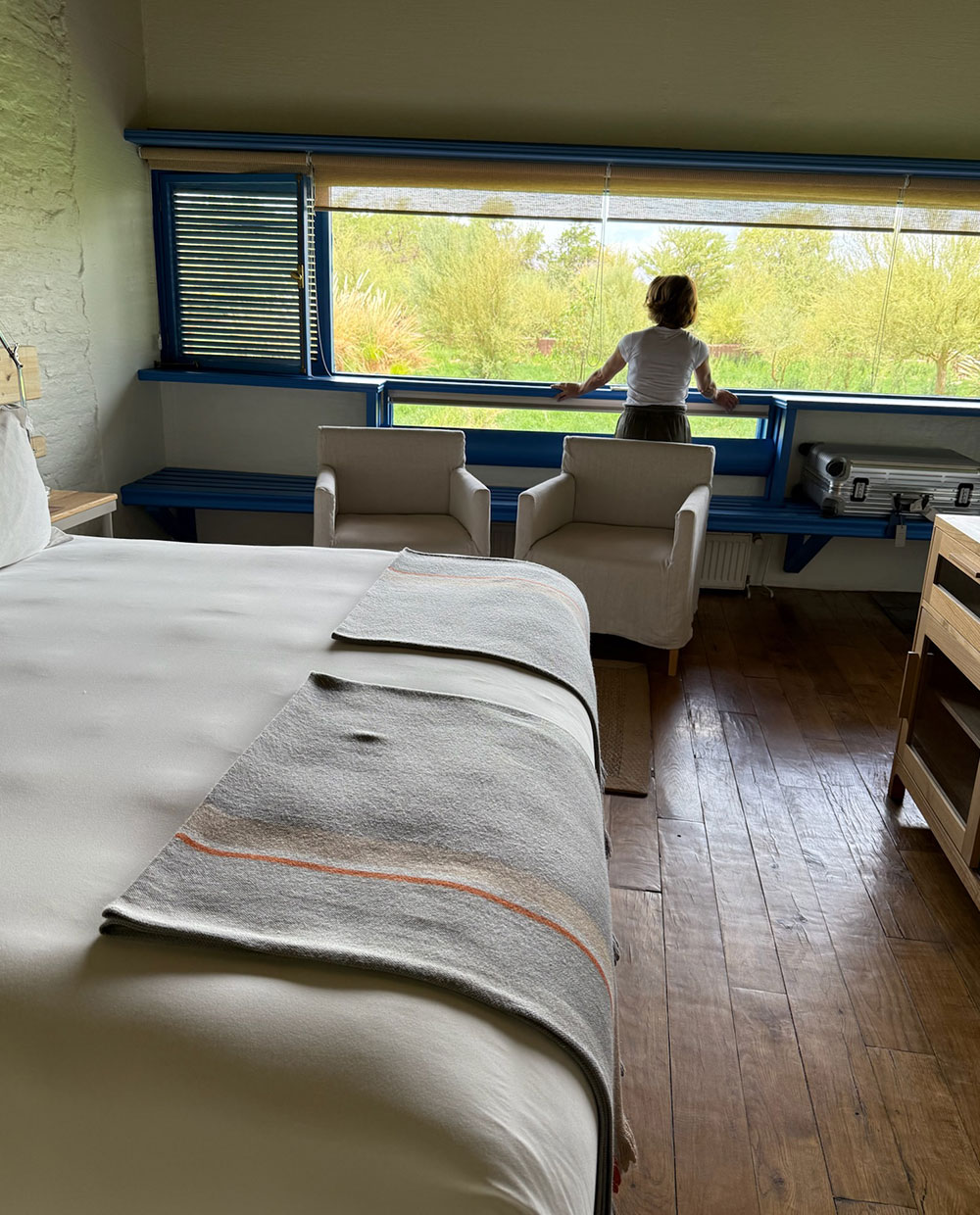
Dining at Explora Atacama was a culinary journey with the menu a celebration of local ingredients. The menu was crafted by Virgilio Martínez, the chef of Central in Lima which has been named the world’s best restaurant.
For relaxation, the lodge has three outdoor pool that we used on one afternoon between explorations. There is also a spa and jacuzzi that we were too busy to try!
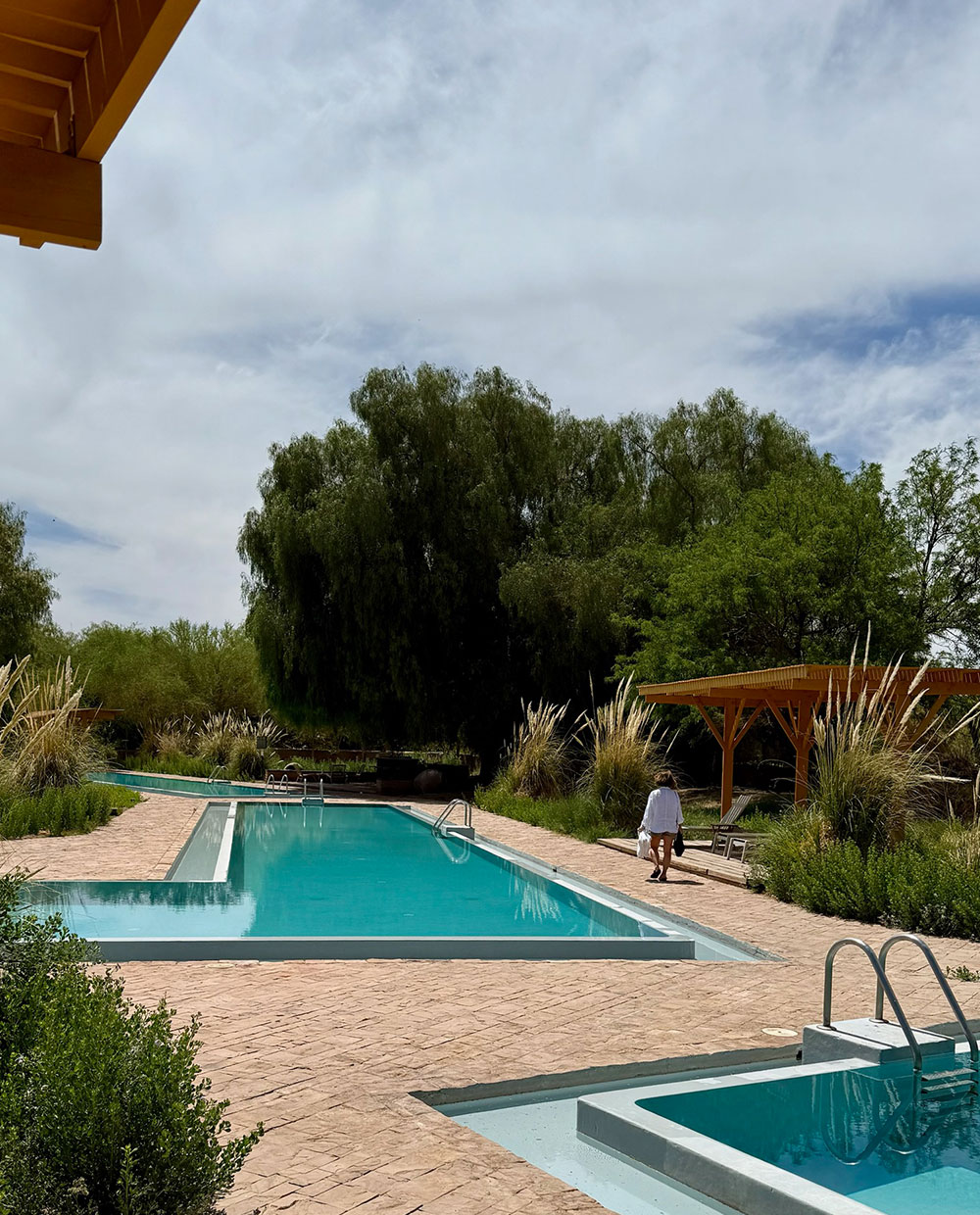
See & Do
Luxury lodges tend to offer a menu of explorations as part of the overall package. At Explora there were over 40 guided activities, ranging from easy walks to more challenging treks and cycling routes. Each exploration was led by an expert bilingual guide with deep knowledge of the area’s geology, history and ecosystems.
You can also book the tours below on a private basis from one of the many tour operators in San Pedro de Atacama
Moon Valley
We started our stay by driving to see the surreal, lunar-like landscape of Moon Valley. The sheer scale of the valley and the vibrant hues as the sun started to set meant it lived up to its reputation as one of the most iconic attractions in the Atacama Desert.
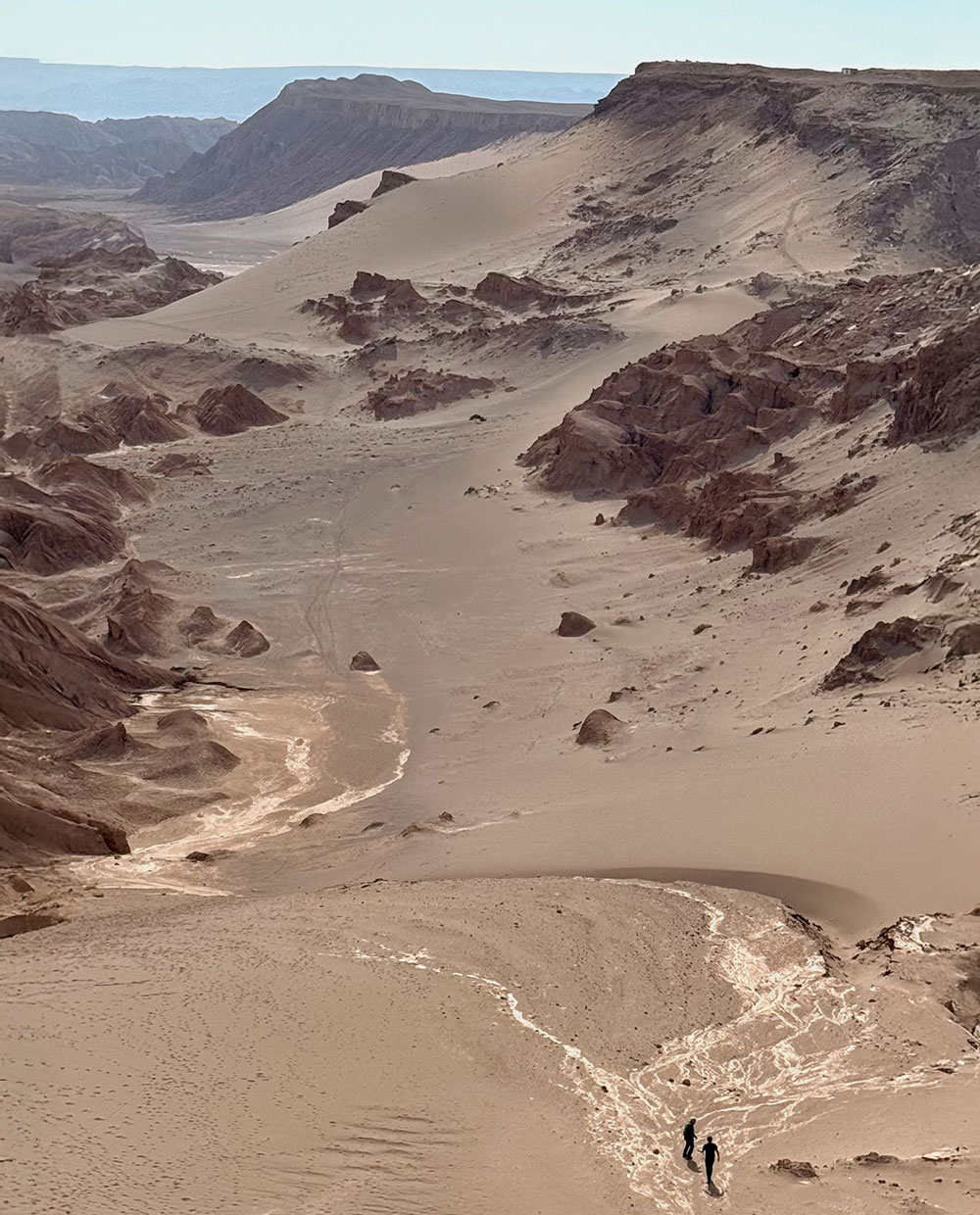
Mars Valley
We finished our first day with a short hike along a cliffside with breathtaking views of the Mars Valley, a dramatic terrain with jagged, red-tinged cliffs.
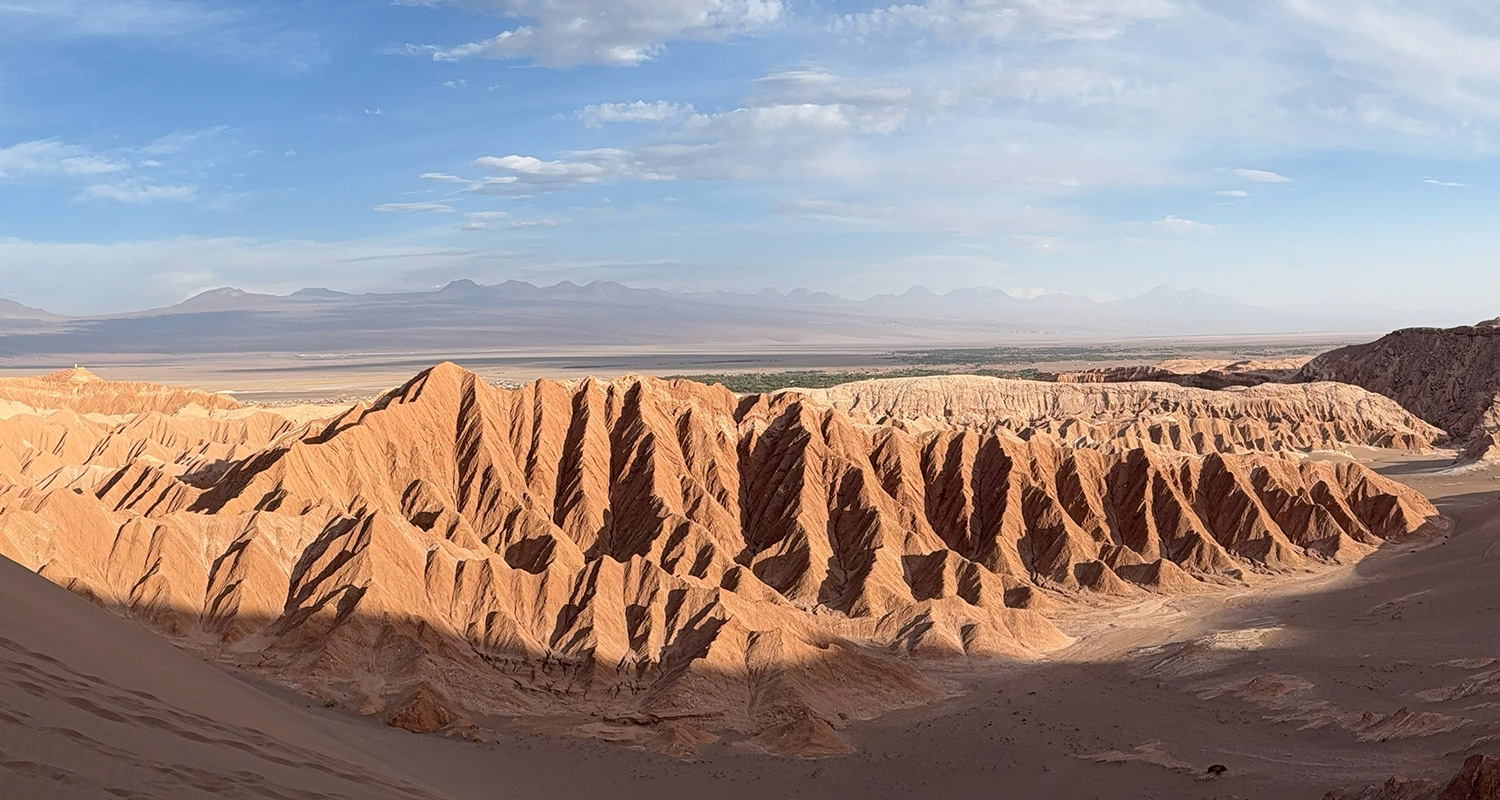
At the end of the clifftop hike we arrived at the top of an enormous sand dune that we half walked, half ran down. We then walked through the valley itself to end this part of the trip.
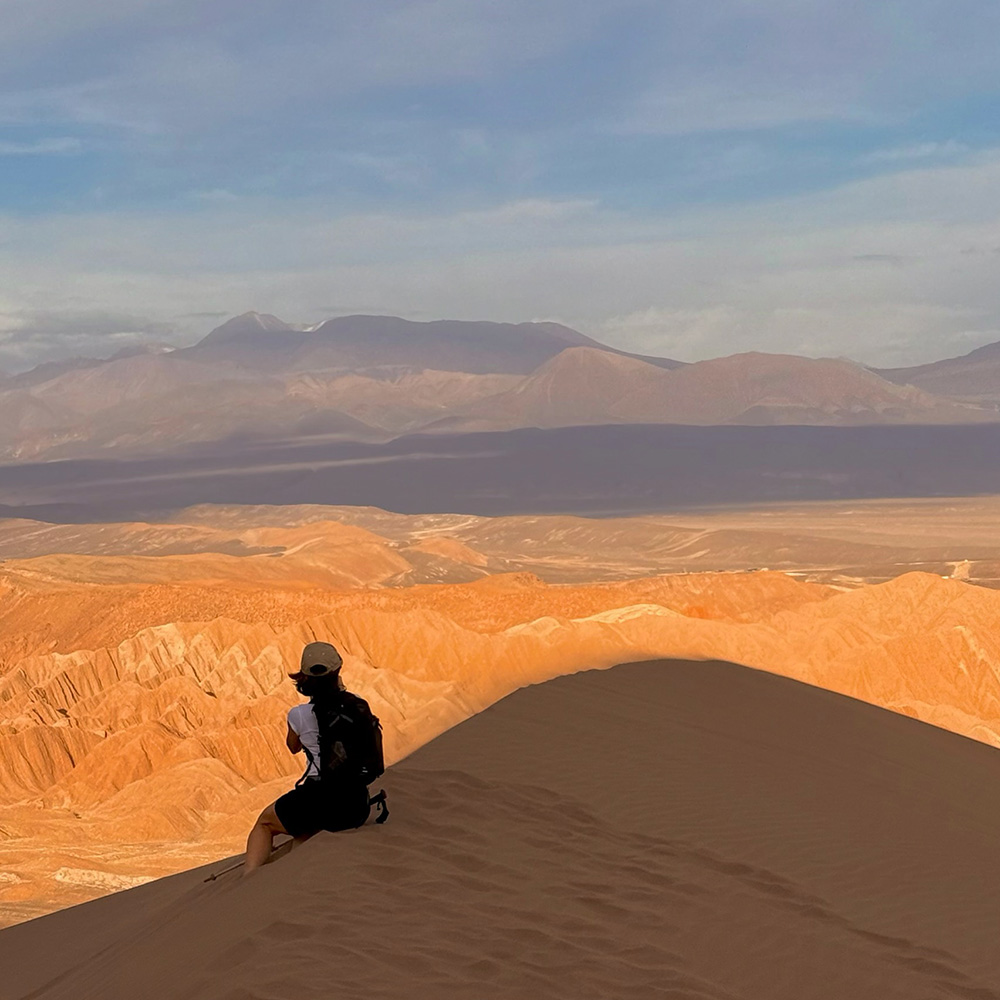

Puritama - Jorquencal canyon
On our second day we did a hike that explored the centre of the Puritama Conservation Reserve, an area characterized by its great variety of cacti. The trail wound along the edge of the Jorquencal canyon, with sweeping views of the canyon’s jagged cliffs and lush green vegetation fed by hidden springs. We descended along a rocky terrain until we reached the Puritama hot springs.
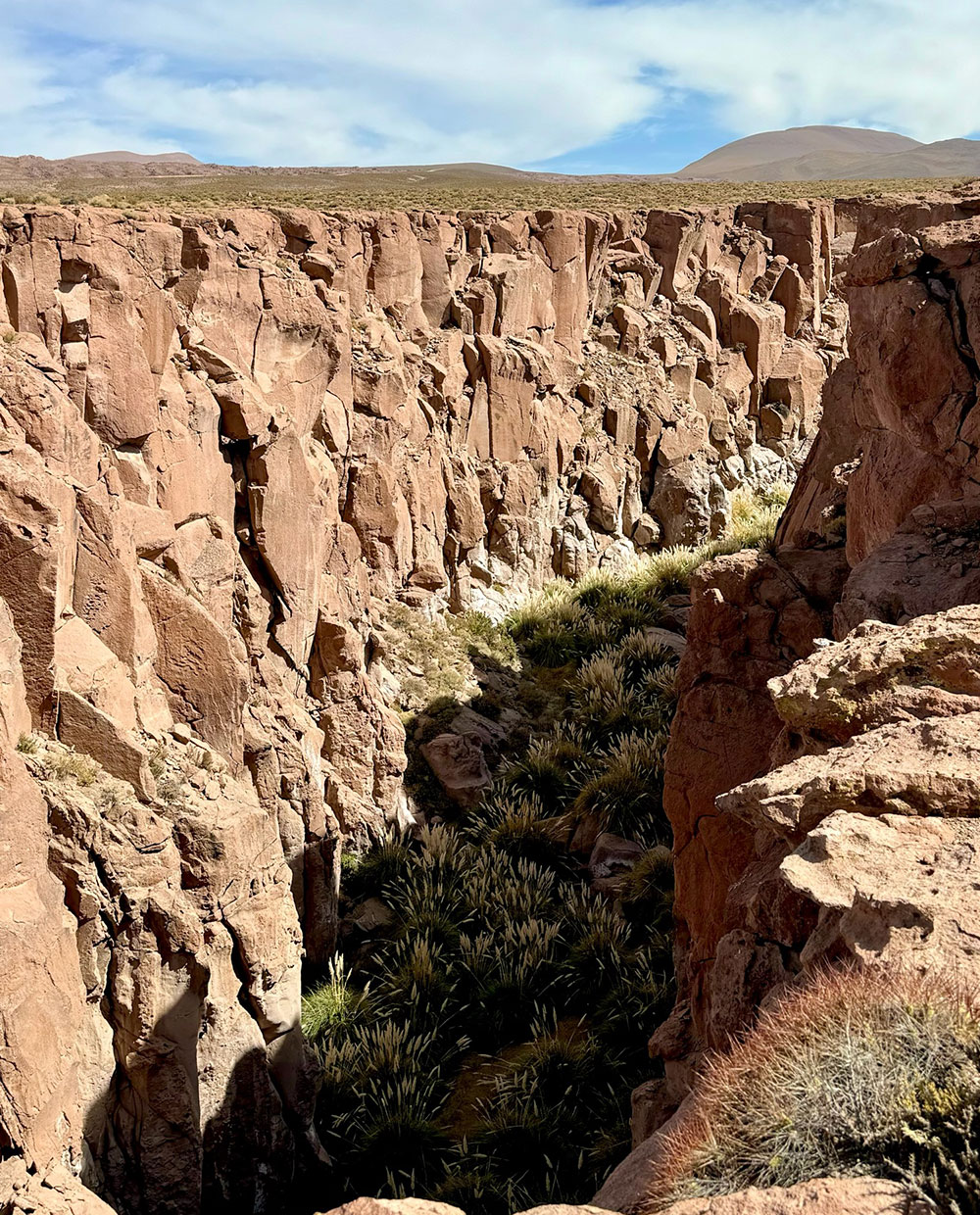
Puritama hot springs
The Puritama natural hot springs are a series of naturally occurring thermal pools fed by subterranean volcanic waters. The springs are surrounded by desert flora and offer a striking contrast to the rugged terrain. A bonus of staying at the Explora is that they have two private pools away from the public areas. And to make things even more special, there was a picnic lunch and drinks ready to reward us at the end of our hike!
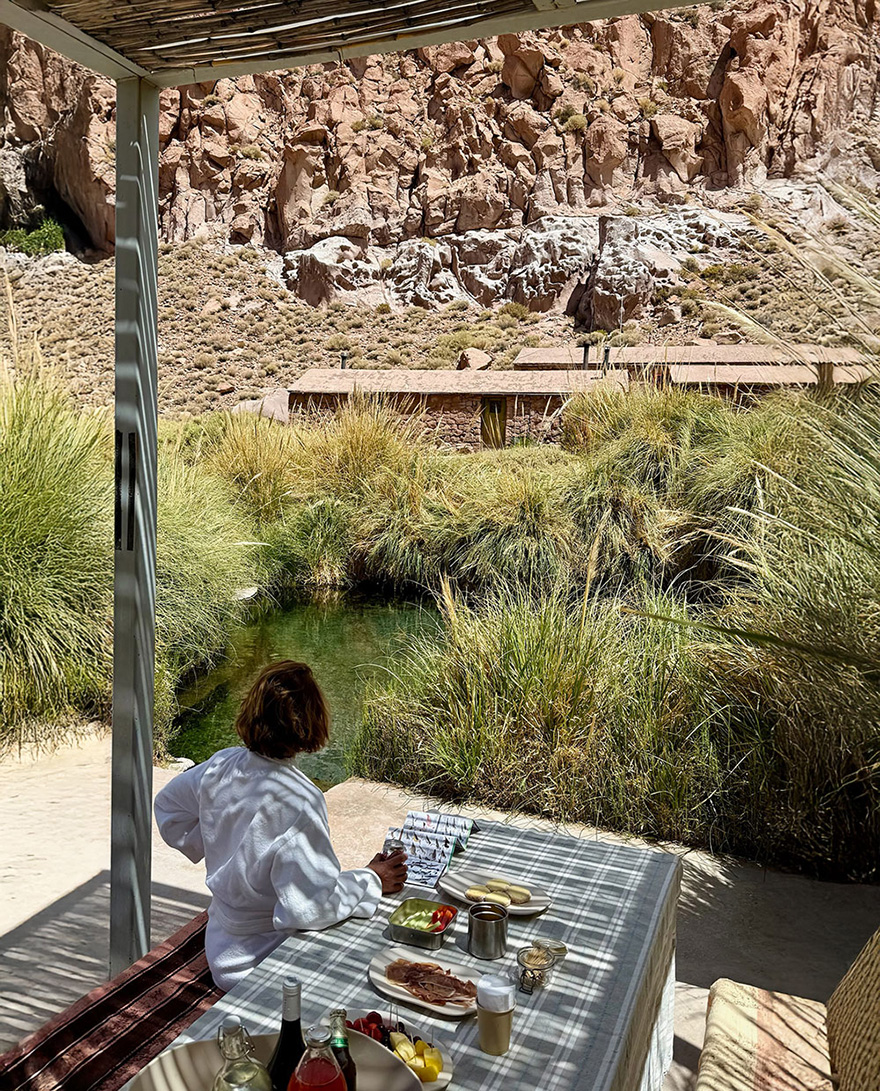
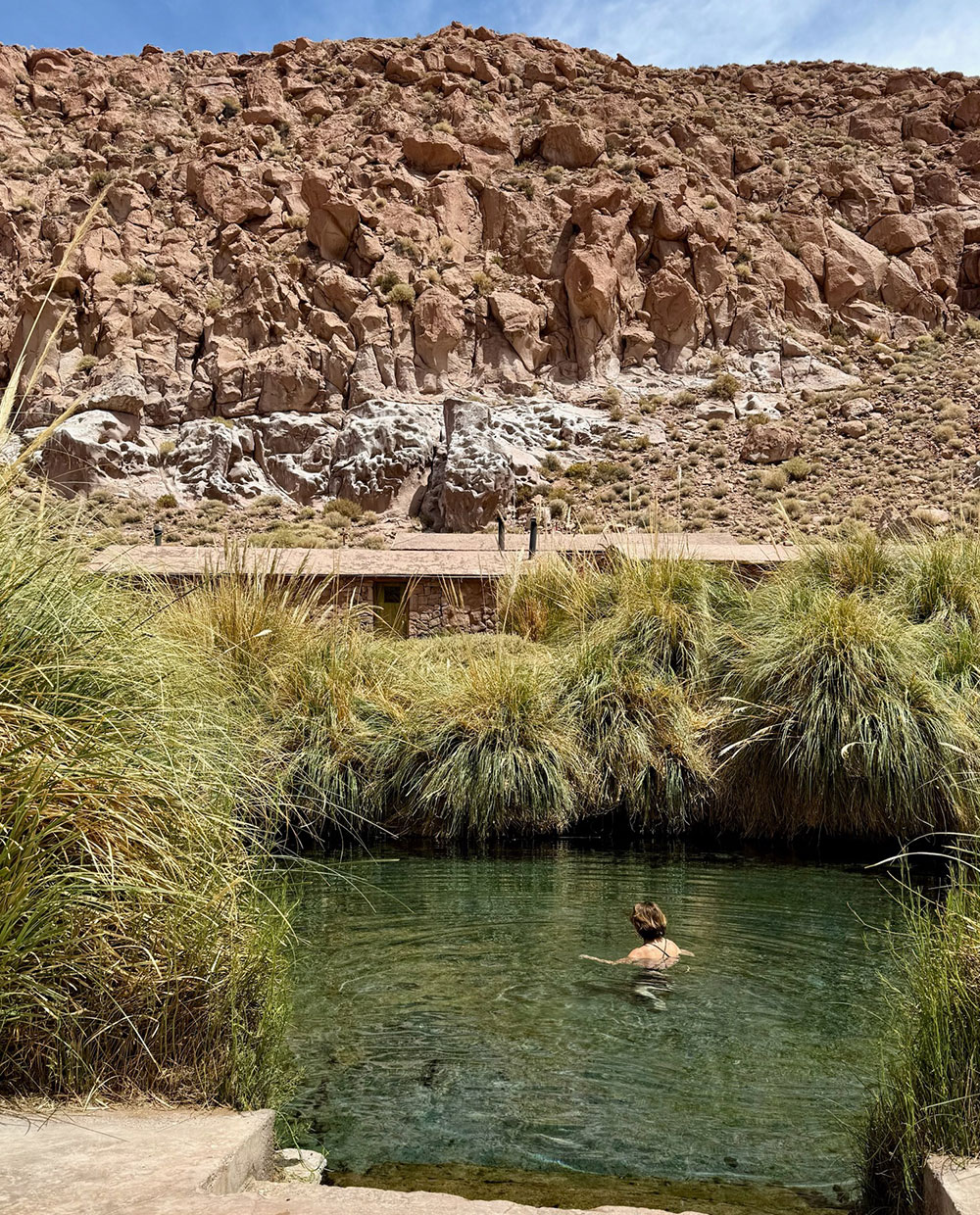
El Tatio hot springs
On our third day, we drove c. two hours north of San Pedro de Atacama to the El Tatio hot springs. Here, there are over 80 active geysers and thermal pools, many of which are still bubbling with hot water and steam. To note, the geyser activity peaks at sunrise when the air is cooler, with the contrast between the steam and the crisp morning air creating more of a show.
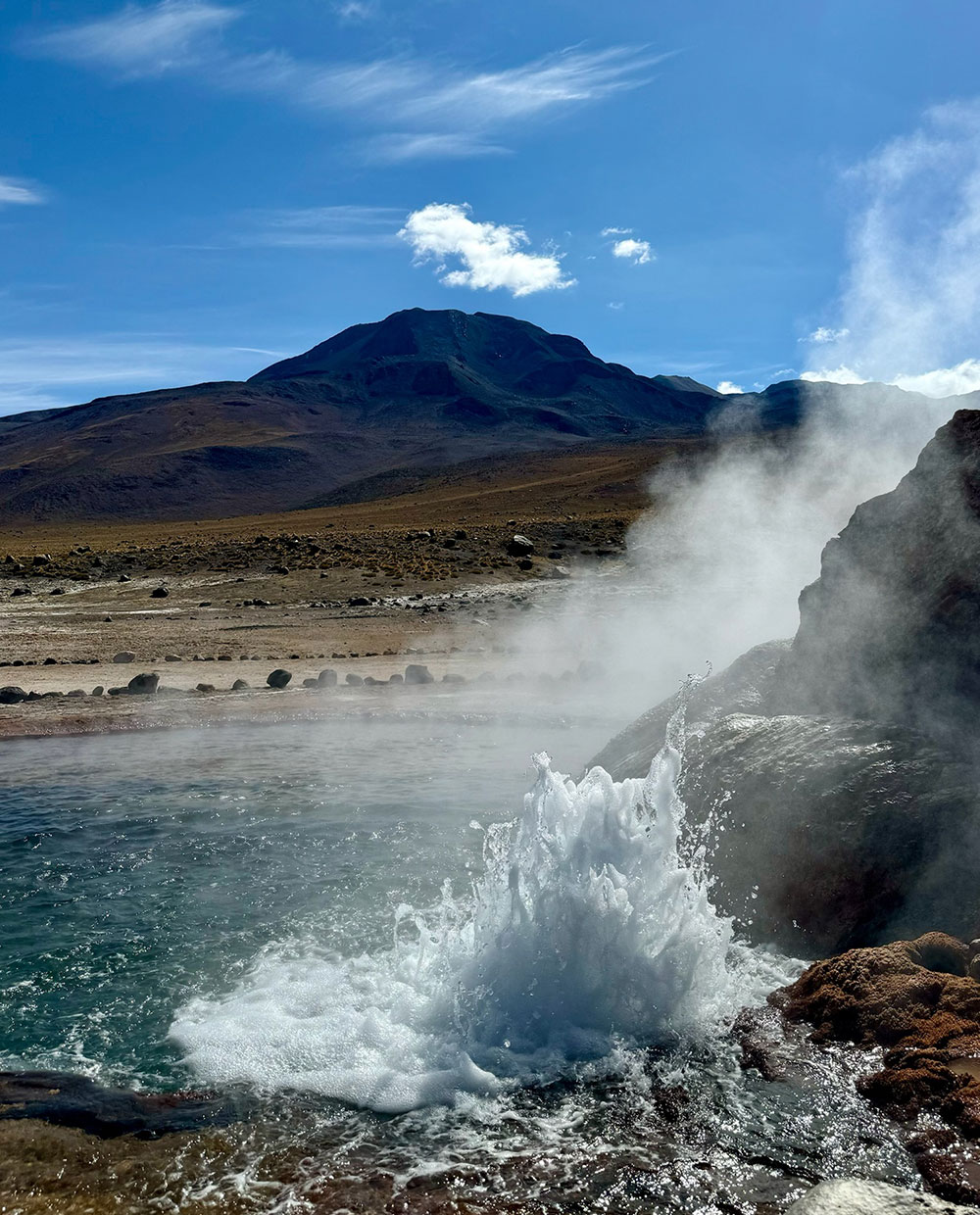
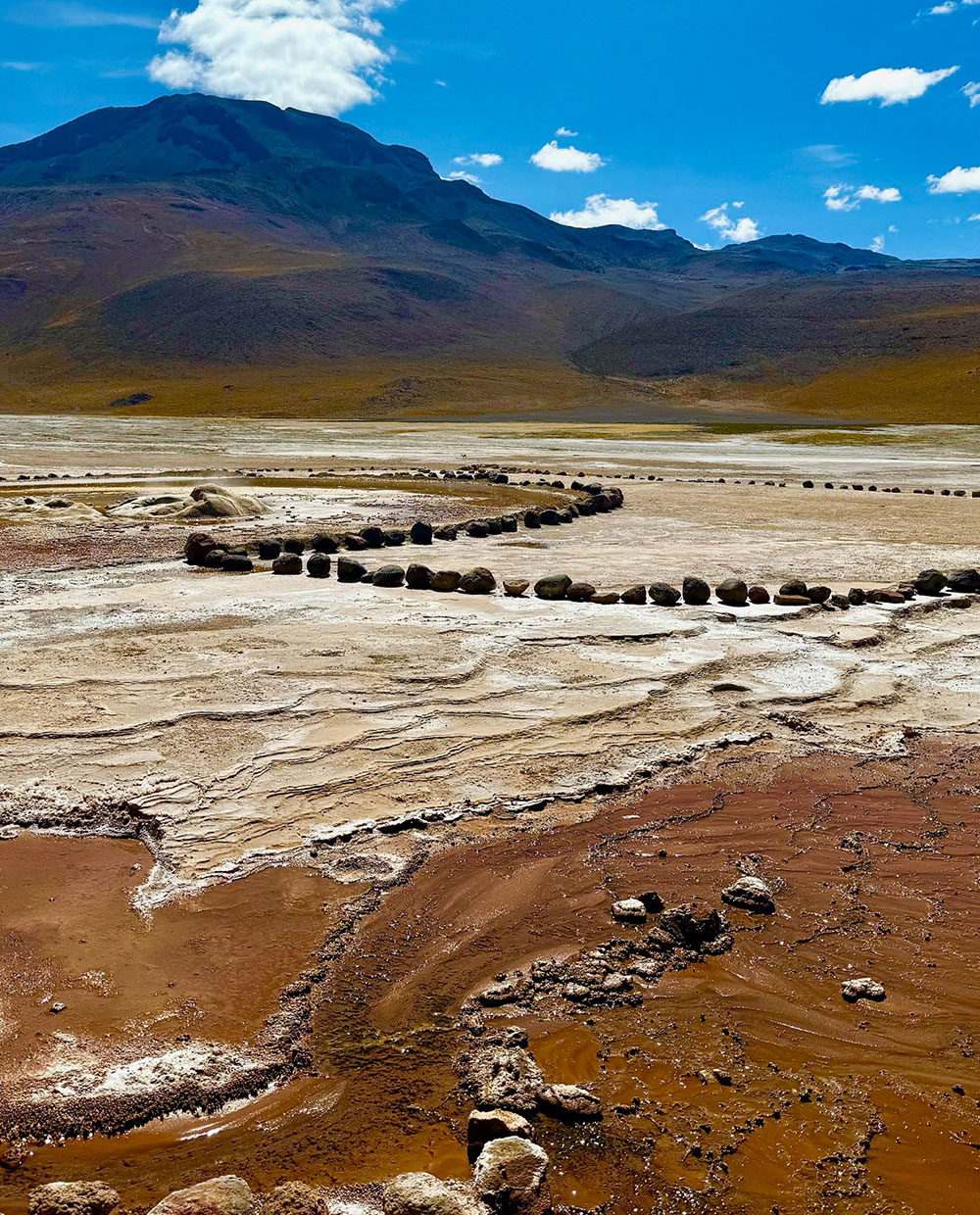
Vado Río Putana
We visited Vado Río Putana on the way back from the El Tatio hot springs. It is a natural wetland oasis, with the river’s clear waters and lush vegetation creating a stark contrast to the surrounding volcanic plains and barren mountains. The area is a vital habitat for diverse wildlife including flamingos, vicuñas, ducks, and other bird species.
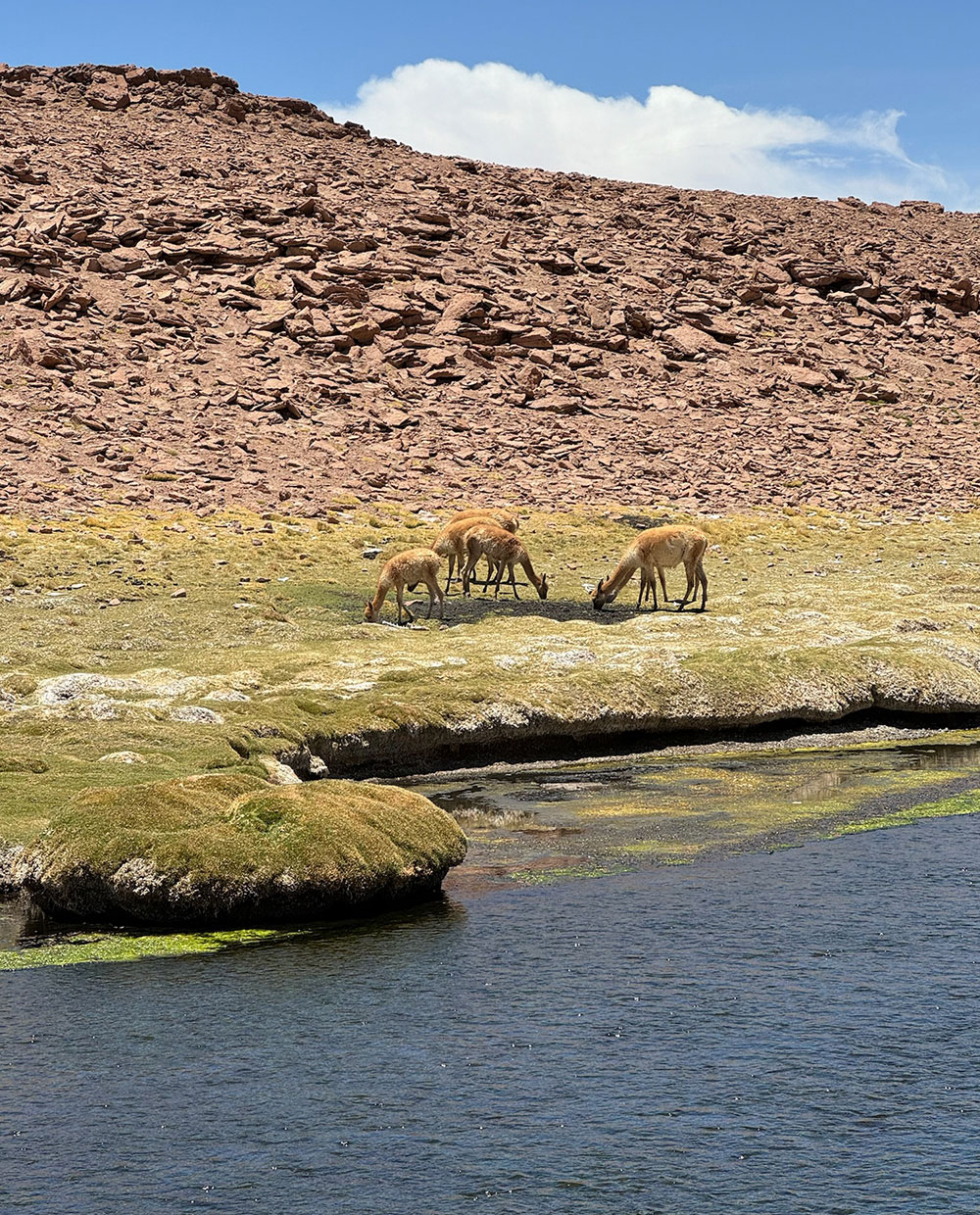
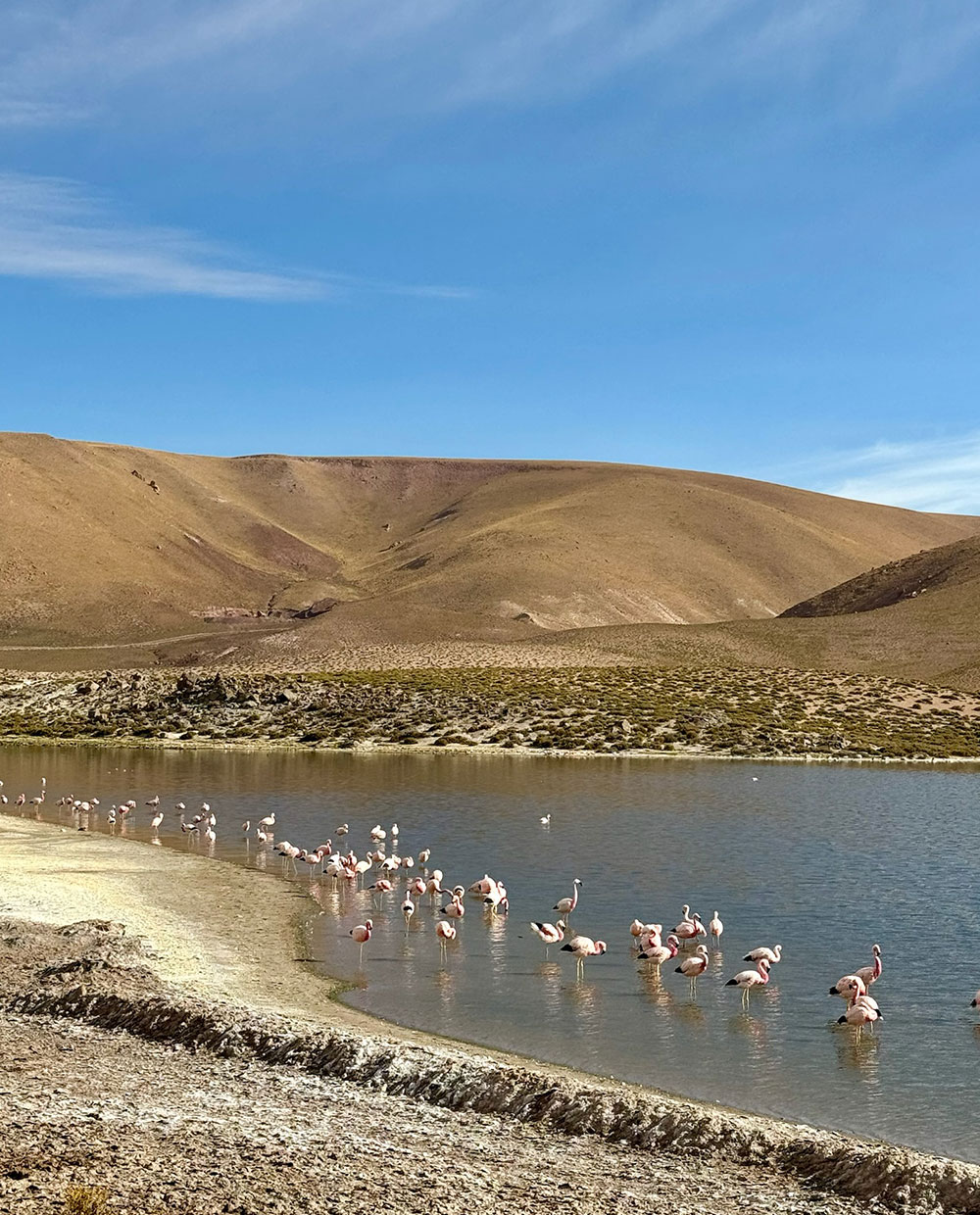
Devils Canyon bike ride
We ended our third day with an exhilarating bike ride through Devils Canyon. The canyon features narrow, winding paths carved by ancient water flows, surrounded by towering sandstone cliffs and rugged rock formations. On this adrenaline-filled journey you twist and turn through these paths, with sandy tracks but also steep inclines and descents; not for the faint of heart!
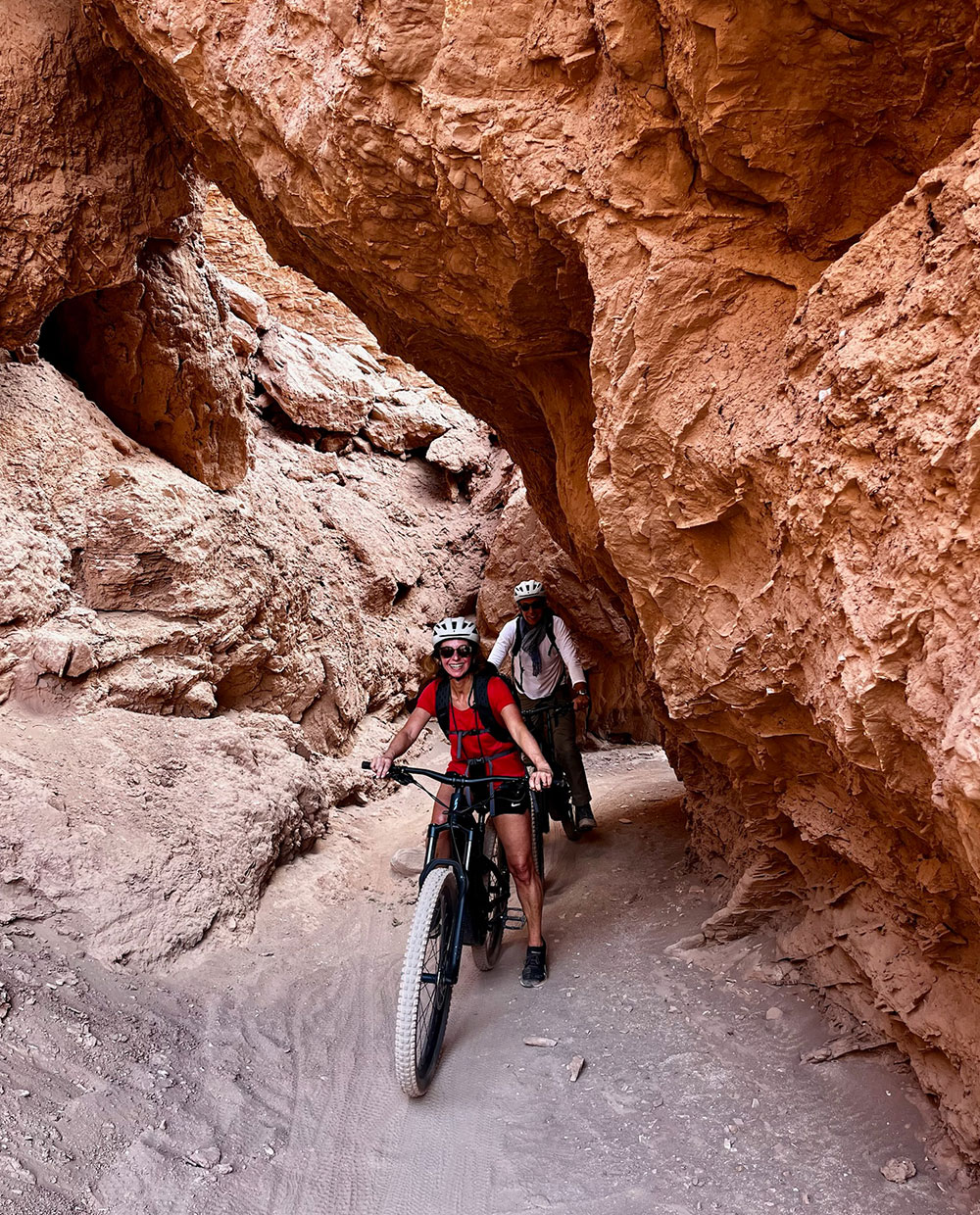
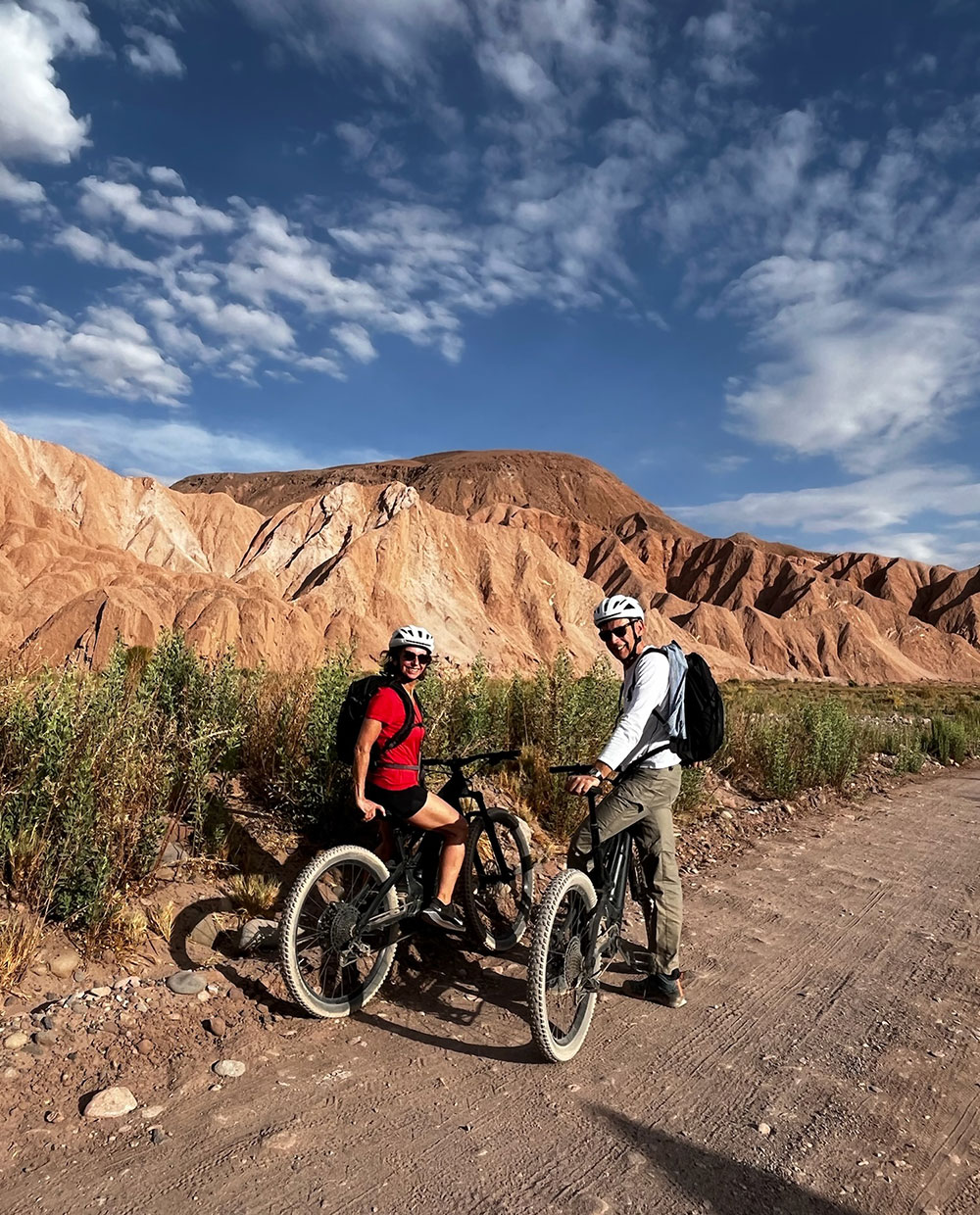
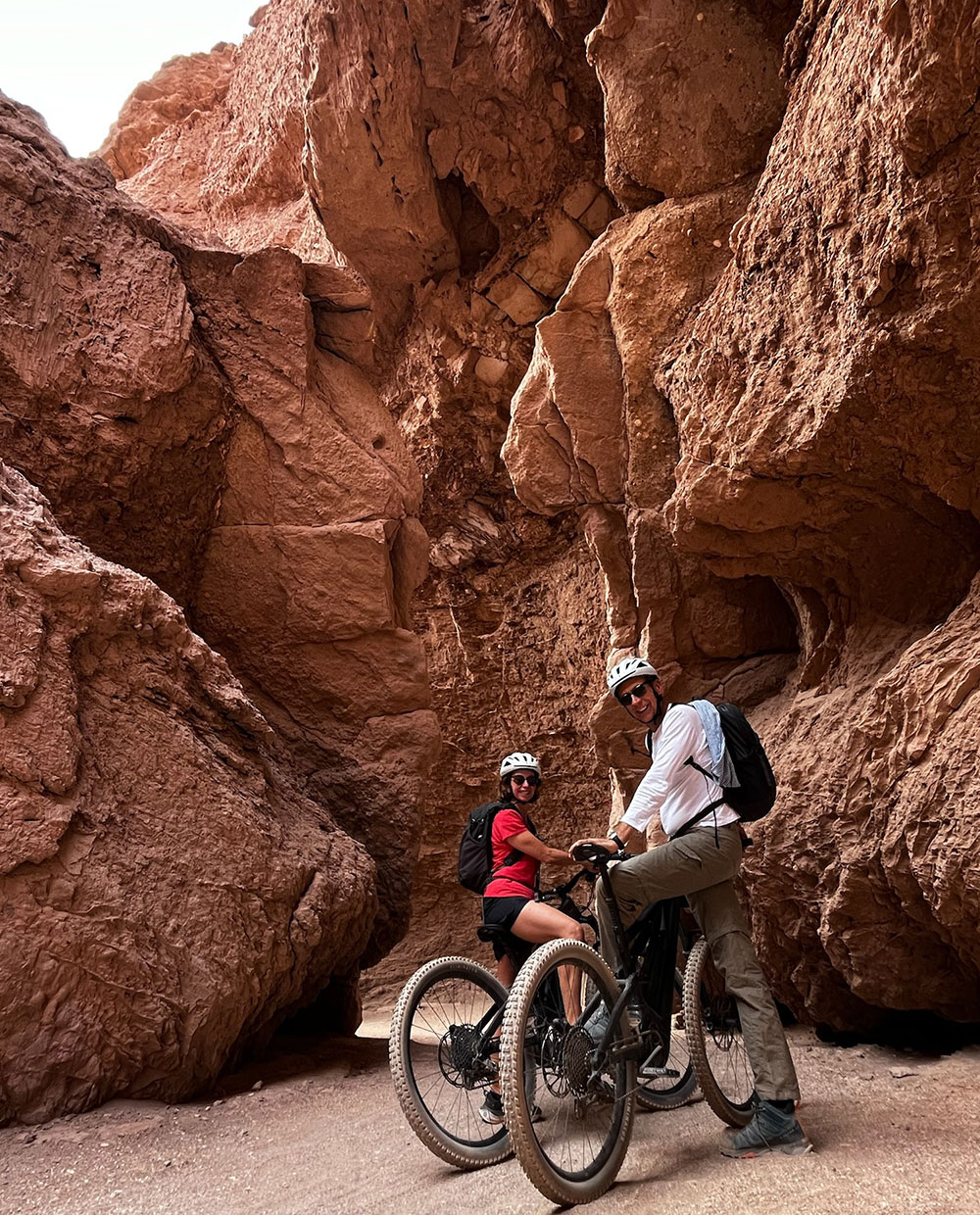
“Travesia” crossing to Salar De Uyuni, Bolivia
The crossing from Atacama to the Uyuni salt flats has been a popular journey for many years and San Pedro is full of companies offering tours. These typically involve travel by 4×4 and stays in basic mountain lodges on the c.2 day journey.
Recently, Explora have taken things to a new, luxurious level with their “Travesía” exploration that we took. On this private expedition, we were accompanied by an expert Explora guide and a local driver. Along the way, we stayed at three strategically located lodges: the first overlooking the Ramaditas lagoon, the second further north in the mountainous Chituca area and the final one in Jirira overlooking the salt flats themselves (see below for map).

Stay
Explora Lodges
The lodges were truly stunning, in terms of setting, architecture and service. They were designed by the Chilean architect Max Núñez, whose objective was to build light places, small in size and low in height. The lodges look like small rows of stilted shipping containers. The industrial appearance belies the luxurious comfort inside, with wooden decor, cosy wool fabrics and sizeable bathrooms.
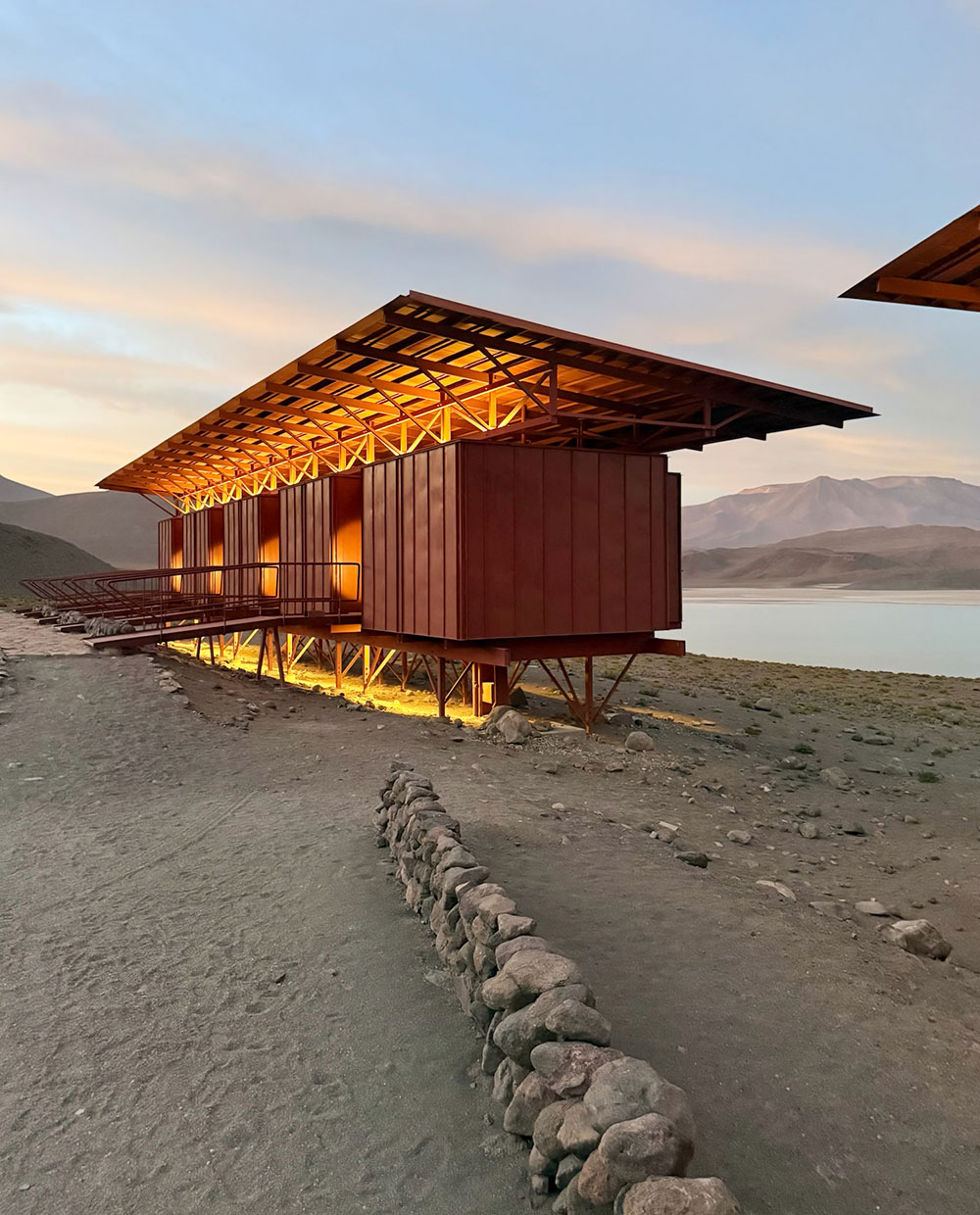
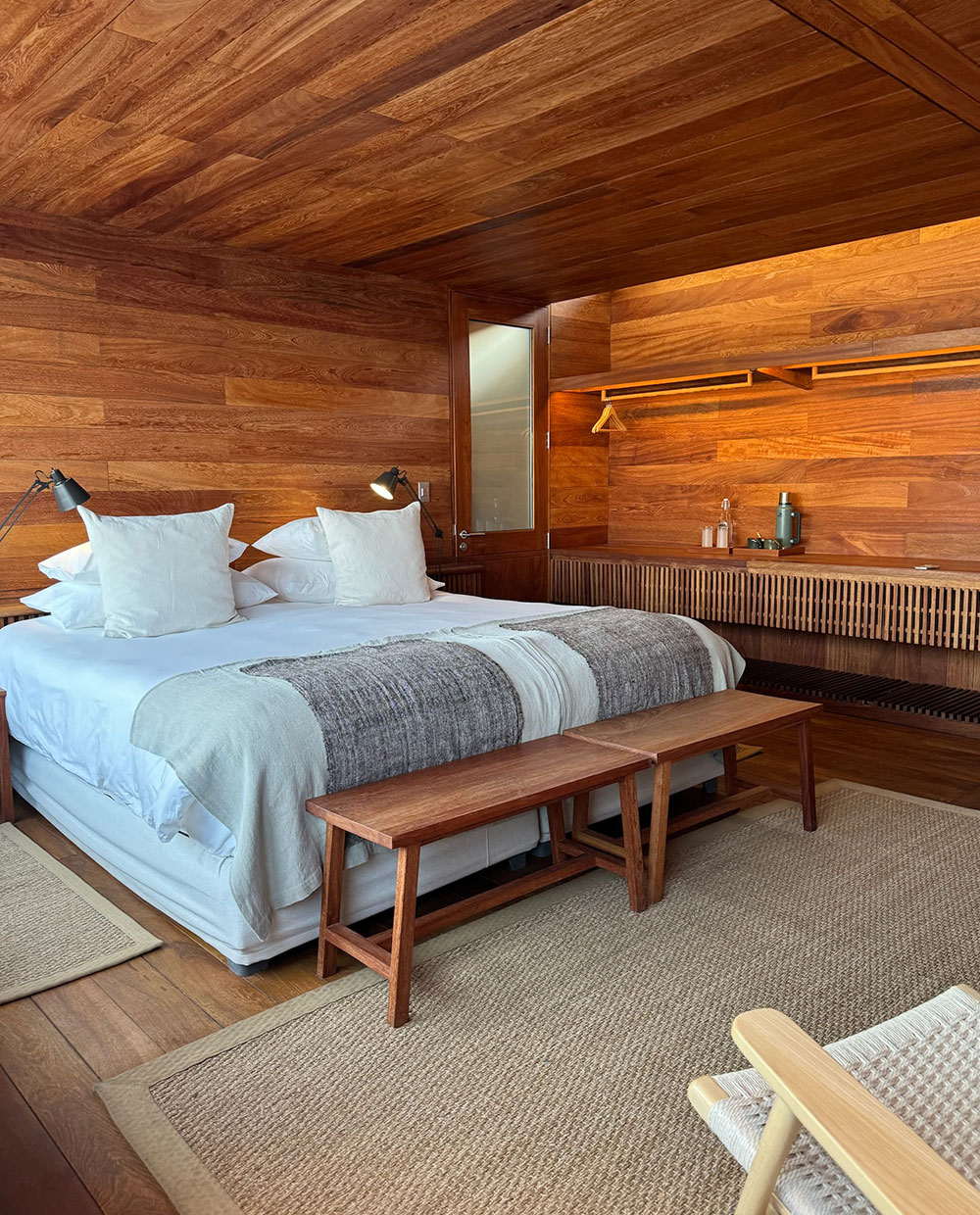
There are only four rooms in the first two lodges and six in the third, creating a sense of intimacy and privacy. We had stunning scenery from our bedroom windows in each lodge as you can see below (left: Ramaditas; middle: Chituca; right: Uyuni). Truly wow!
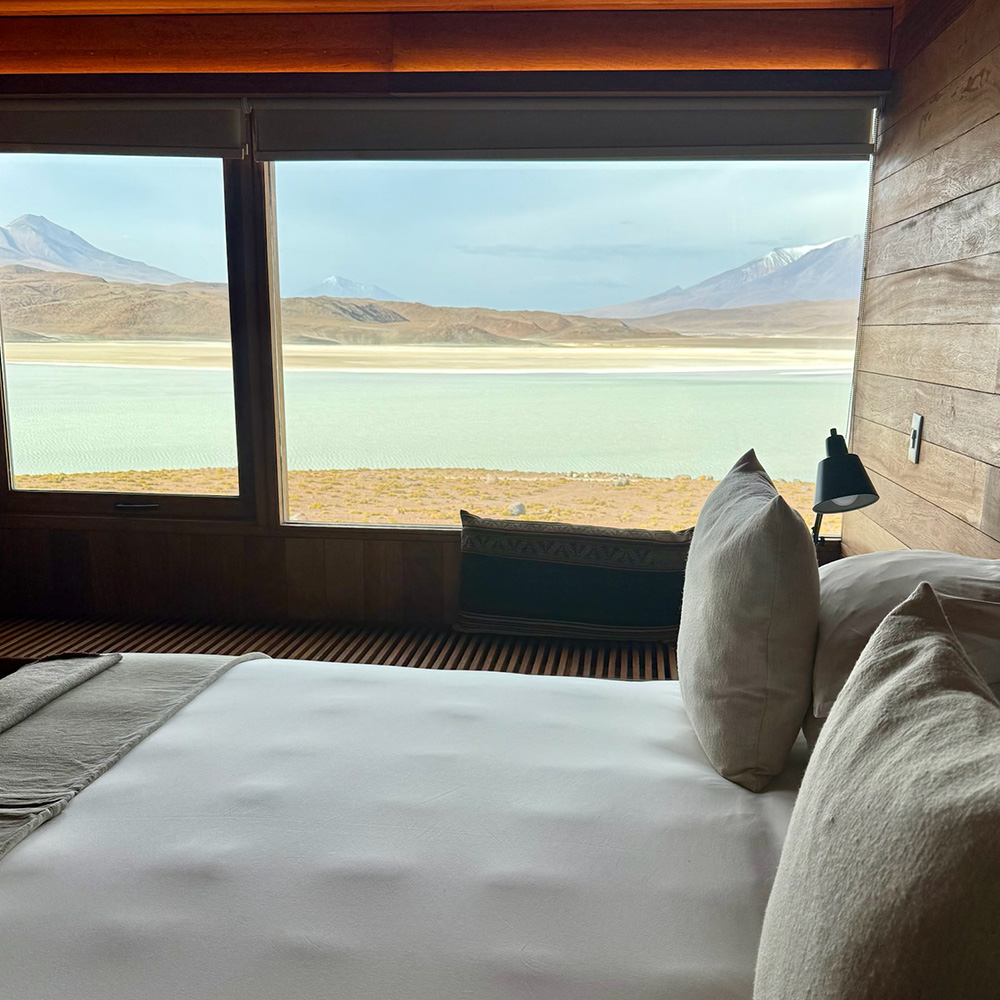
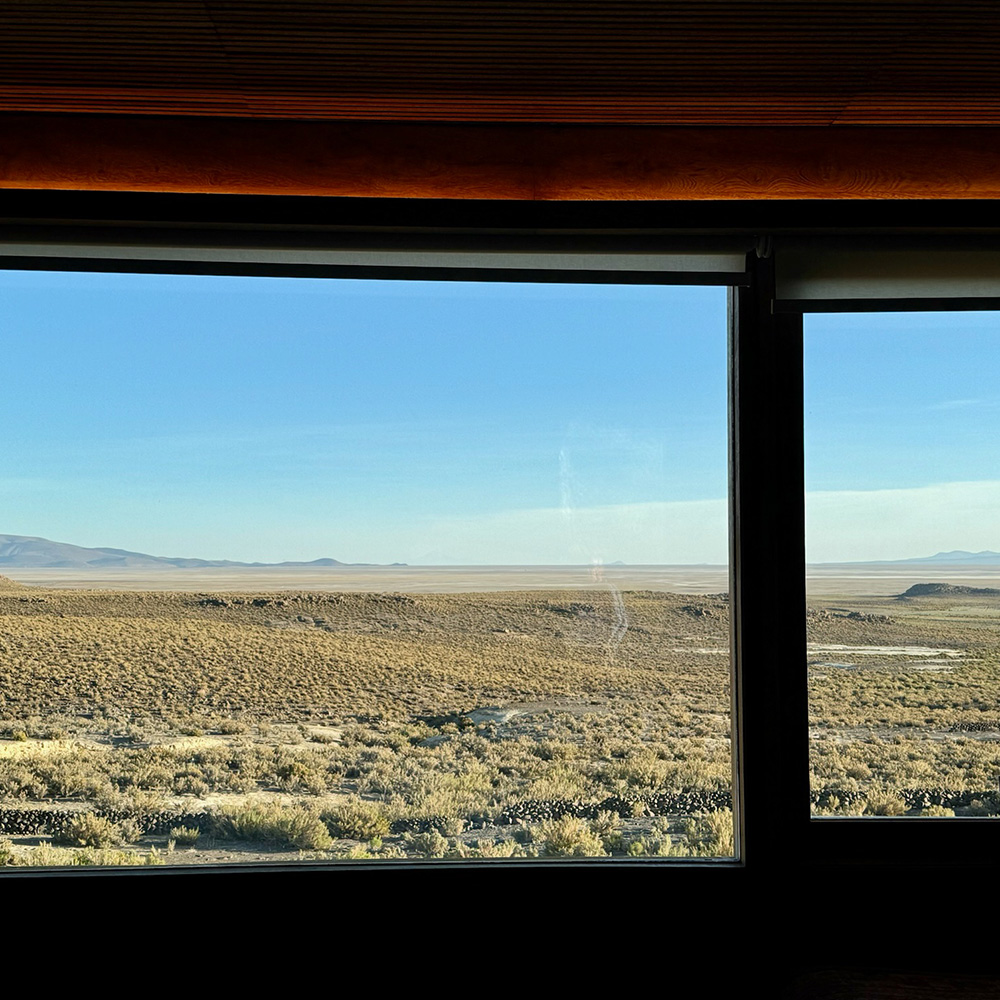
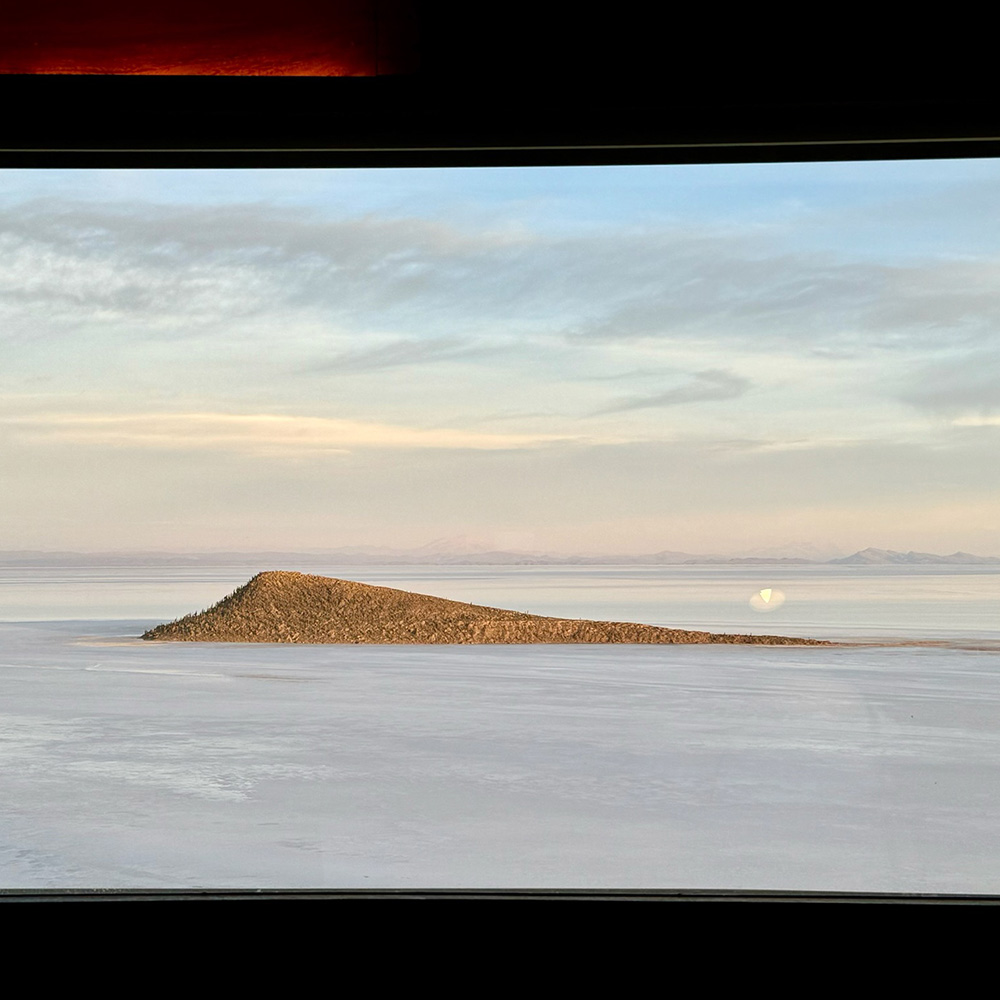
At each lodge, a separate container houses a spacious lounge and dining area, with the same warm and contemporary interior design. Amazingly, the team of chefs created a series of delicious dishes, despite often being hundreds of miles from the nearest village!

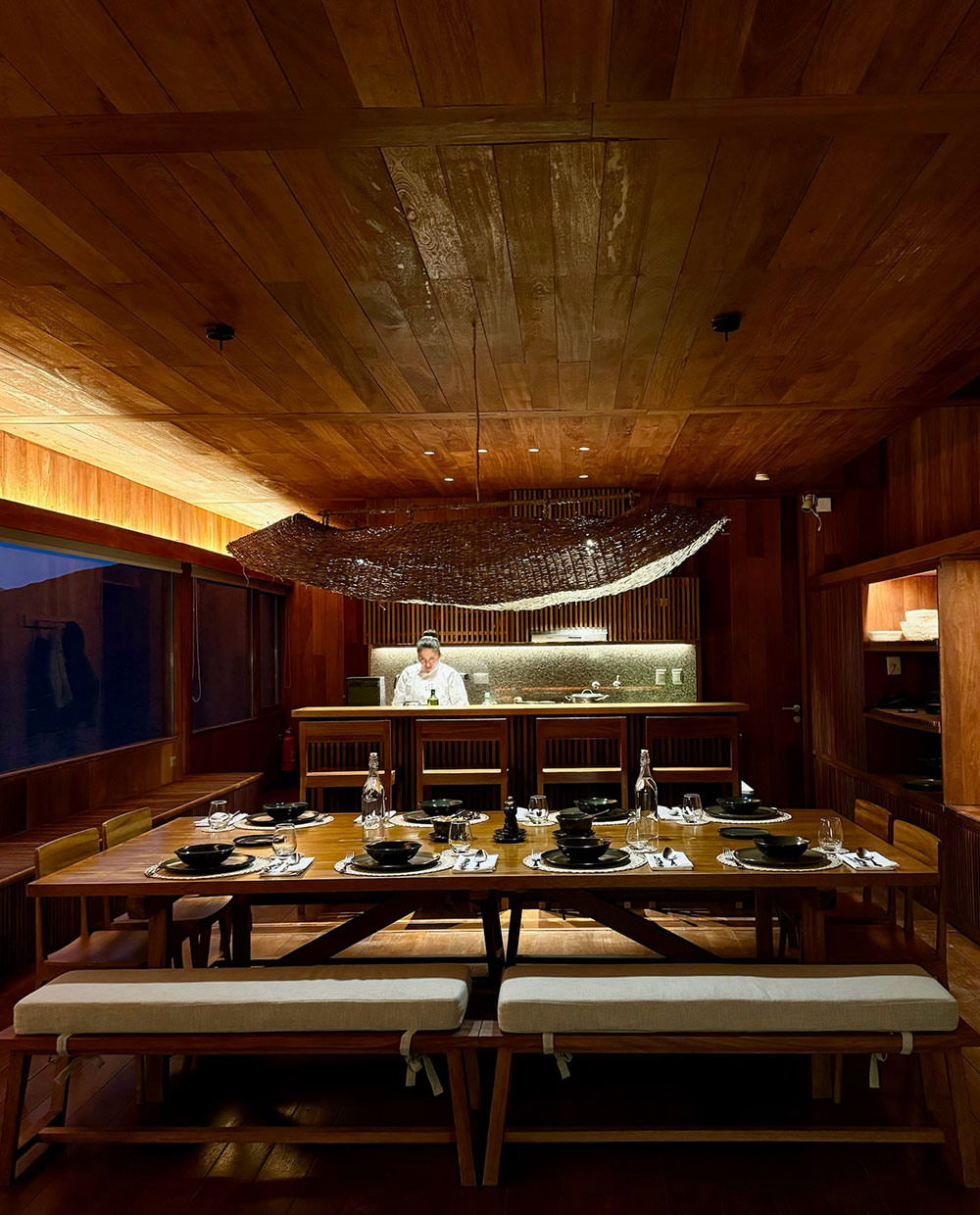
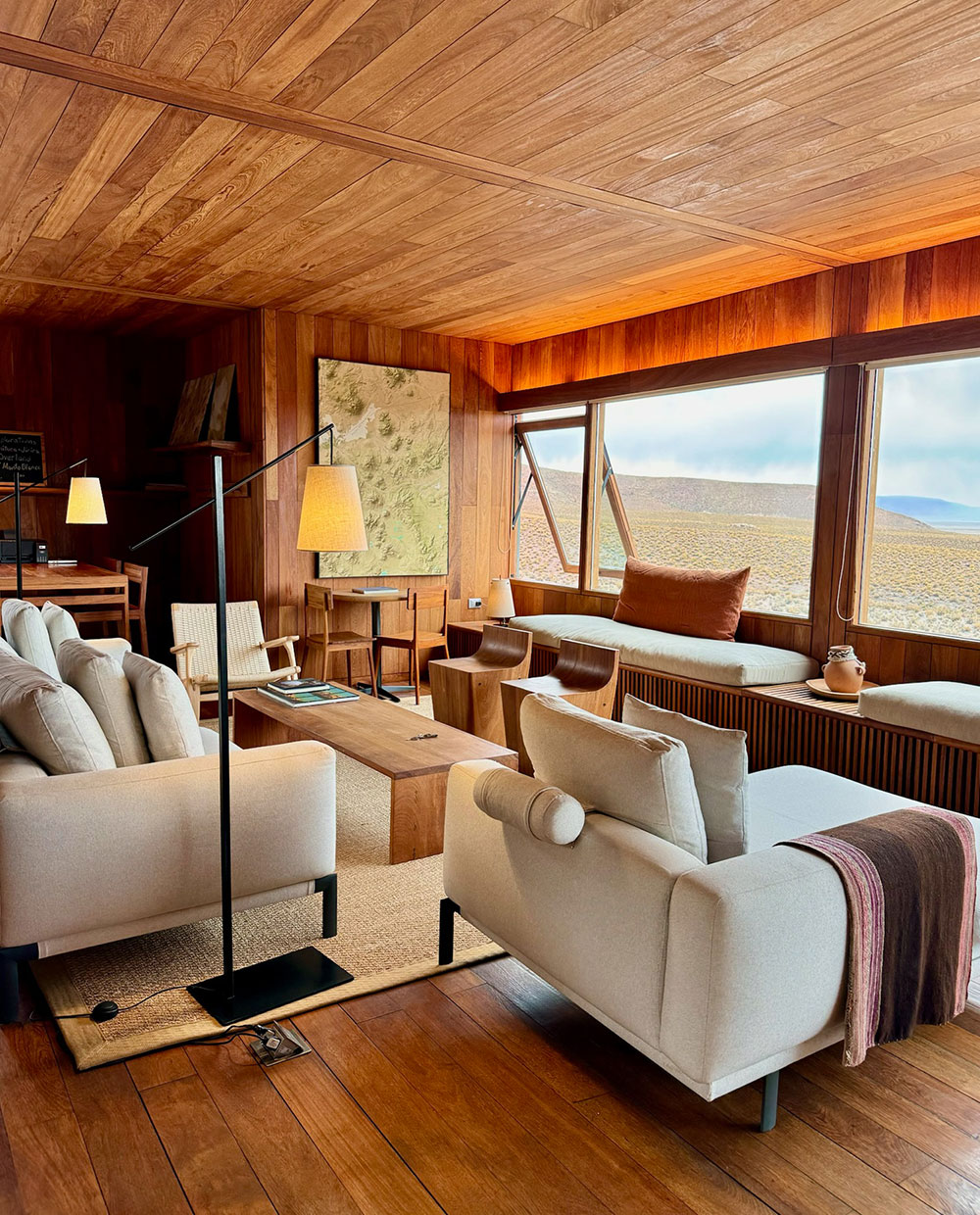
See & do
We saw countless amazing sights during the Travesía. It truly was one of the most moving and memorable experiences of any trip we have ever done. We did our journey in a convoy of three 4x4s, with the other travellers being lovely people we had a blast with, sharing outdoor lunches in the wild and dinners in the lodges.
Laguna Blanca
Laguna Blanca is a high-altitude salt lake situated in one of the first sights we saw after crossing the border from Chile into Bolivia. Its striking white appearance is due to the high concentration of minerals, particularly borax, in its waters. The lake is surrounded by the majestic Andes Mountains, offering a picturesque setting that attracts numerous bird species, including flamingos.
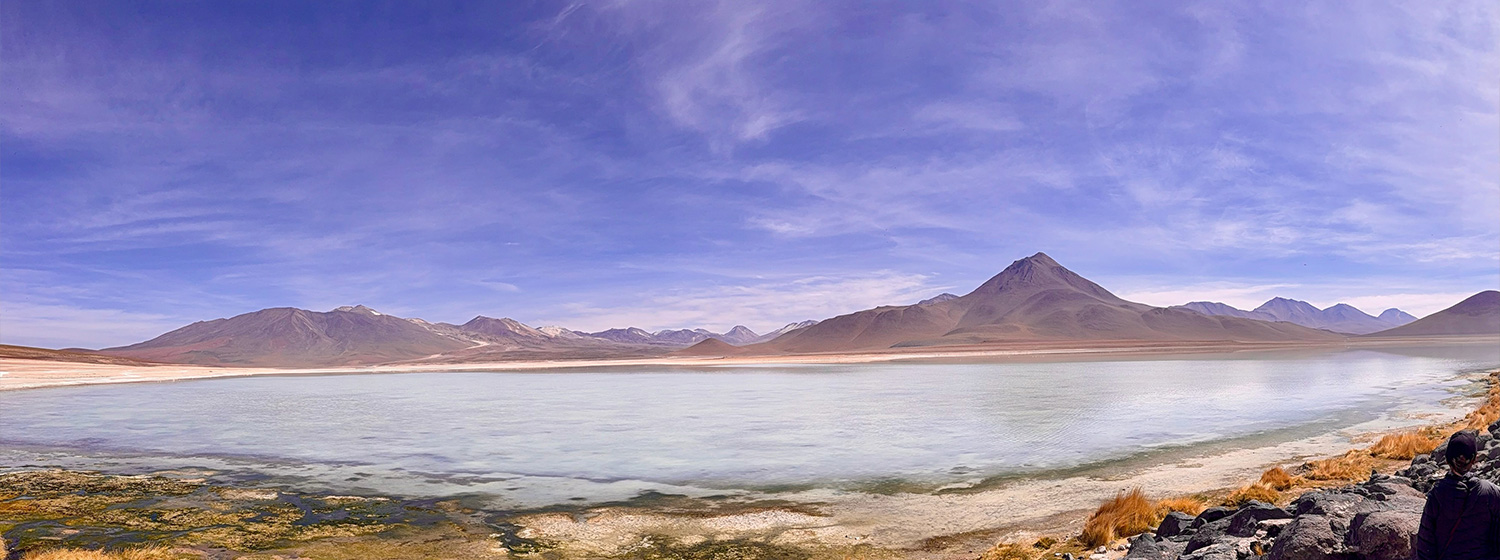
Laguna Verde
Located near the Chilean border, Laguna Verde is renowned for its vibrant turquoise-green waters. This unique coloration results from the presence of minerals such as arsenic, lead, and copper. The backdrop of the Licancabur Volcano added to the lake’s dramatic and surreal beauty.
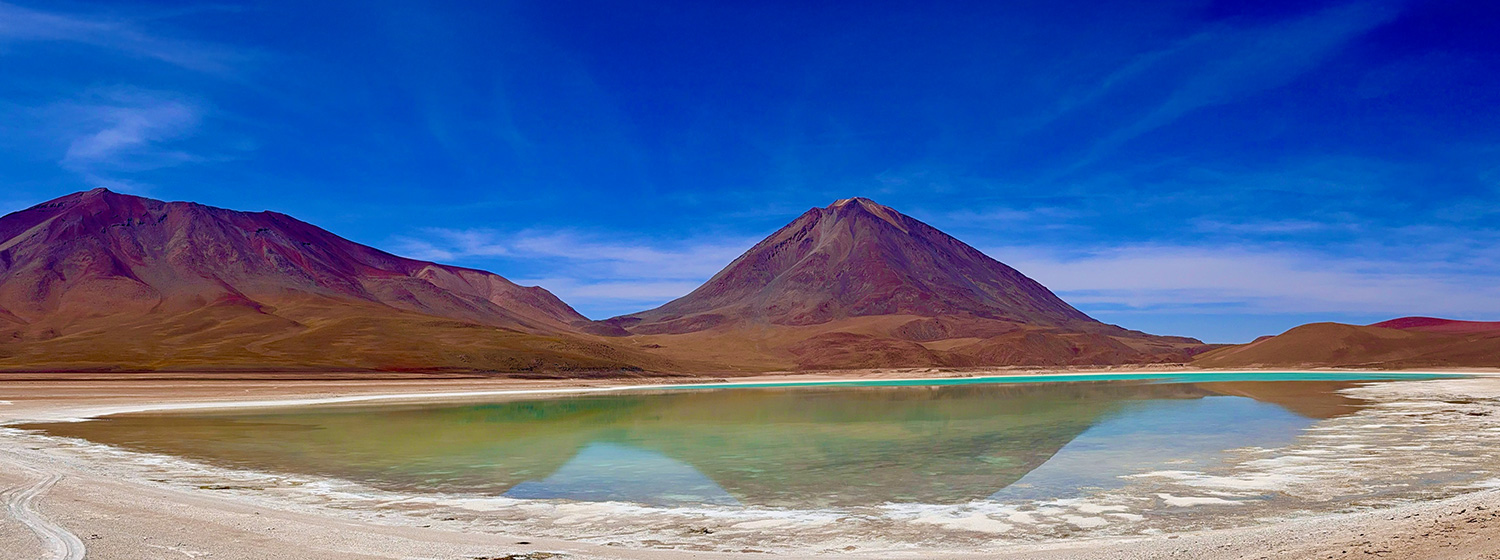
Dali Desert
The Dalí Desert, named after the surrealist painter, is a vast expanse characterized by its otherworldly landscapes reminiscent of Dalí’s artworks. Wind-eroded rock formations dot the sandy plains, with an incredible range of colours.
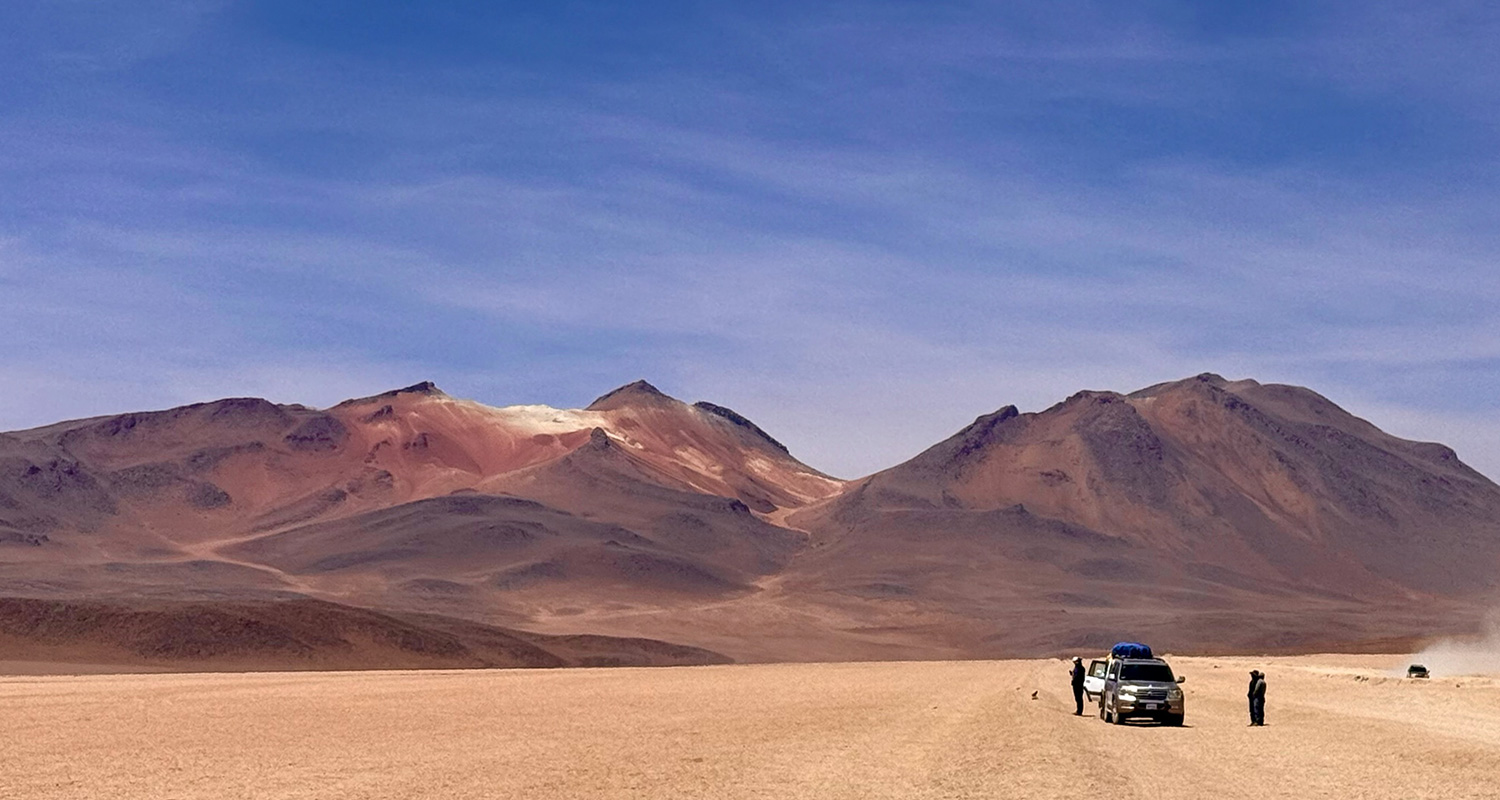
Sol de Mañana
The Sol de Mañana is a geothermal field characterized by its bubbling mud pools, steaming fumaroles and geysers that release plumes of steam into the crisp, high-altitude air. Again, the contrast of colours is a feast for the eyes.
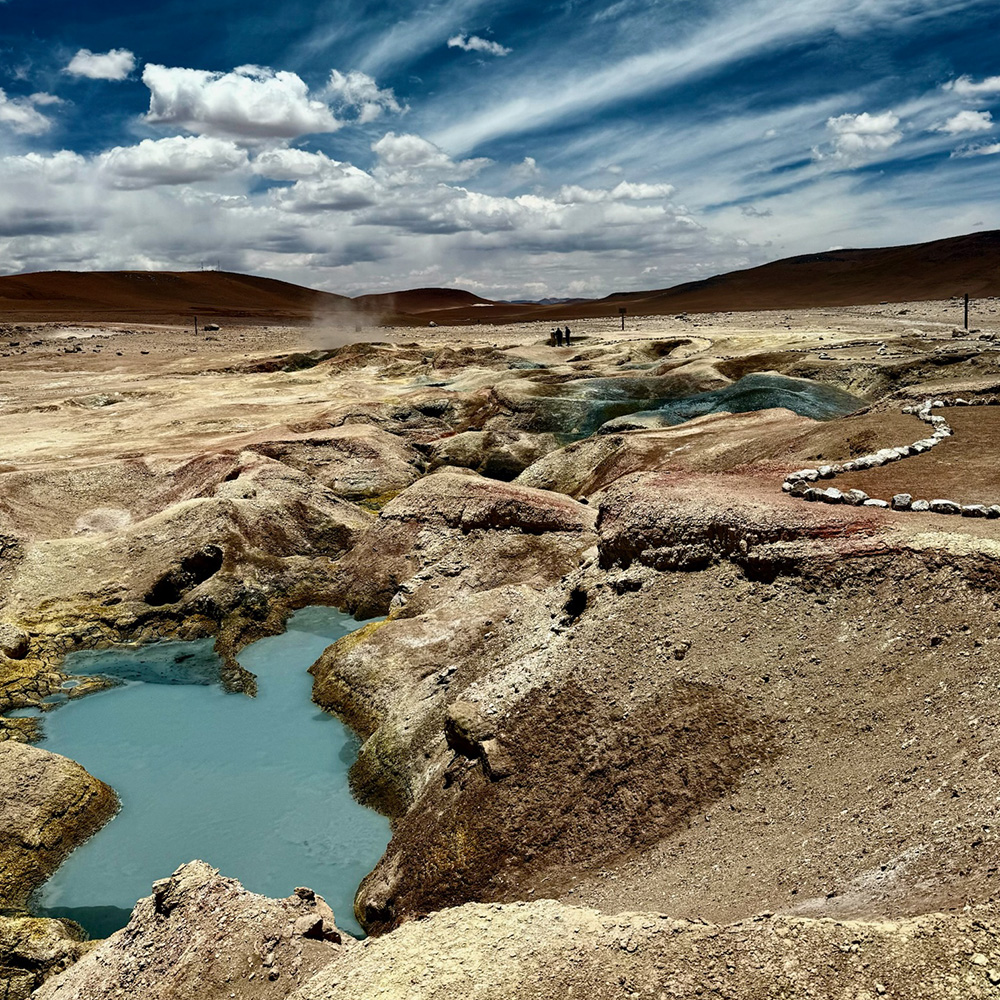
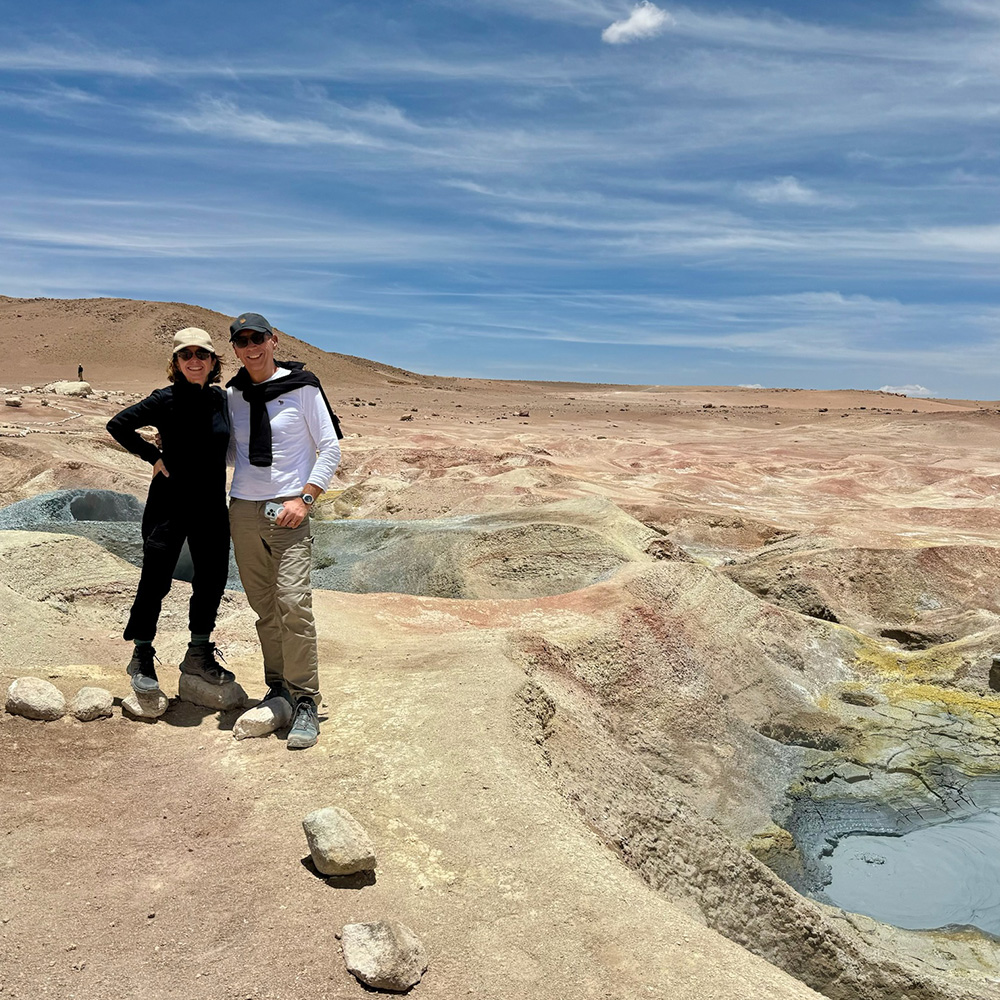
Laguna Colorada
Laguna Colorada is a shallow salt lake known for its striking red hue, which is attributed to red sediments and pigmentation from algae in the water. This vibrant coloration, combined with the large population of flamingos, created a breathtaking and colourful spectacle. After visiting this lake we headed for our first lodge in Ramaditas.
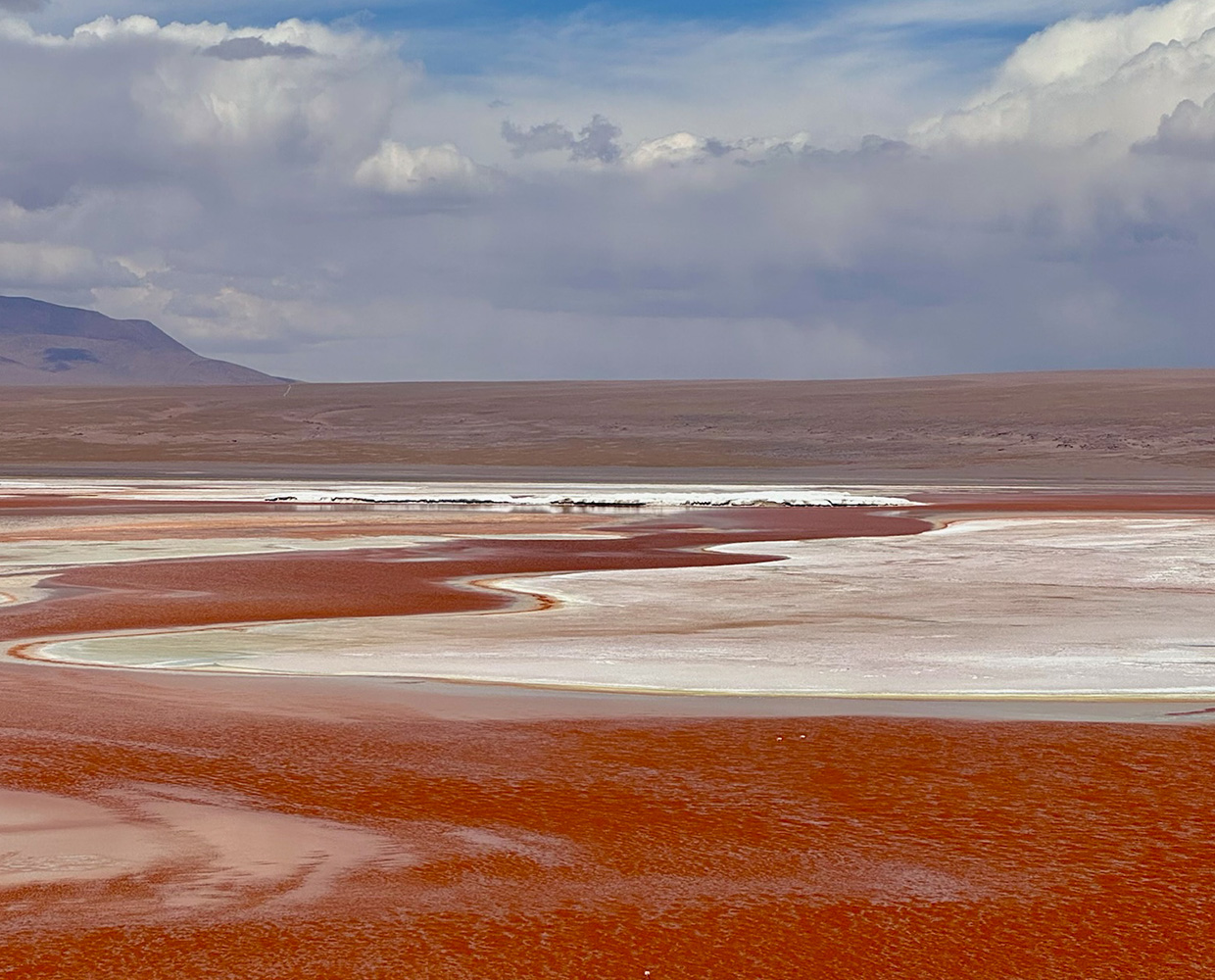
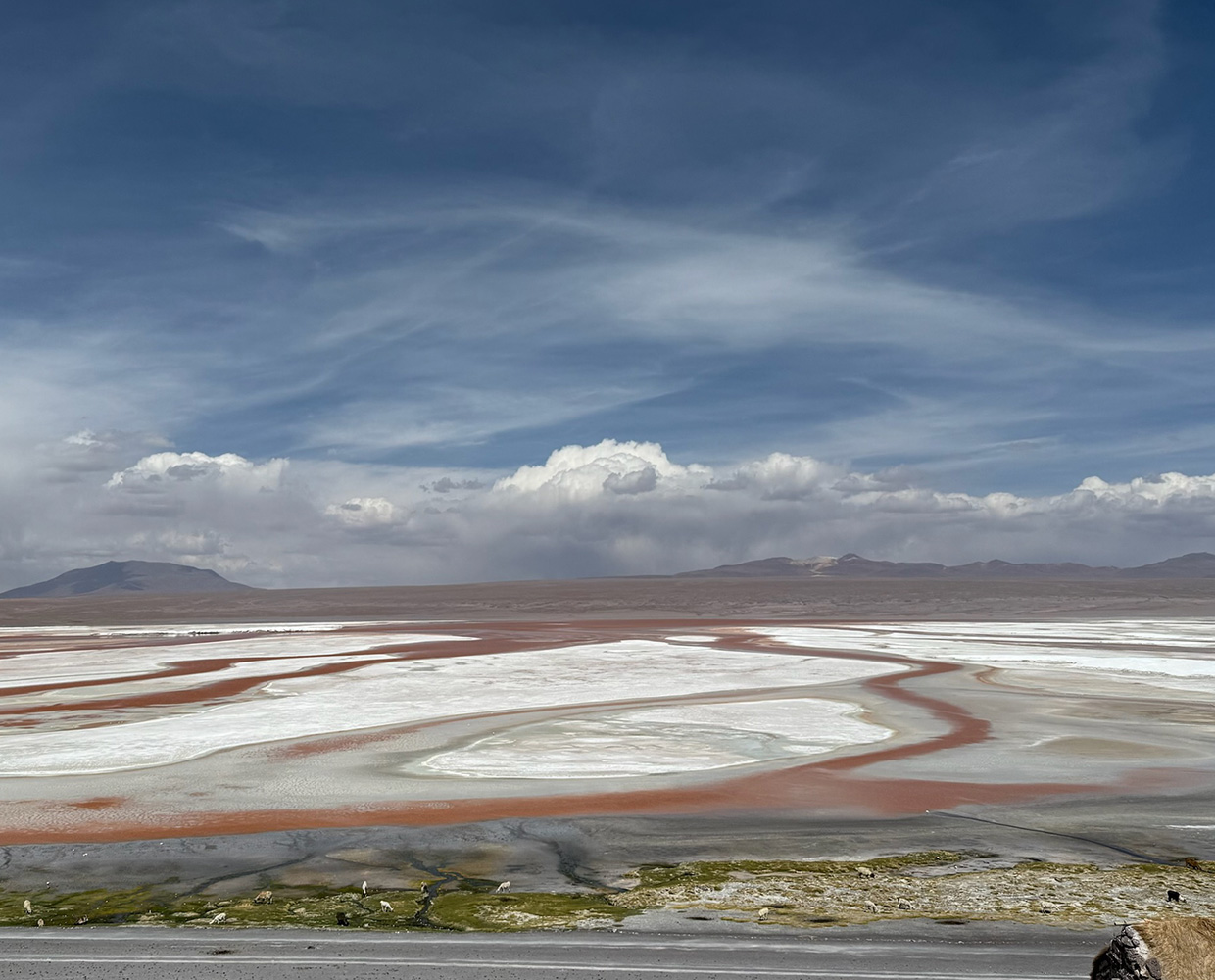
Laguna Turquiri
A hike around Laguna Turquiri was the main activity for the second day of our crossing. This high-altitude lake is surrounded by rugged mountains but also more green landscapes, being home to wildlife including flamingos and other bird species. On the way to this hike, we also saw the picturesque Cañapa Lake which was full of flamingos (below right). The second night was spent in the Explora lodge in Chituca at an altuitude of over 4,000m. This did result in David having one night of altitude sickness (tip: don’t over-do the wine at dinner the night before a trip to high altitude!).
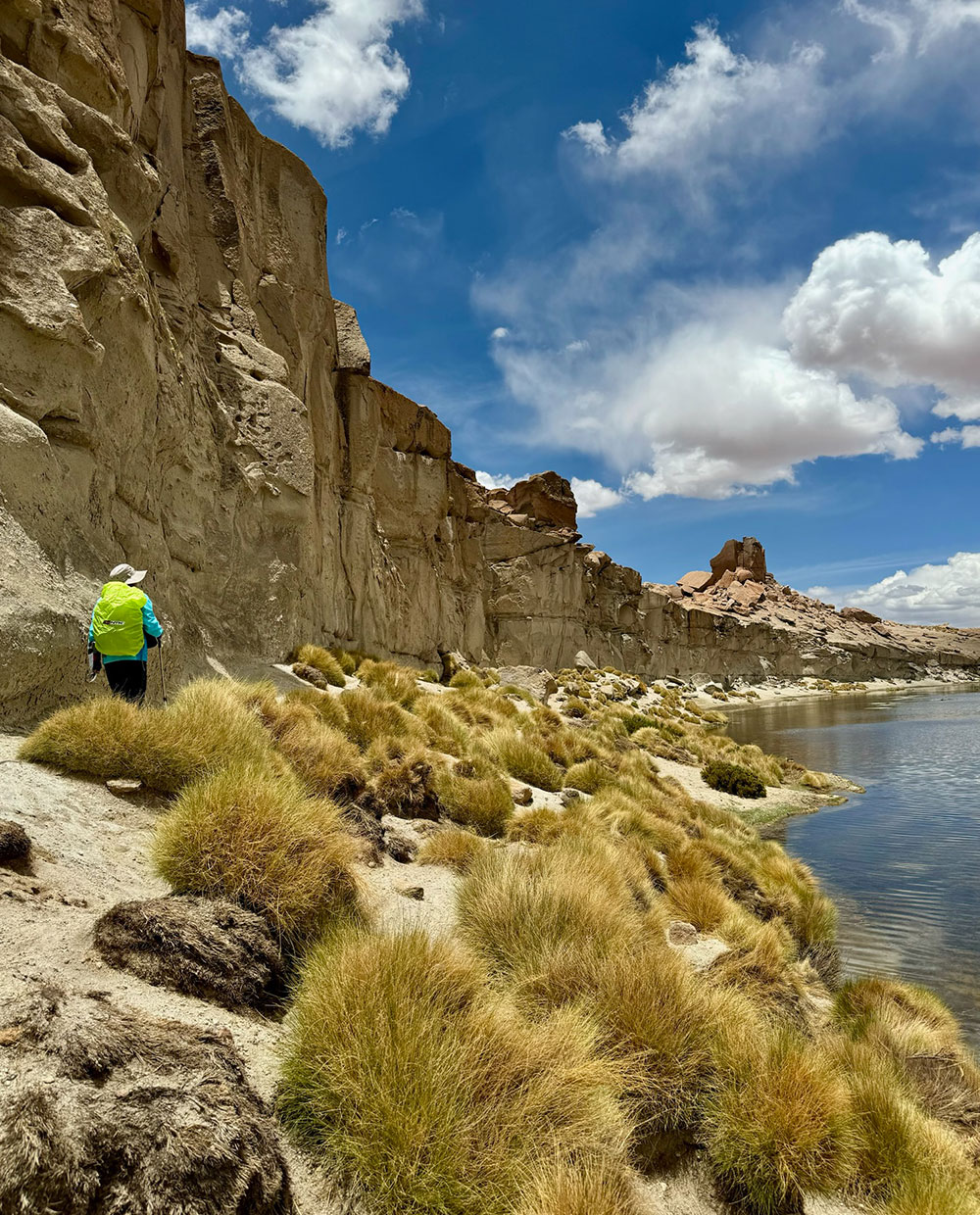
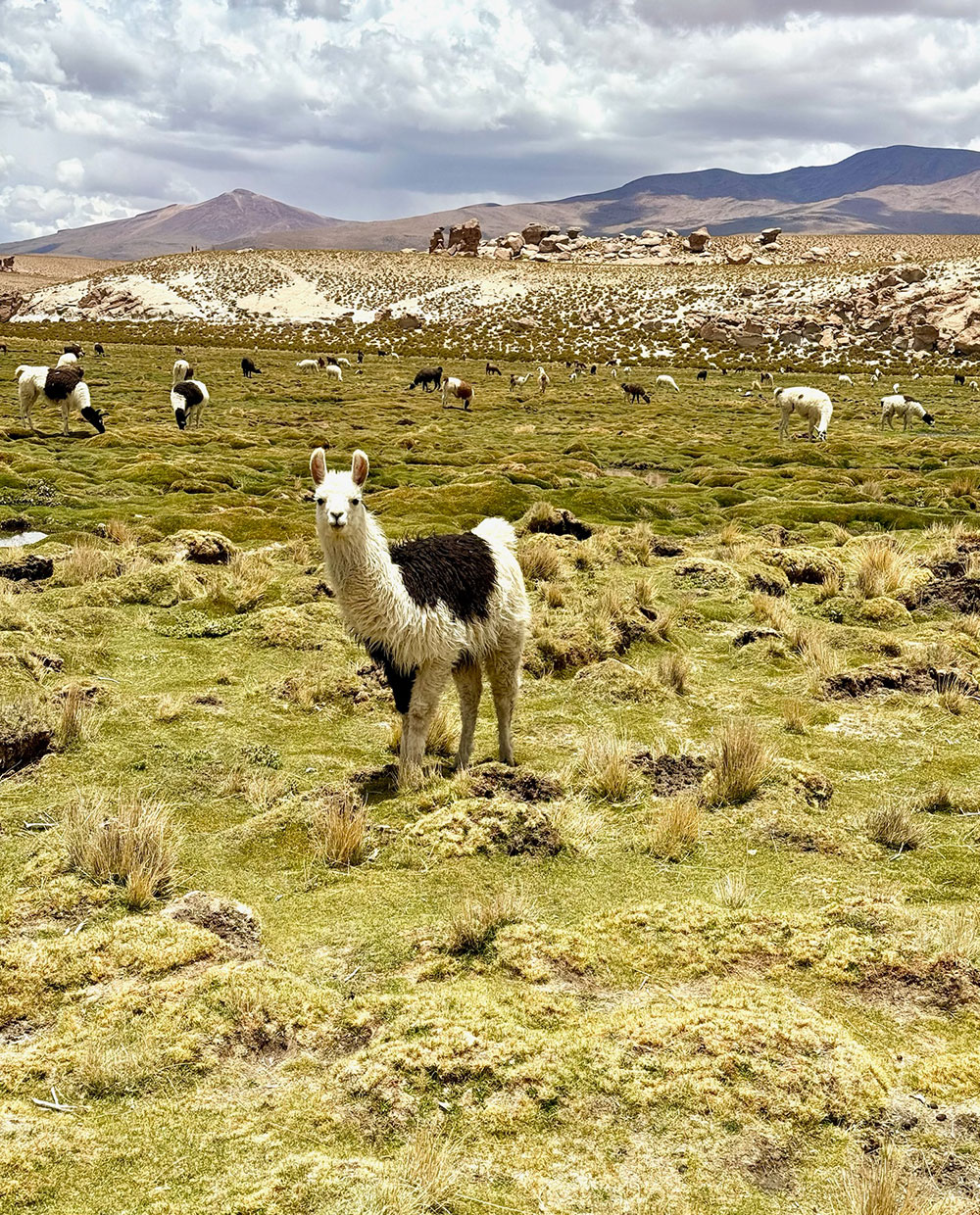
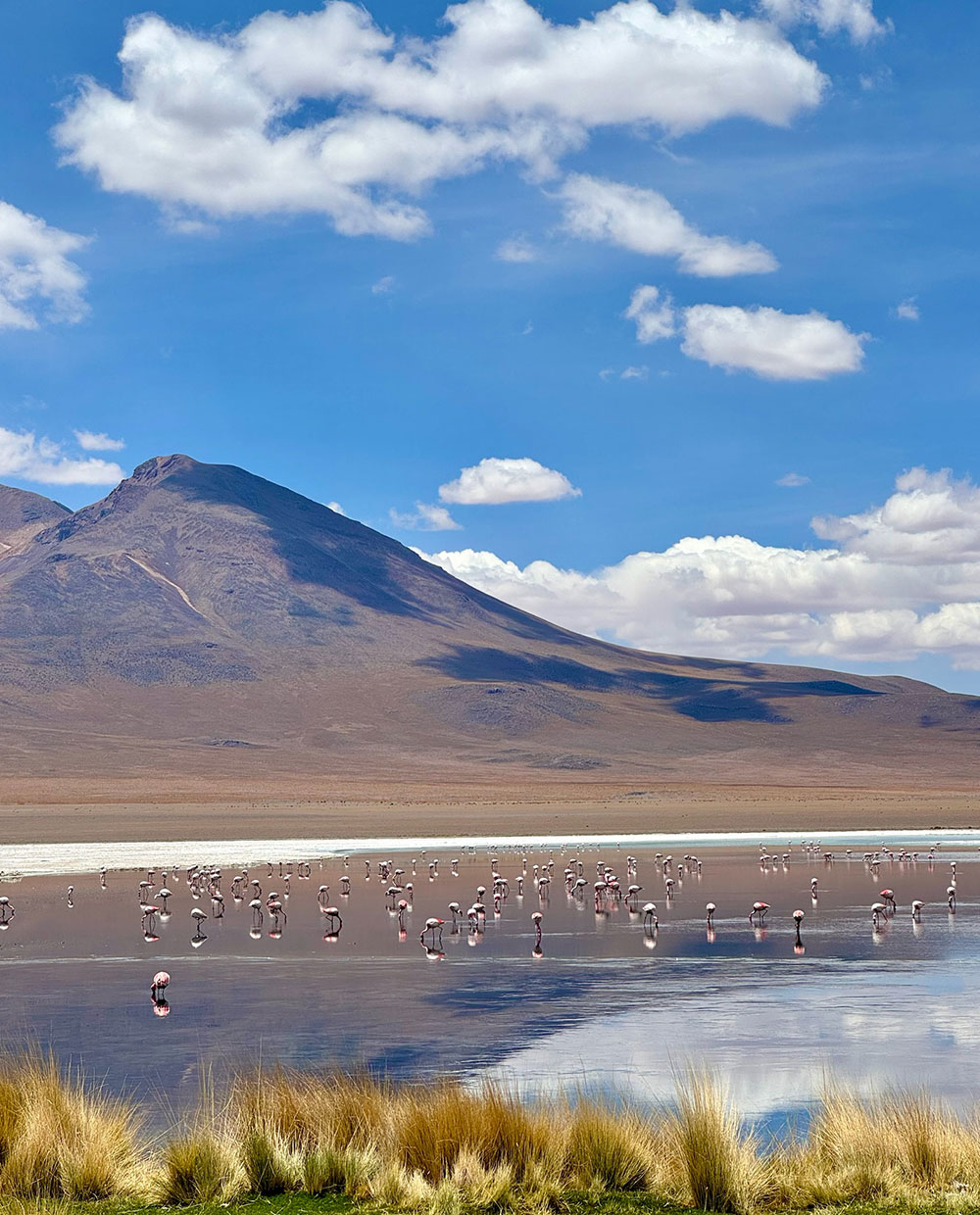
Salar de Uyuni
We set off from the lodge in Chituca out onto the Salar de Uyuni, the world’s biggest salt flats, covering almost 11,000 km2. This was a truly other-worldly, ethereal experience. The ultra-bright white salt flats created a stunning contrast with the blue of the sky.
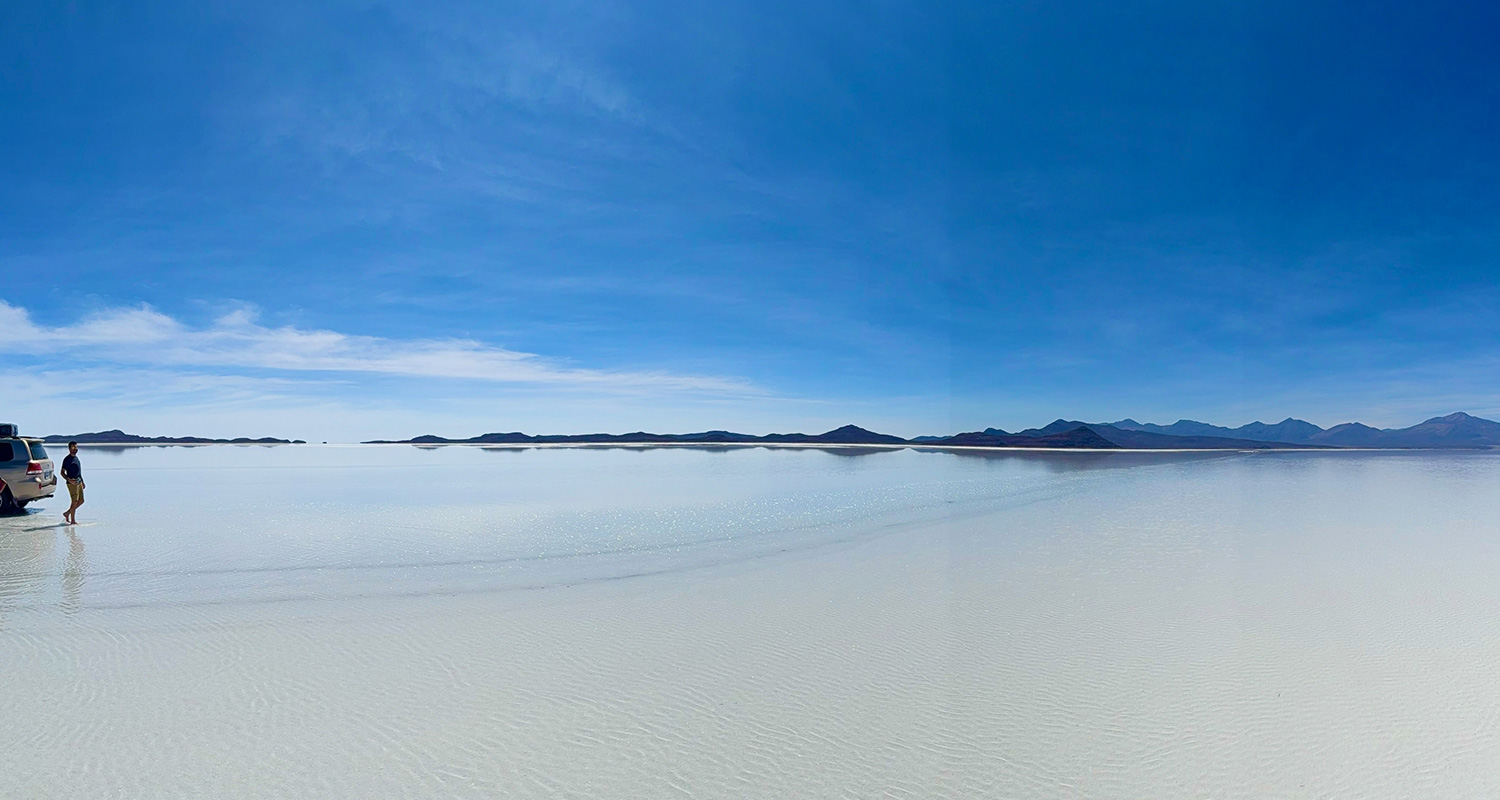
Our end-November trip was in theory during the dry season. However, rain fell just before we left, meaning our 150km crossing took seven hours instead of the normal two! But the bonus was getting to see the famous “mirror” effect, in addition to the hexagonal forms of the salt flats when seen close up.
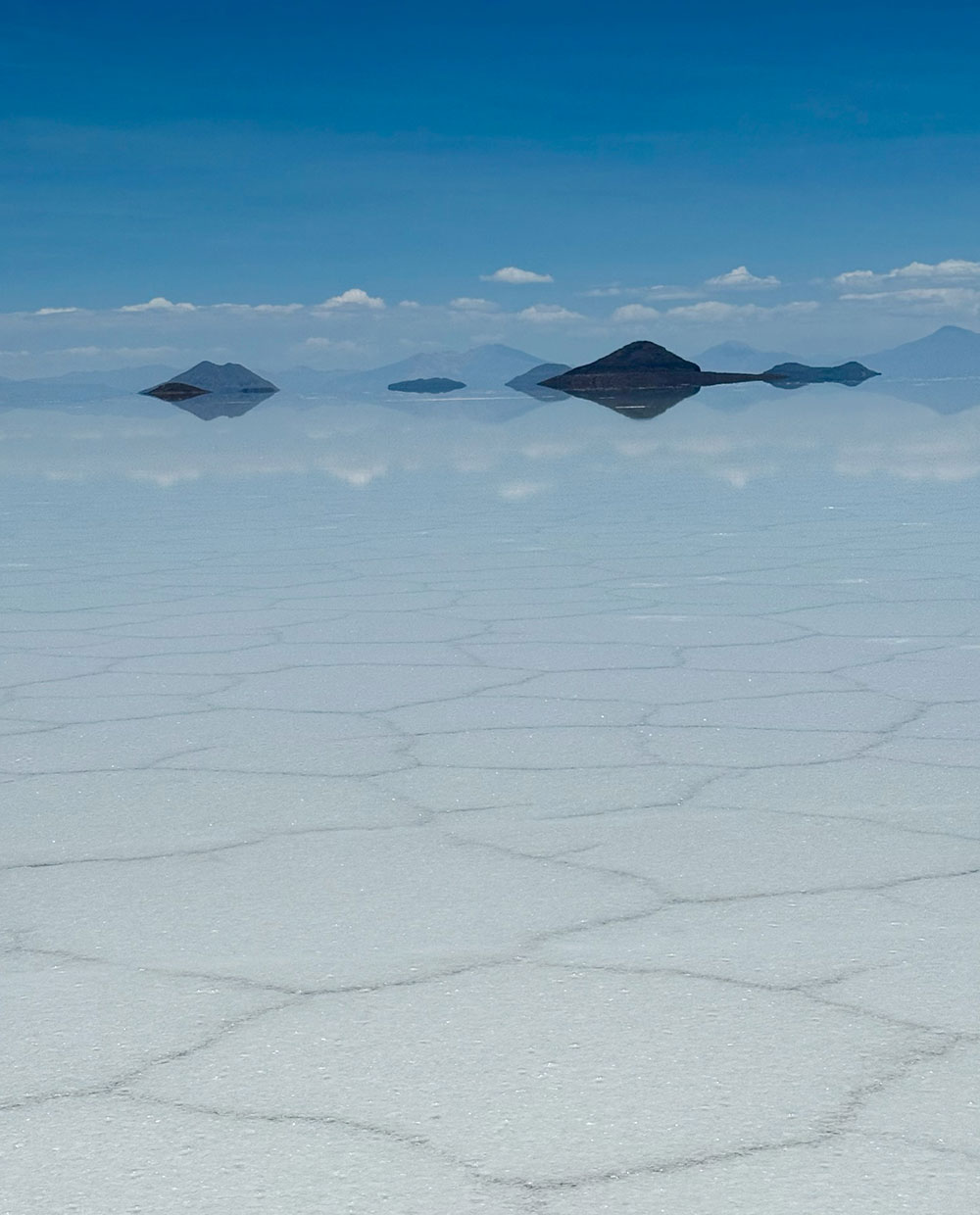
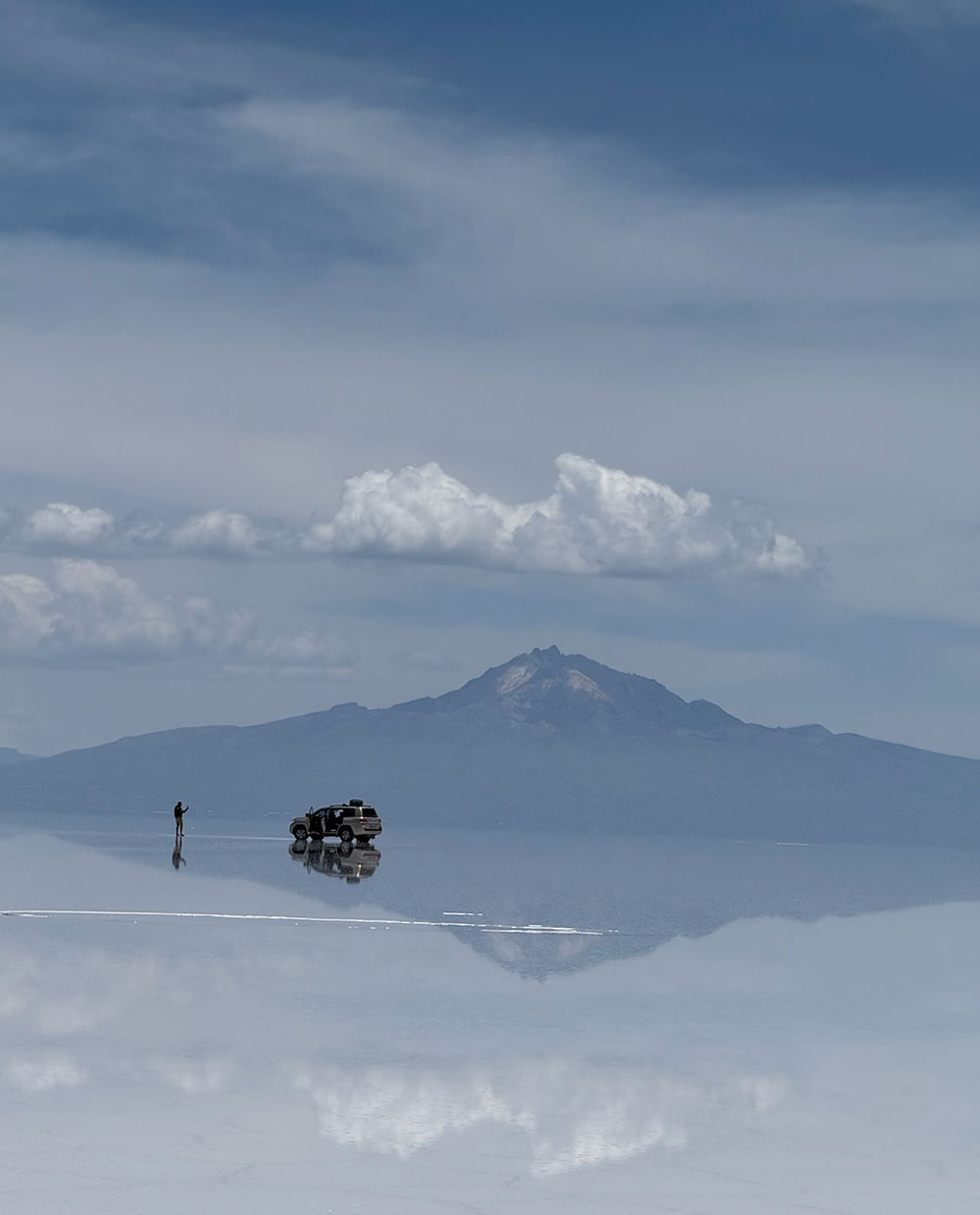
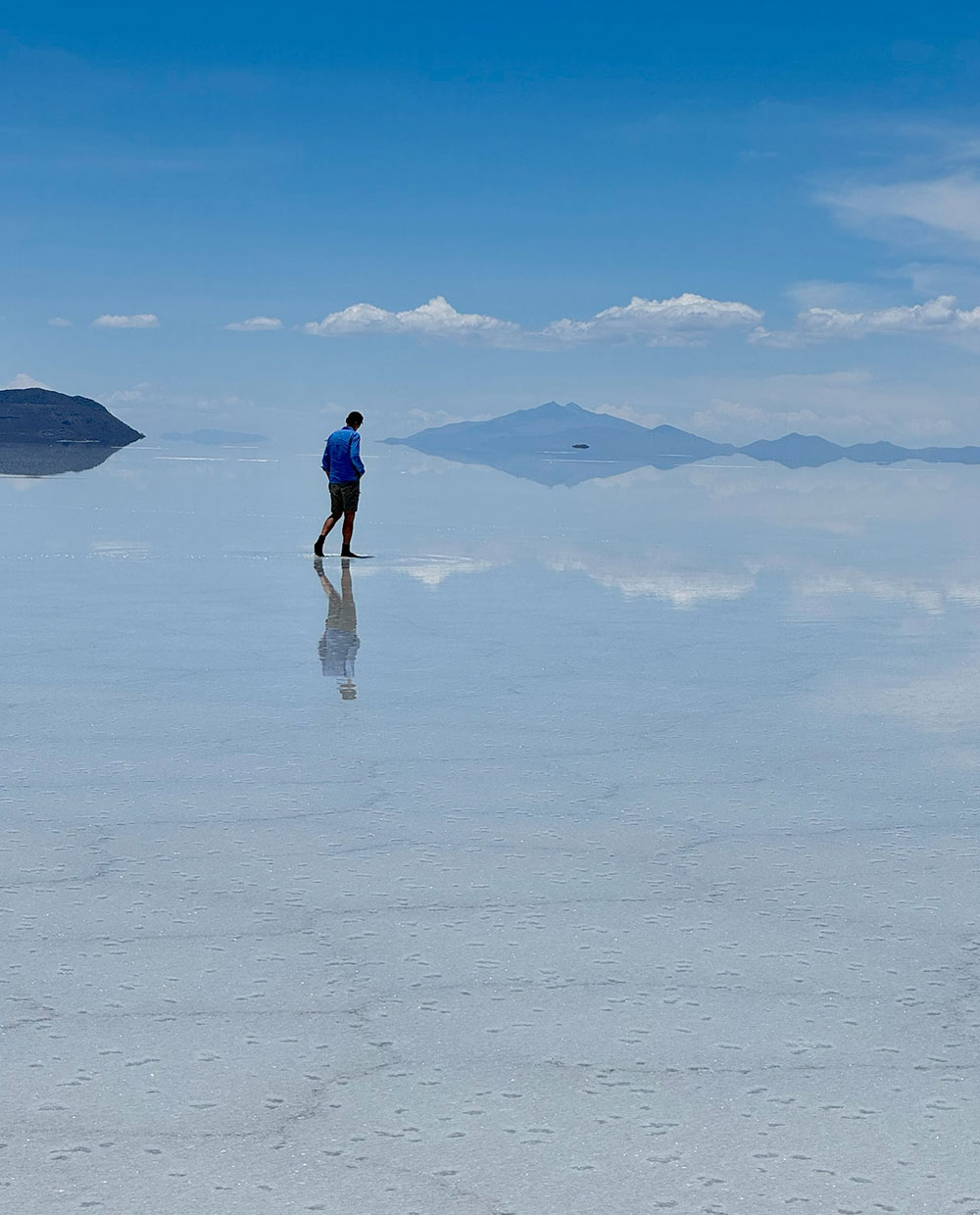
We had one of our most memorable lunches ever half way across the salt flats!
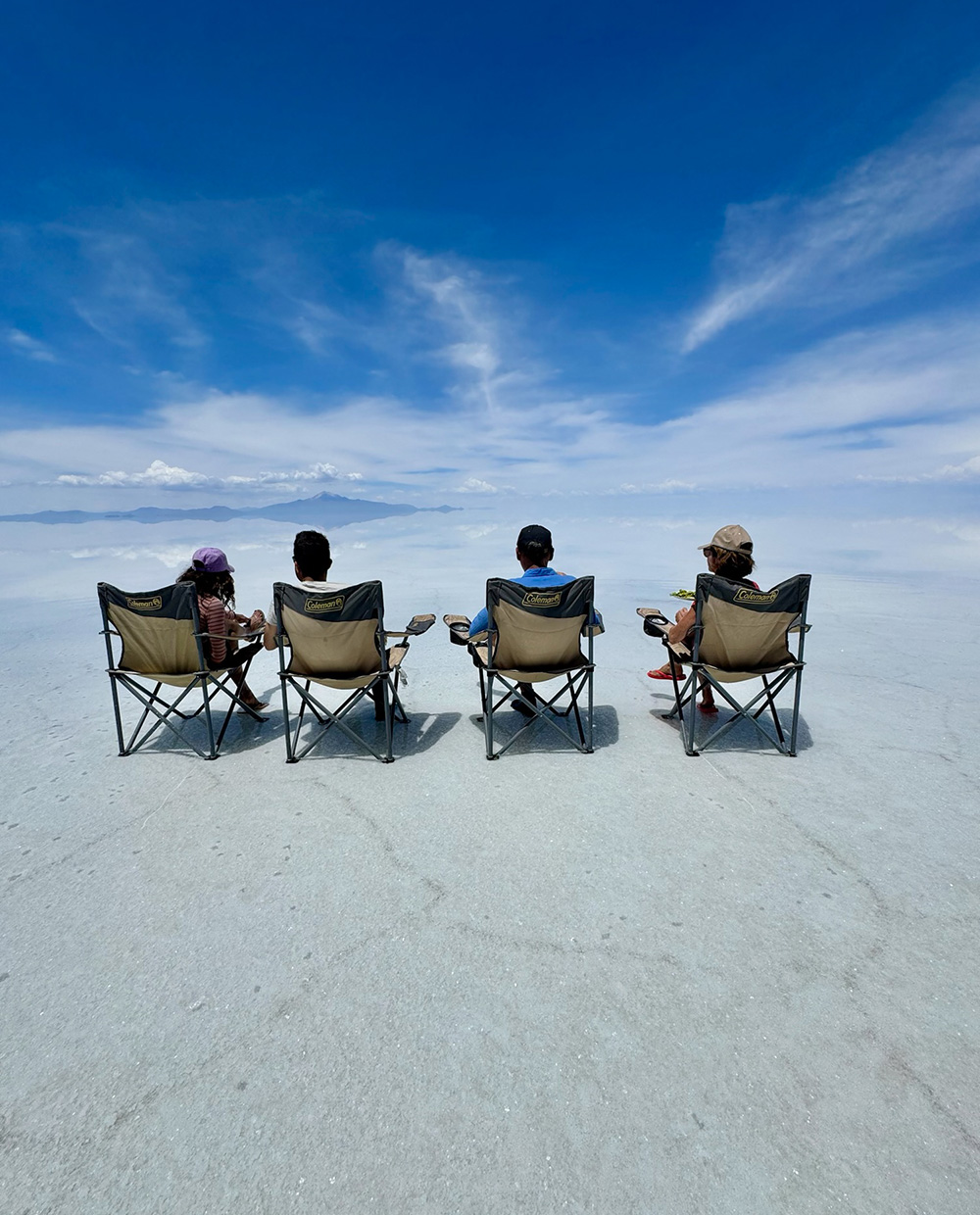
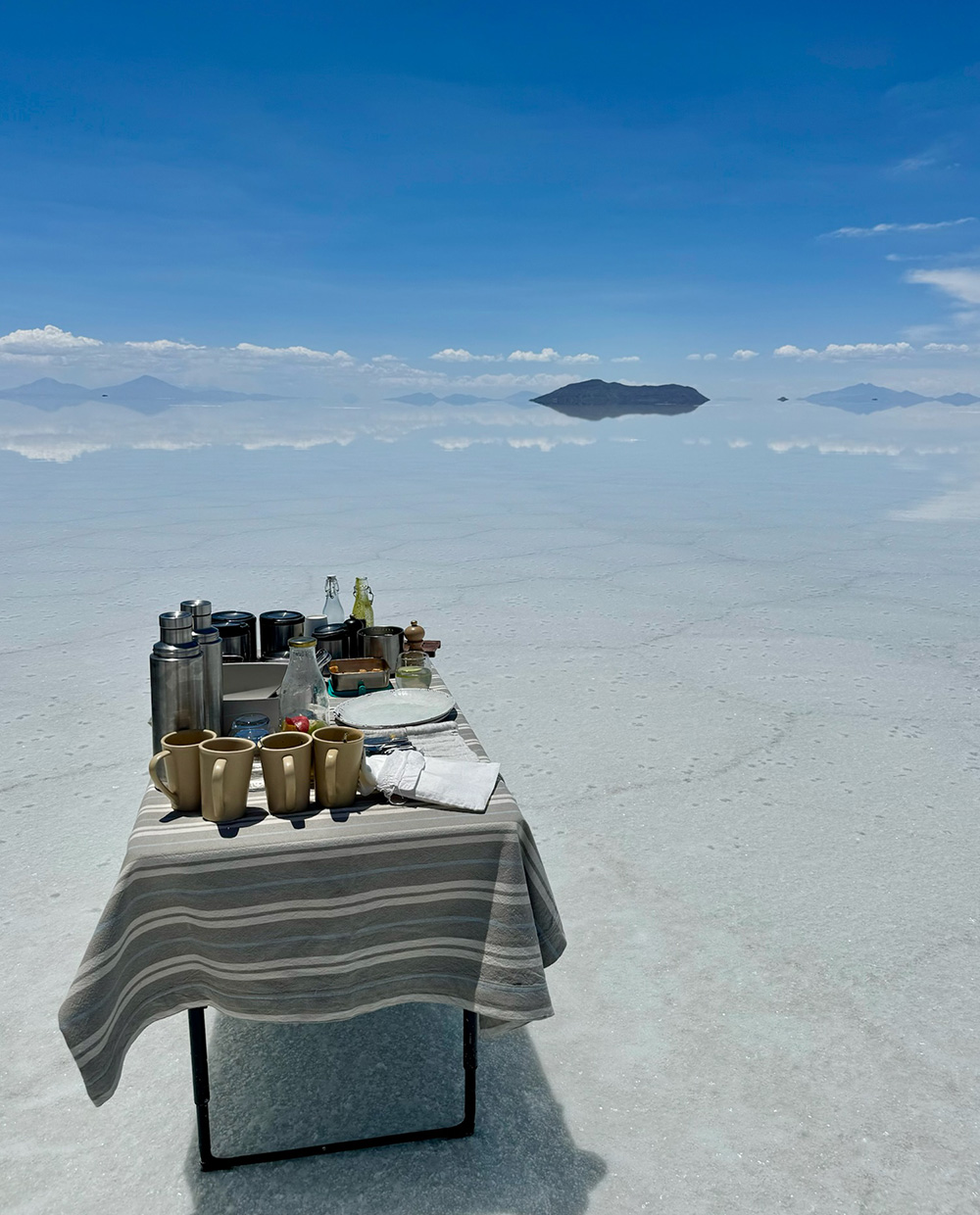
On completing the crossing we arrived at the third and most impressive Explora Travesía lodge, perched on the top of a mountain with panoramic views of the salt flats. From the lodge, we did an unforgettable sunset trip out onto the salt flats. The sky was actually cloudy and we weren’t sure what we would see. But as the sun set, we were rewarded with a spectacular explosion of colour.
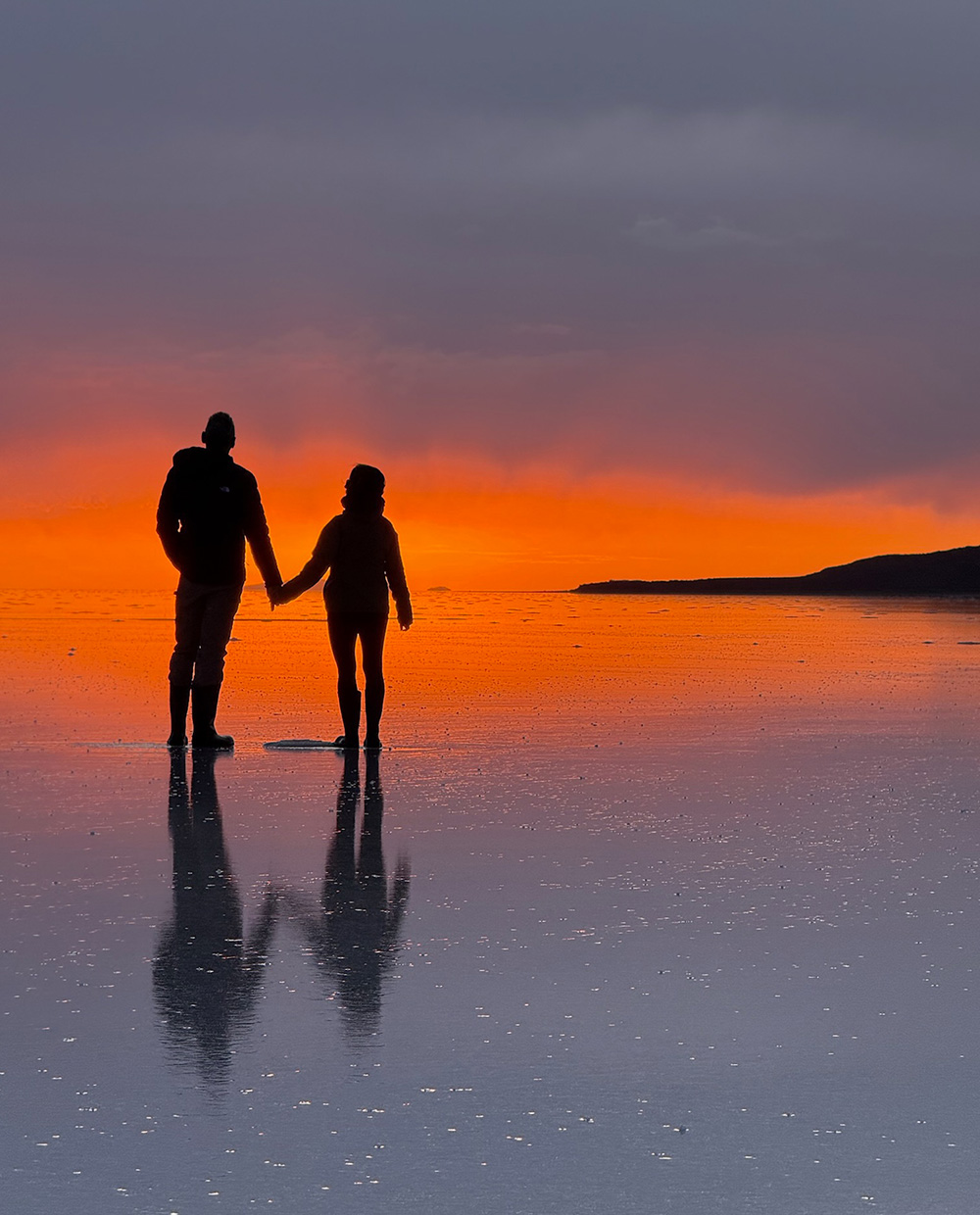
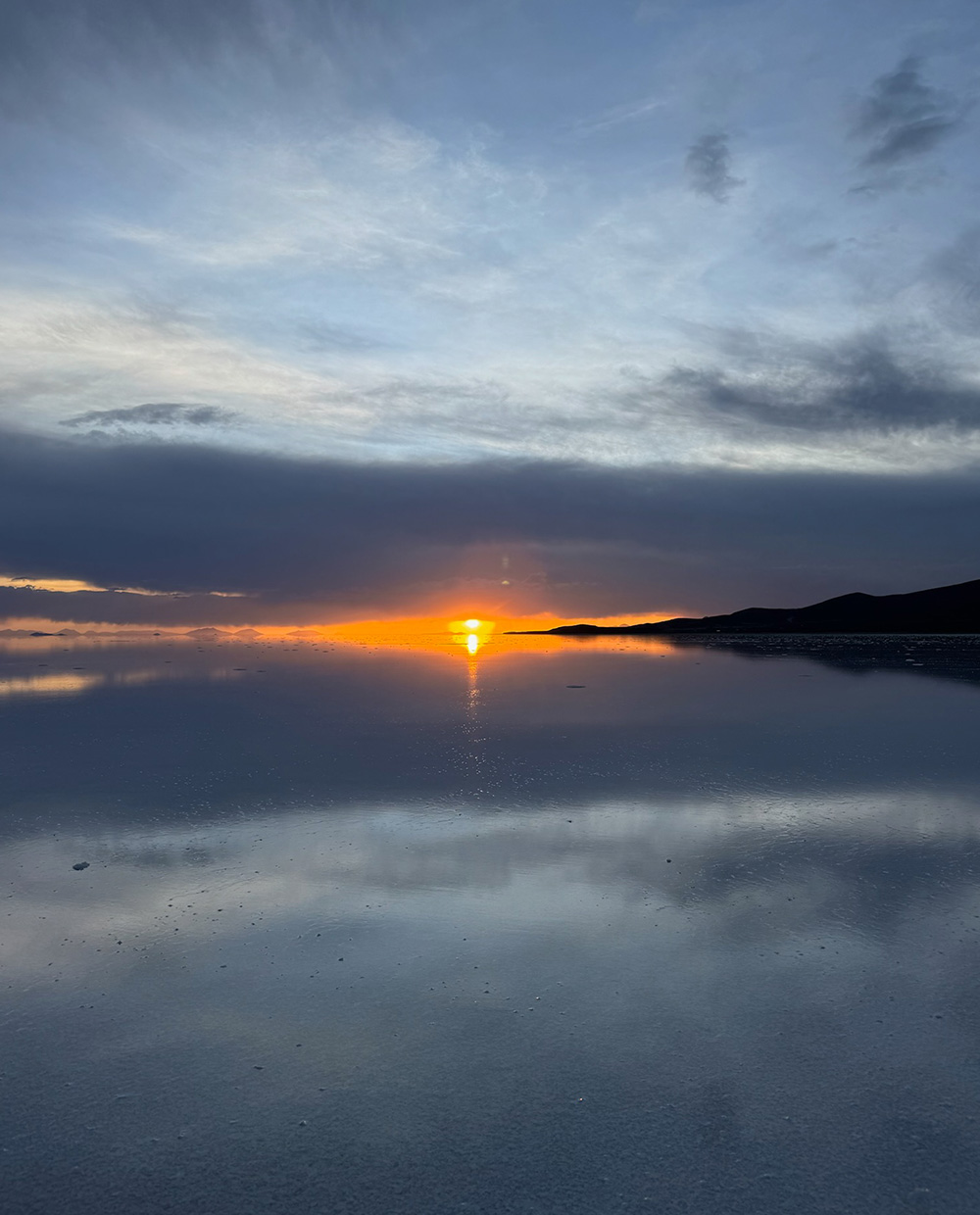
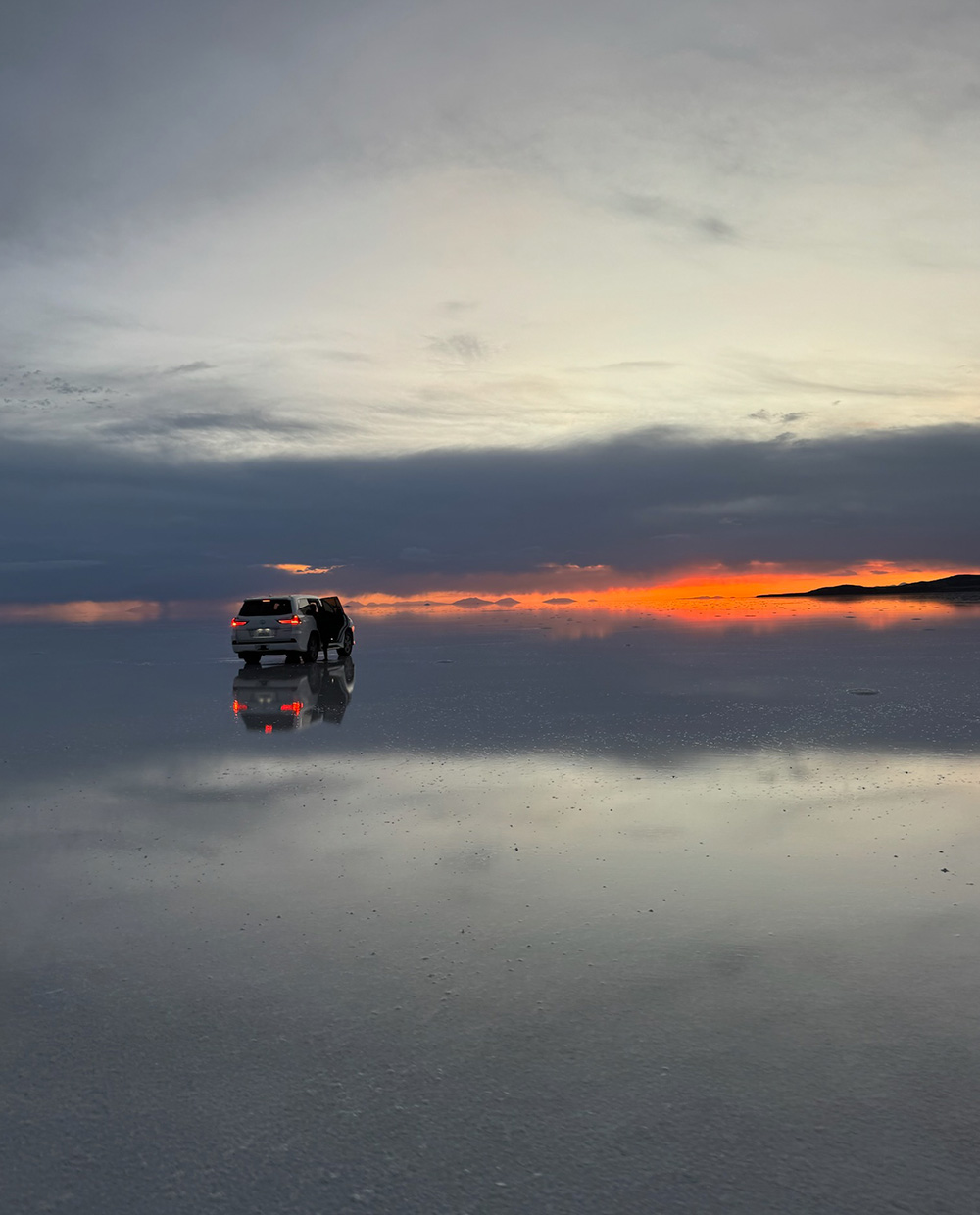
The Millahue wine region
We had a long drive back through Bolivia, across the border and back into Chile, staying the night in a cheap hotel near Calamar airport, prior to flying back to Santiago the next day. We then had a drive two hours south to The Millahue Valley wine region.
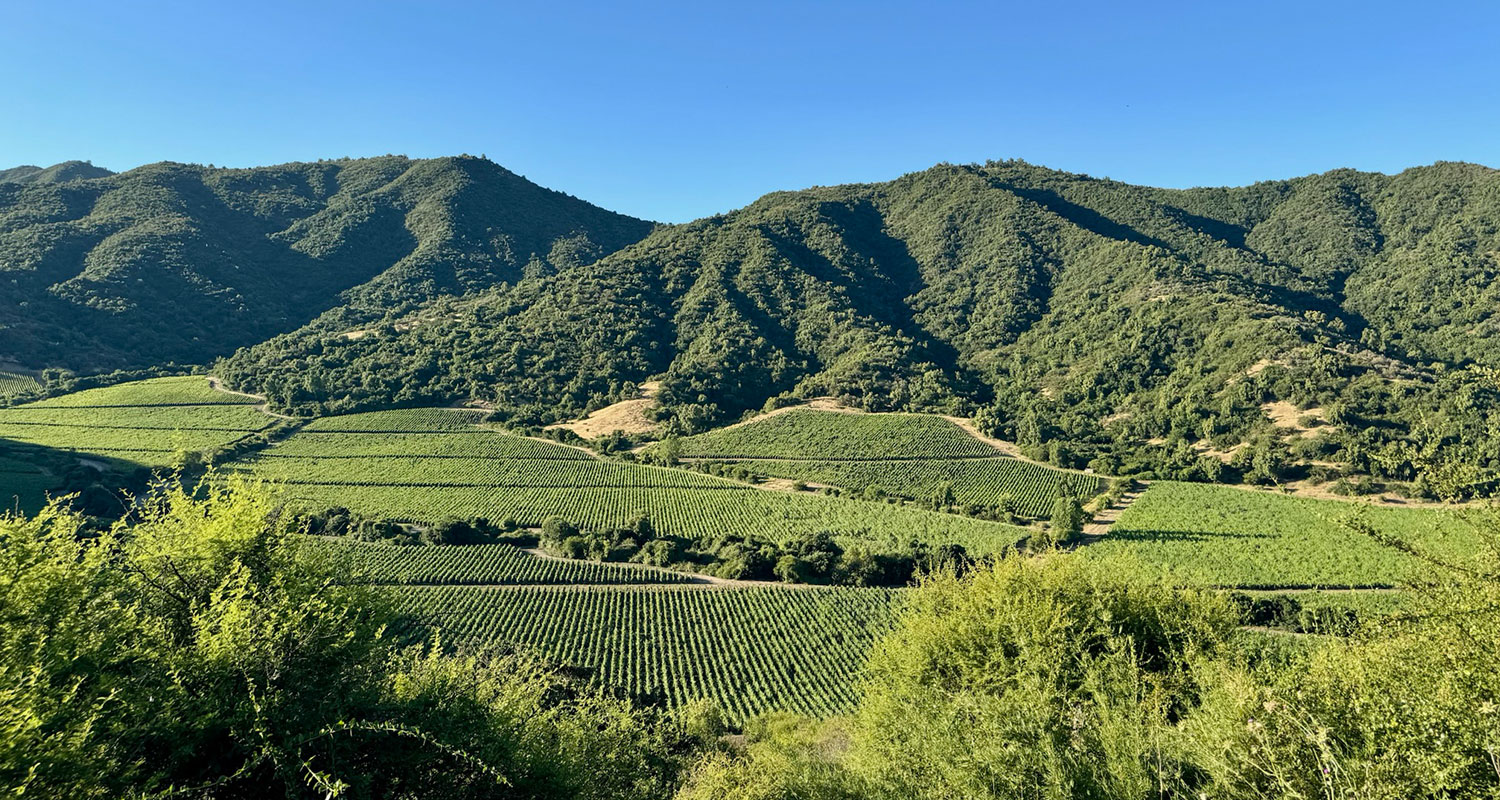
Stay & Dine
Vik Chile
Vik Chile is a sanctuary of luxury and natural splendour that had been on our hotel wish list for many years. Perched atop a hill, the hotel offers panoramic vistas of its expansive 4,400-hectare private park, encompassing rolling vineyards and the majestic Andes Mountains.
The hotel’s avant-garde architecture, by Uruguayan architect Marcelo Dagli, features a distinctive, floating titanium roof designed to emulate the surrounding mountainous terrain. The hotel is built around a pretty central courtyard with a garden in the middle.
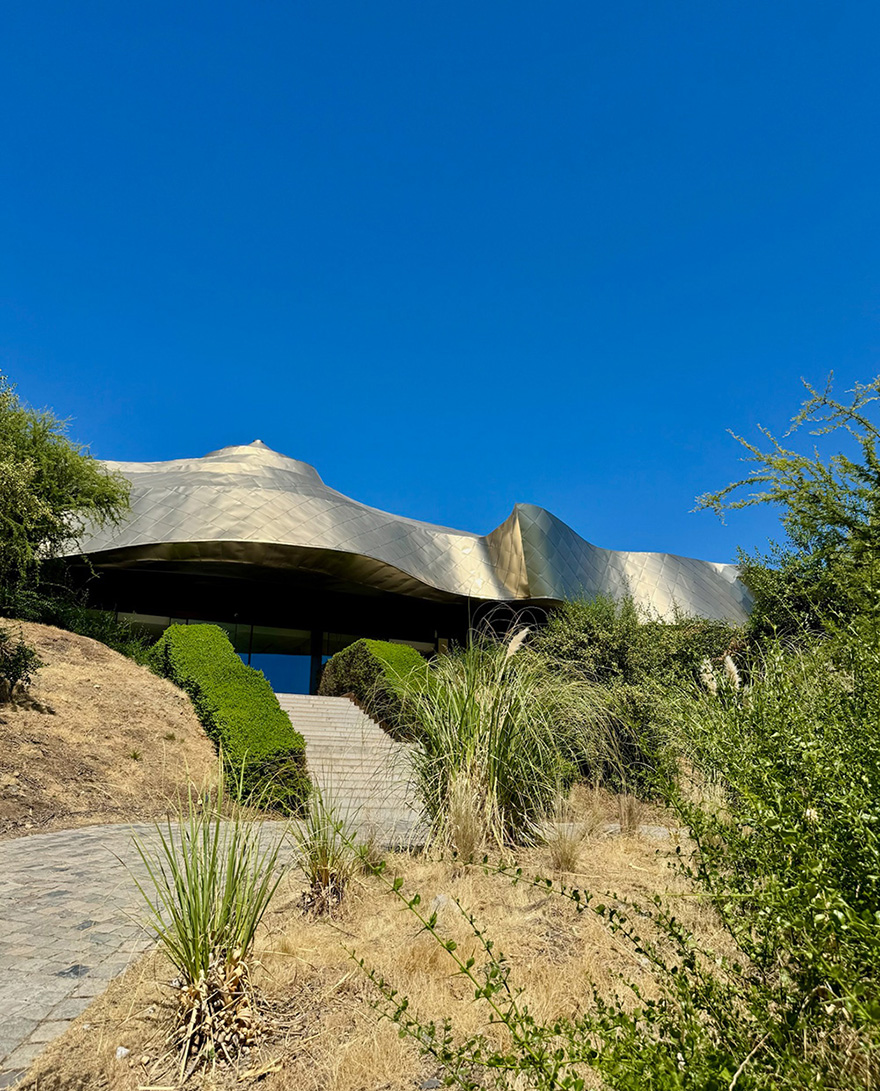
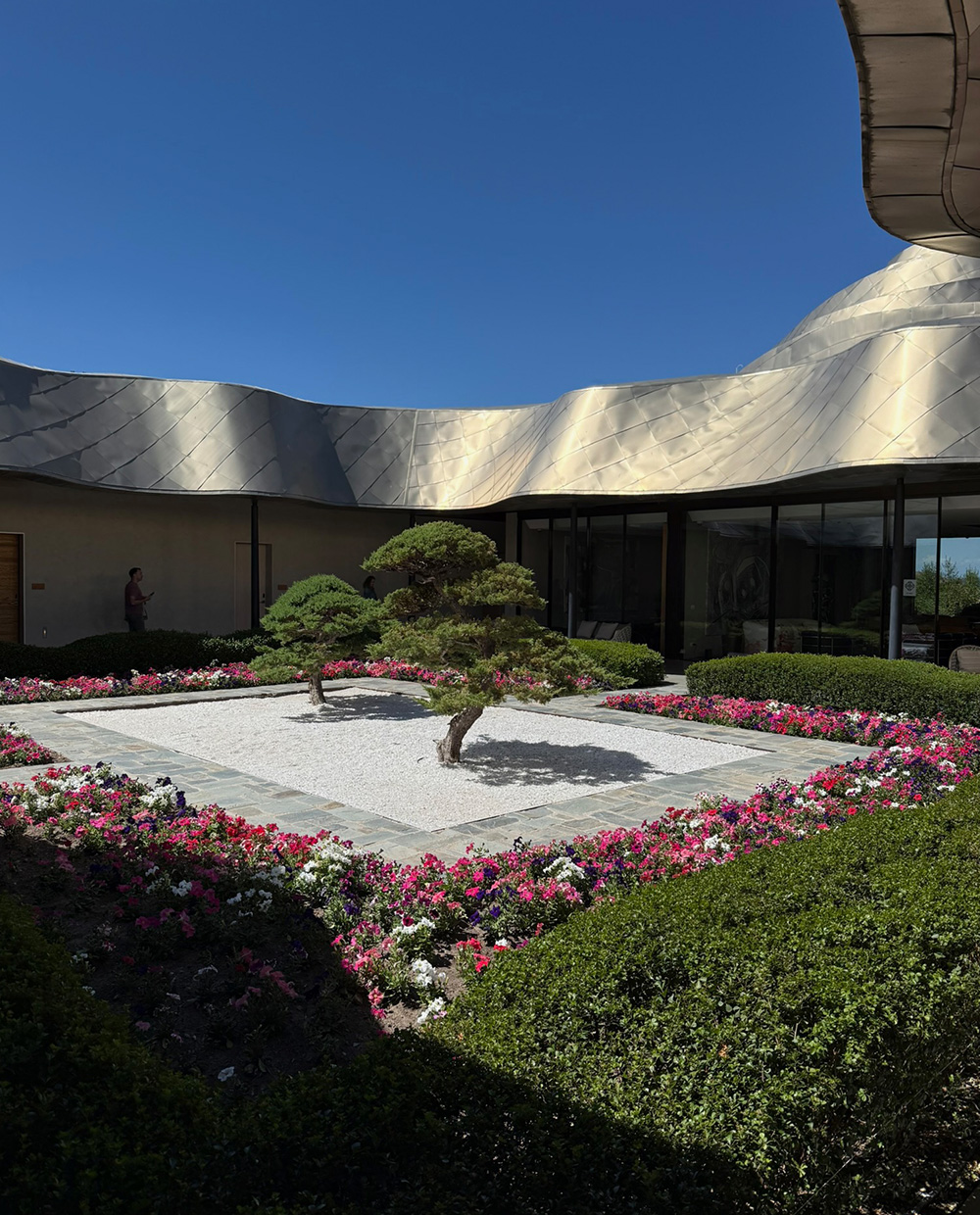
Inside, Vik Chile is a celebration of art and design, with each of the 22 suites individually curated by local and international artists. We loved our suite which featured artwork by Chilean artist Cristián Abelli (below left). Suites also have floor-to-ceiling windows that frame breathtaking views of the vineyards and surrounding nature.
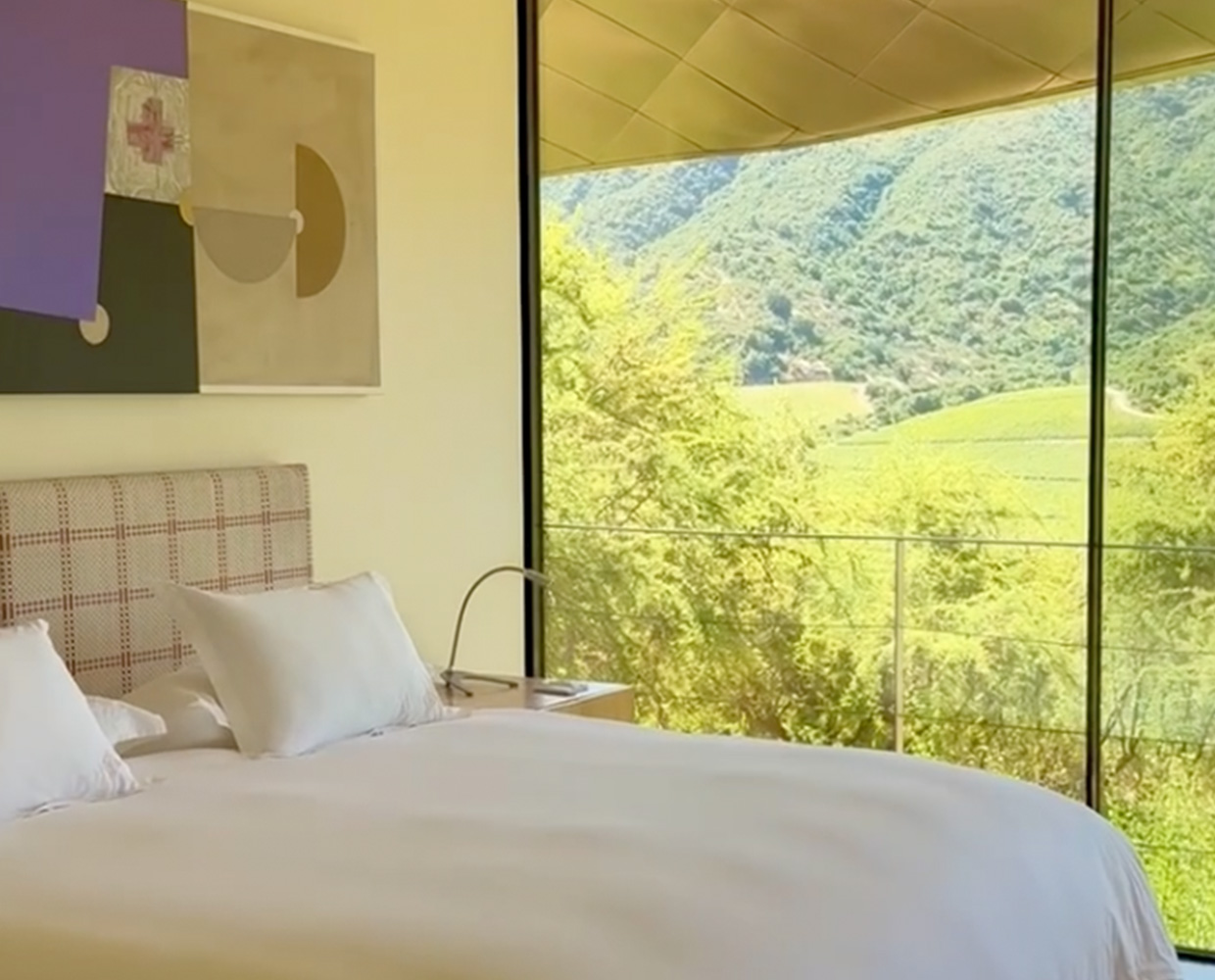
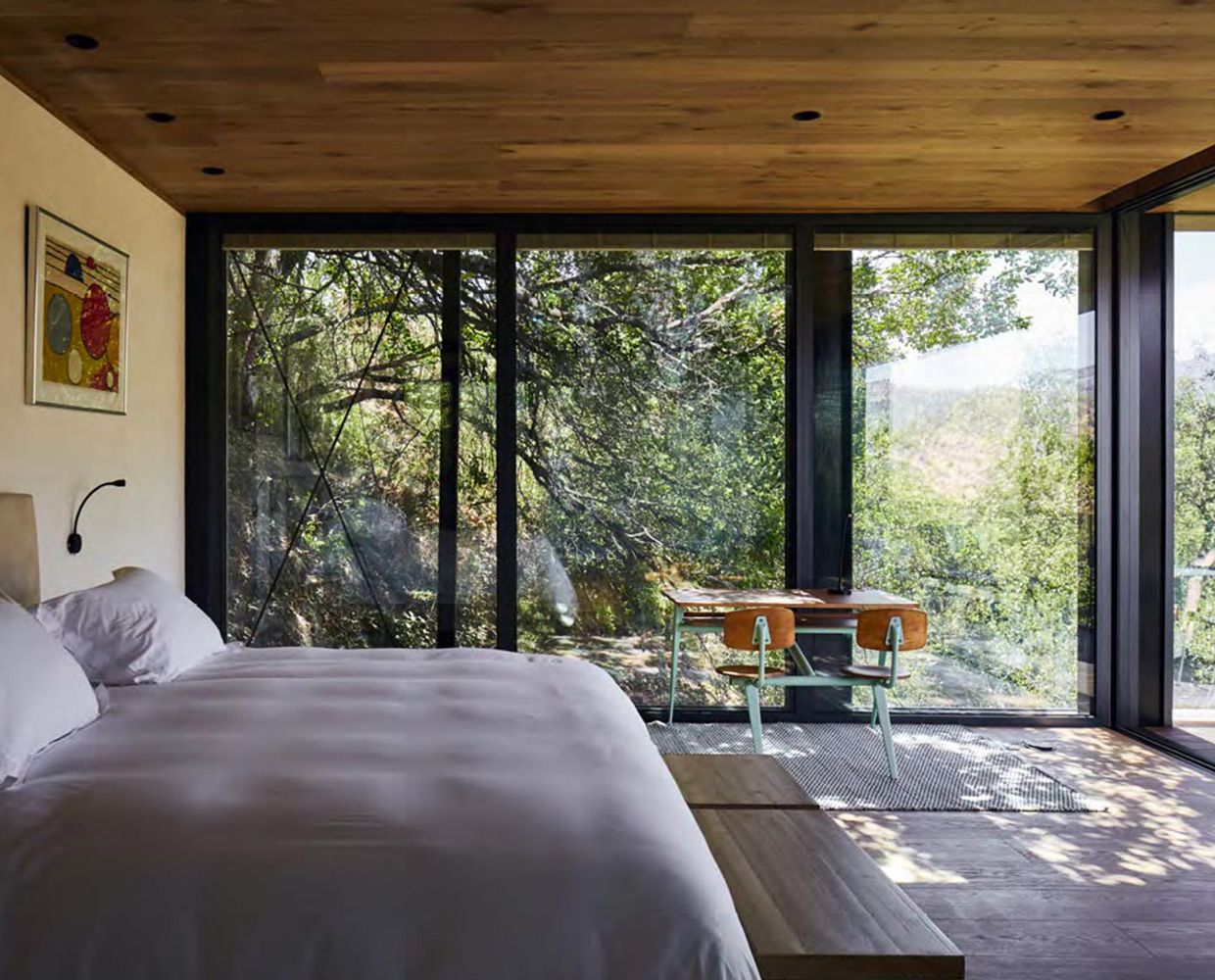
The Milla Milla restaurant was a gastronomic experience par excellence, with some of the most creative, beautifully presented and delicious food we’ve ever had in any hotel. Each meal was, of course, accompanied by several glasses of wine from the estate! The menu featured Chilean specialties crafted with fresh, local ingredients, complemented by the panoramic views of the valley.
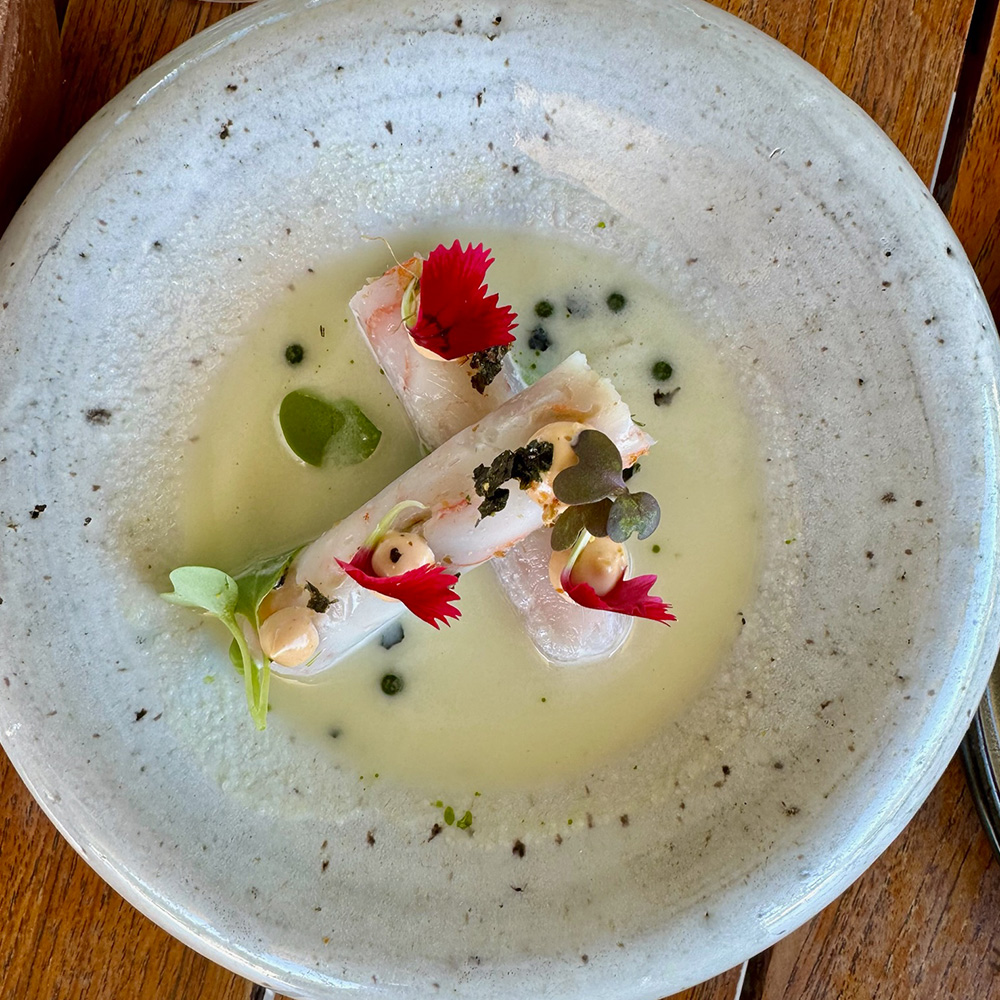
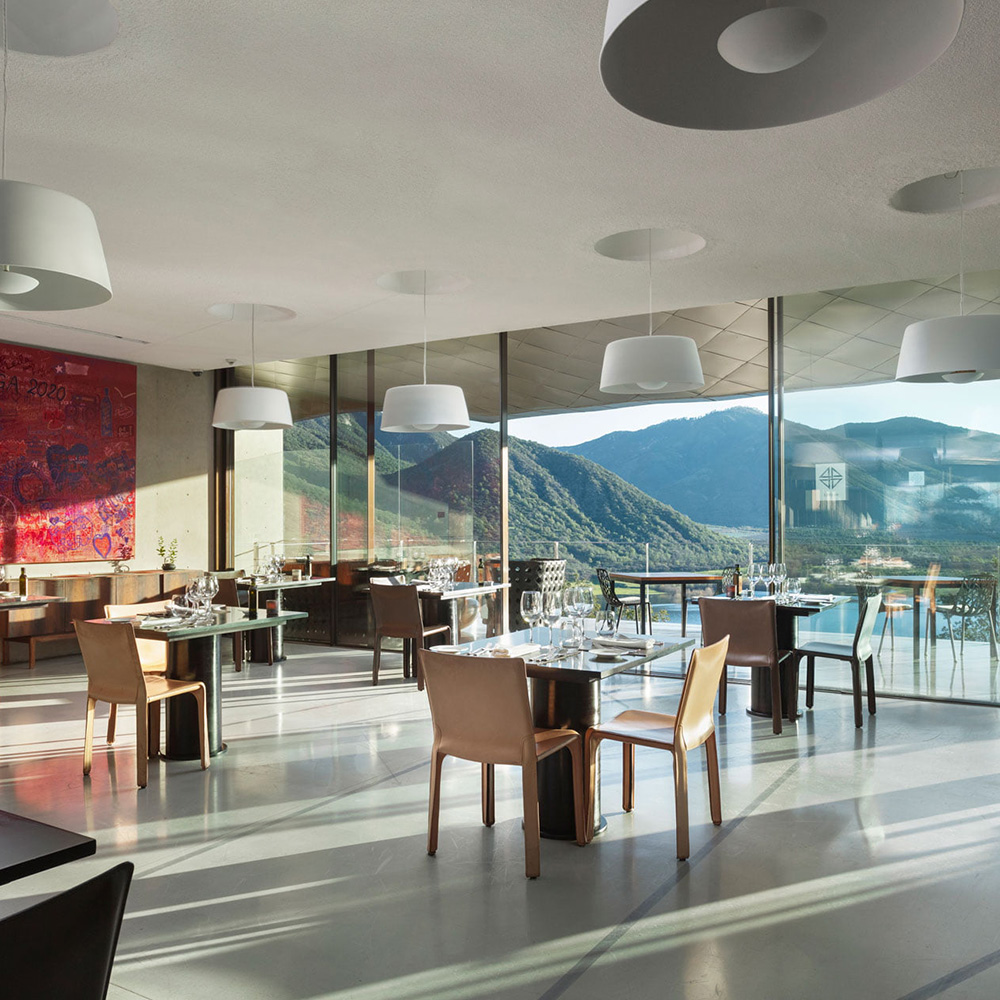
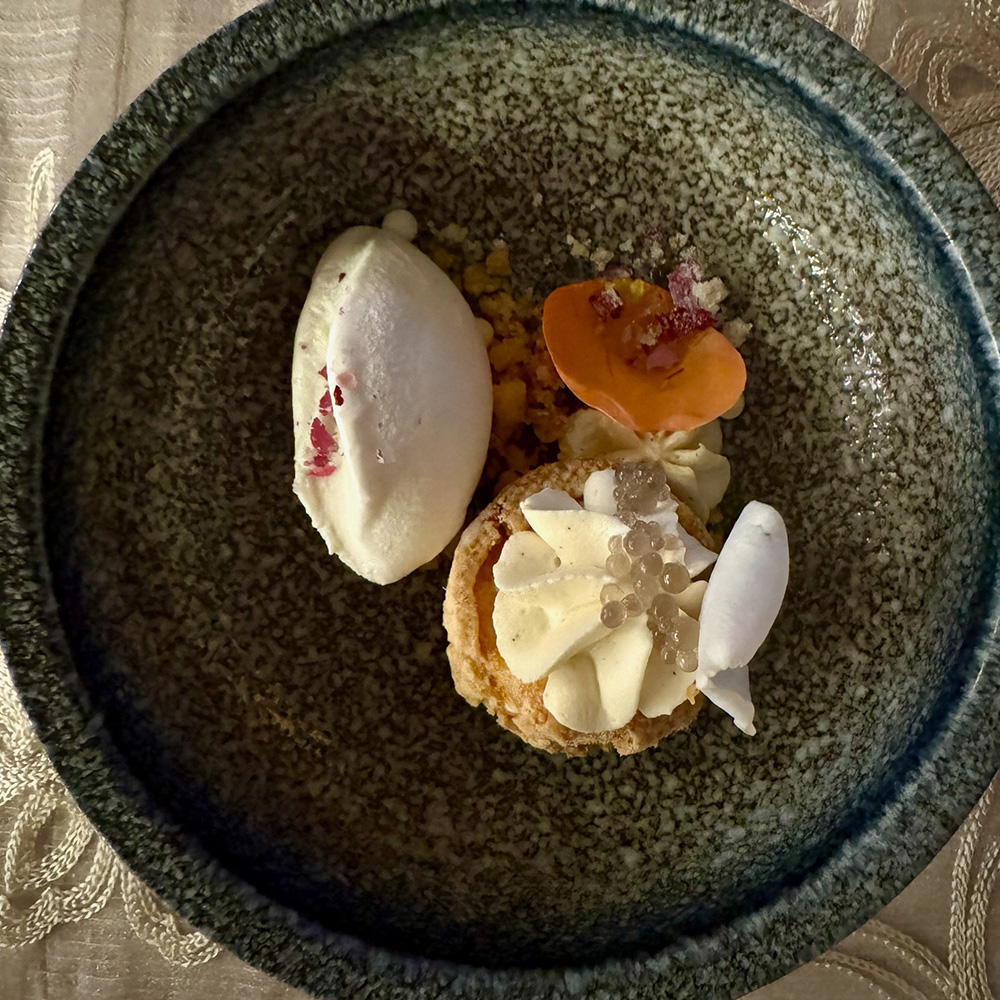
Do
There is a wide variety of activities on site; we could have happily spent more than the two nights we stayed to try them all! There is an impressive infinity pool that was the perfect spot to lounge and relax after seven days in the Atacama and Salar de Uyuni. For relaxation, there is also a holistic Wine Spa.
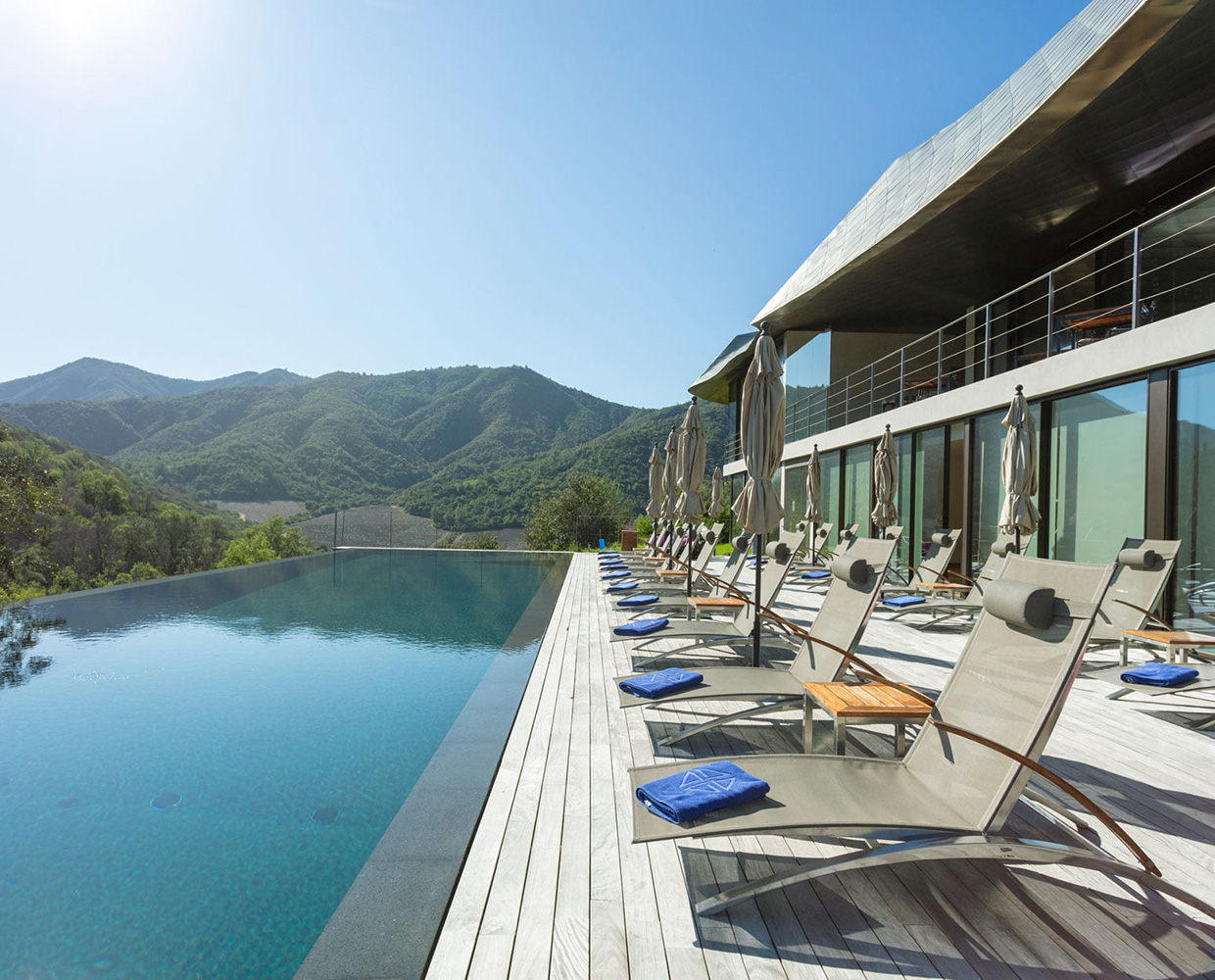
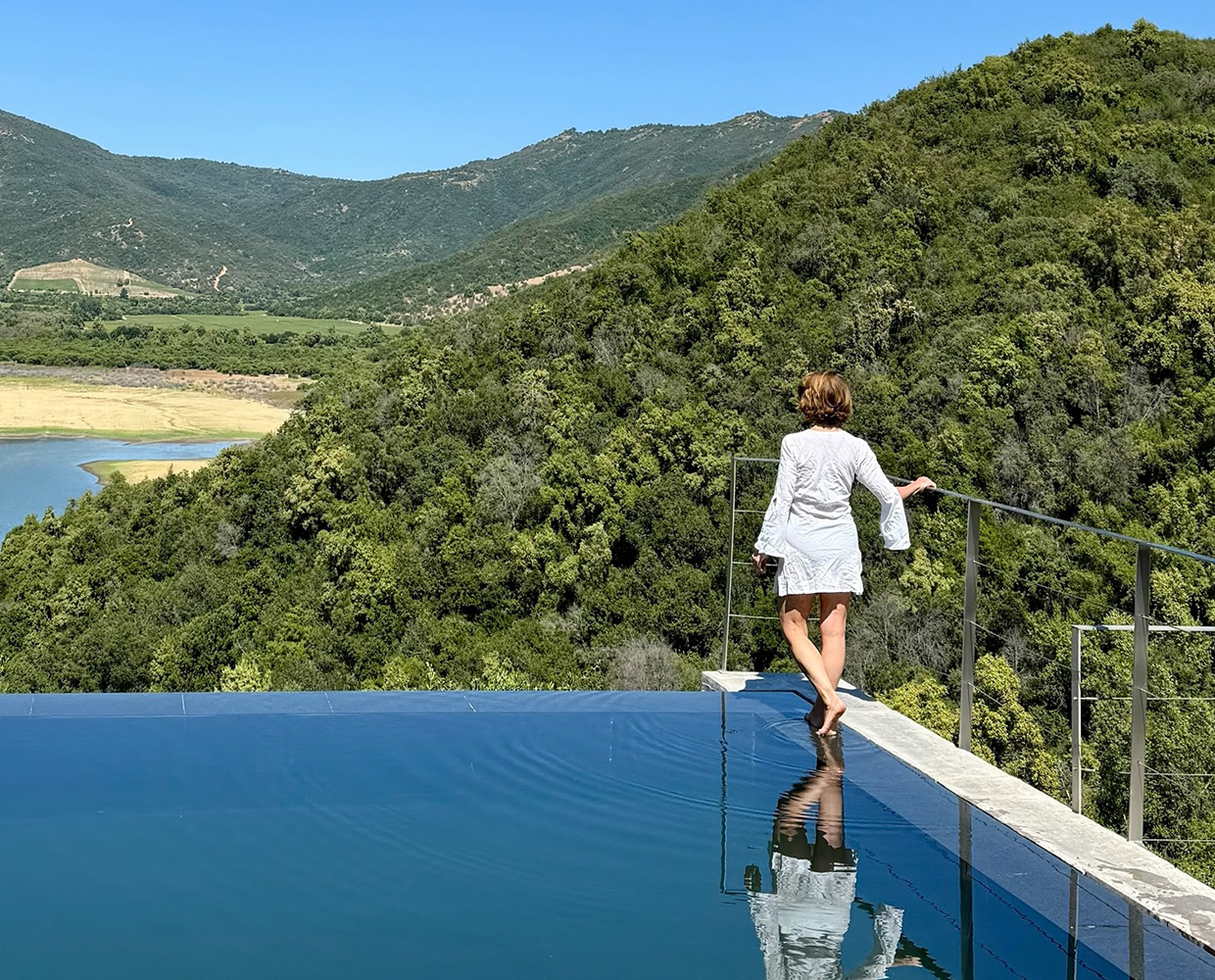
Complimentary outdoor offerings we took up included mountain biking and horseback riding through the vineyards. We also had a tour of the hotel’s garden which produces a lot of the fresh ingredients for the kitchen. There is a lovely, more laid back restaurant at the gardens called Vik Zero: check with reception if this is open on the days you stay (it was closed when we were there).
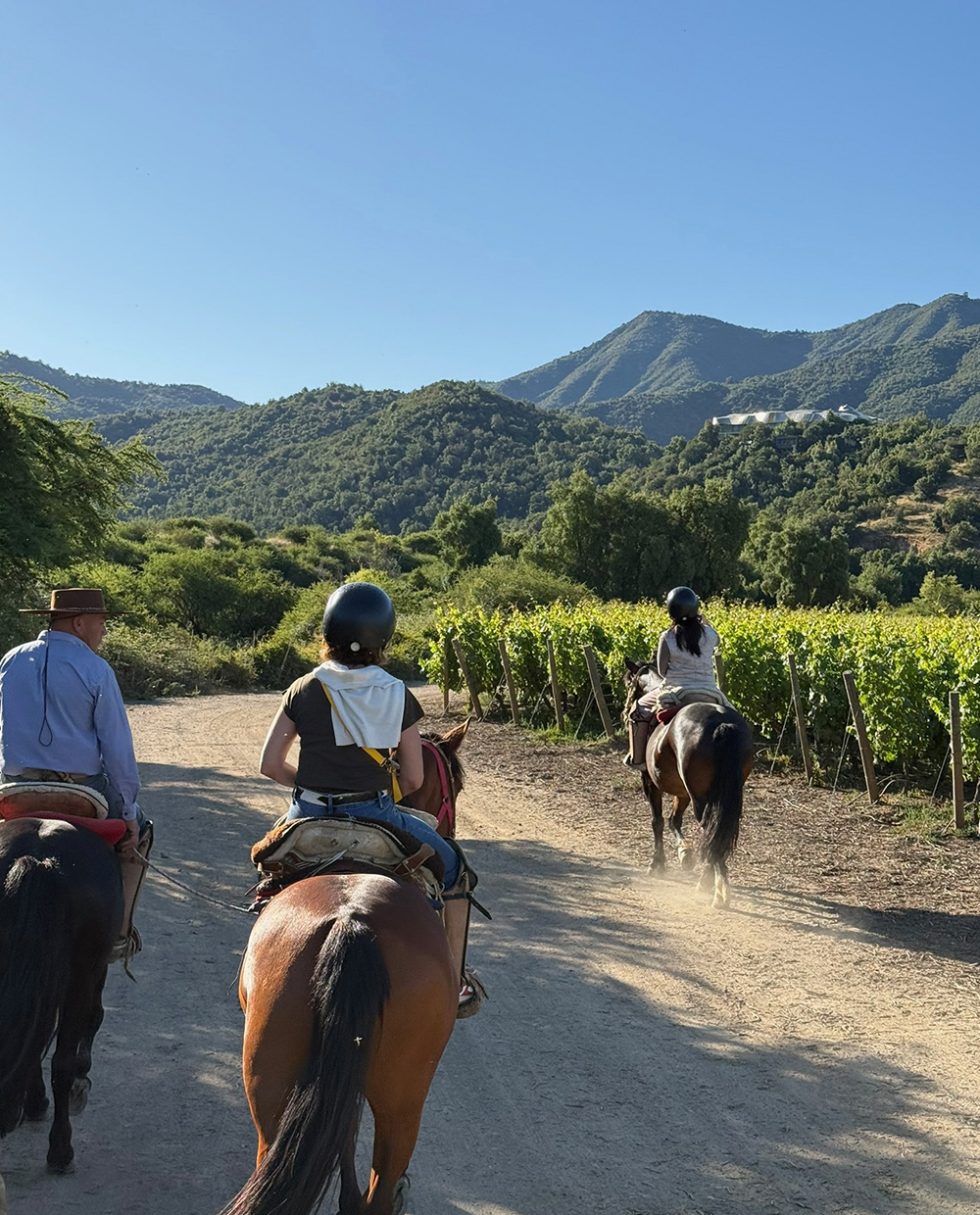
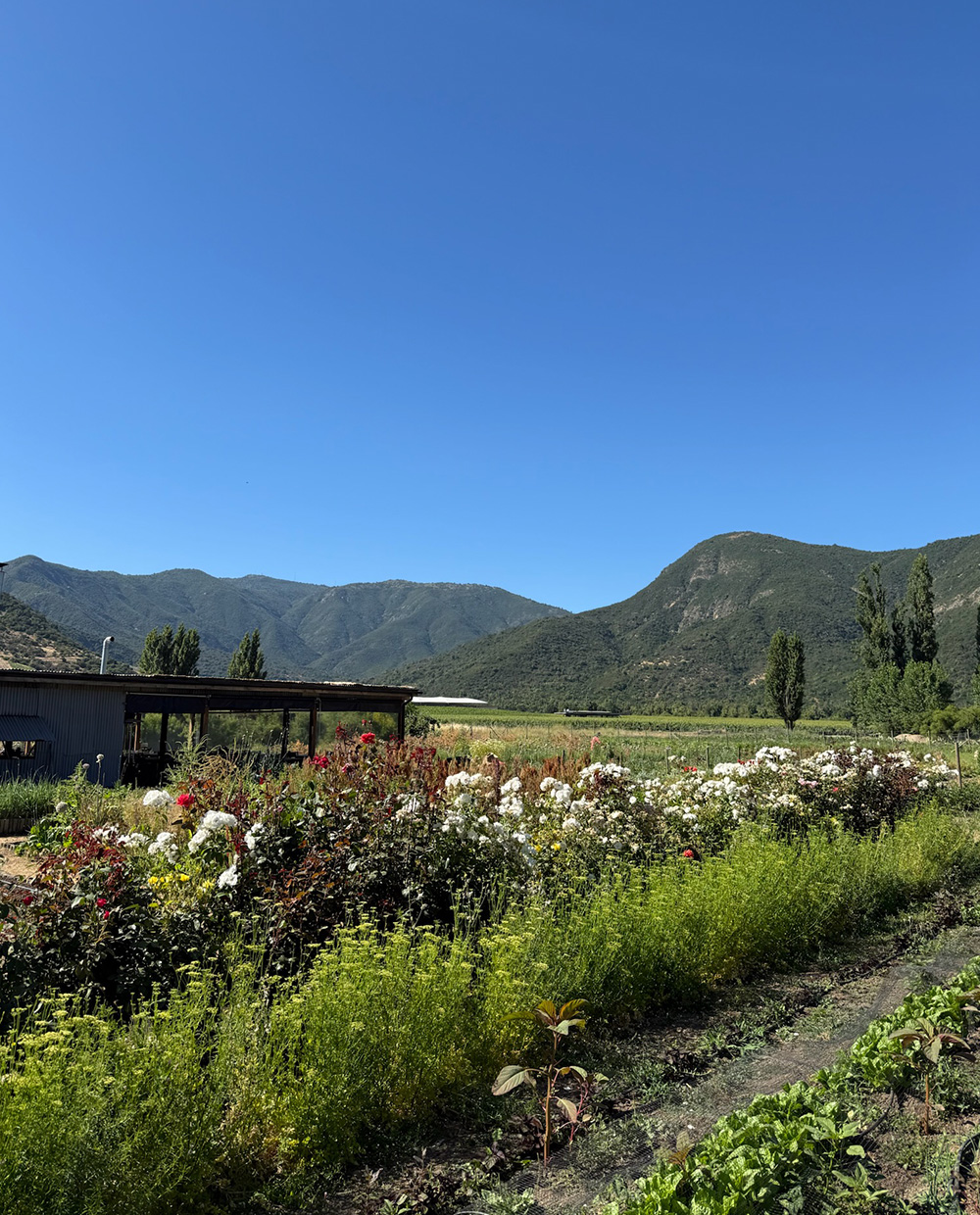
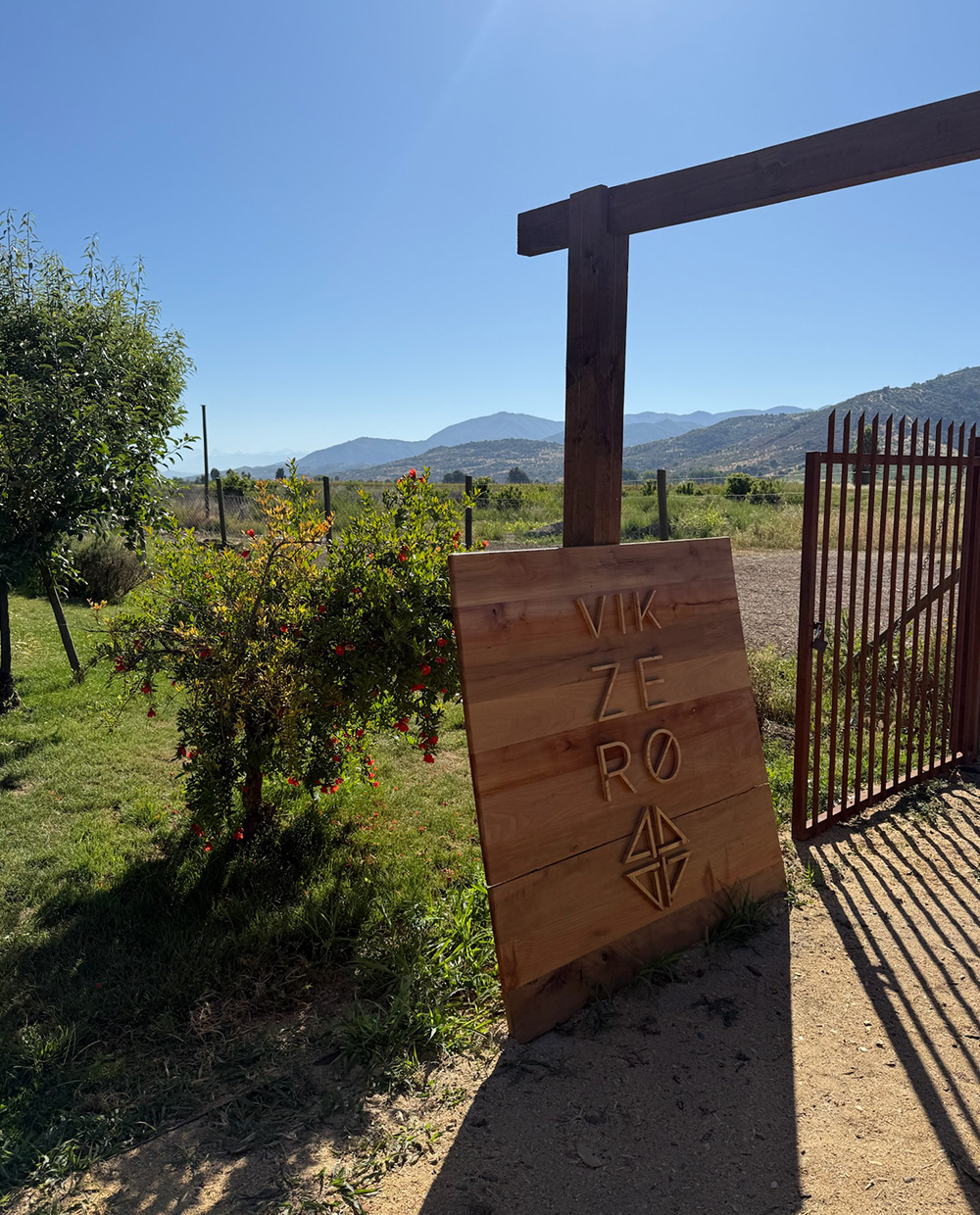
Last, but definitely not least, we had a tour of the impressive Viña Vik winery, another example of striking, contemporary design (below left). We ended with an enjoyable and informative tasting of the estates excellent wines in the creatively designed tasting room.
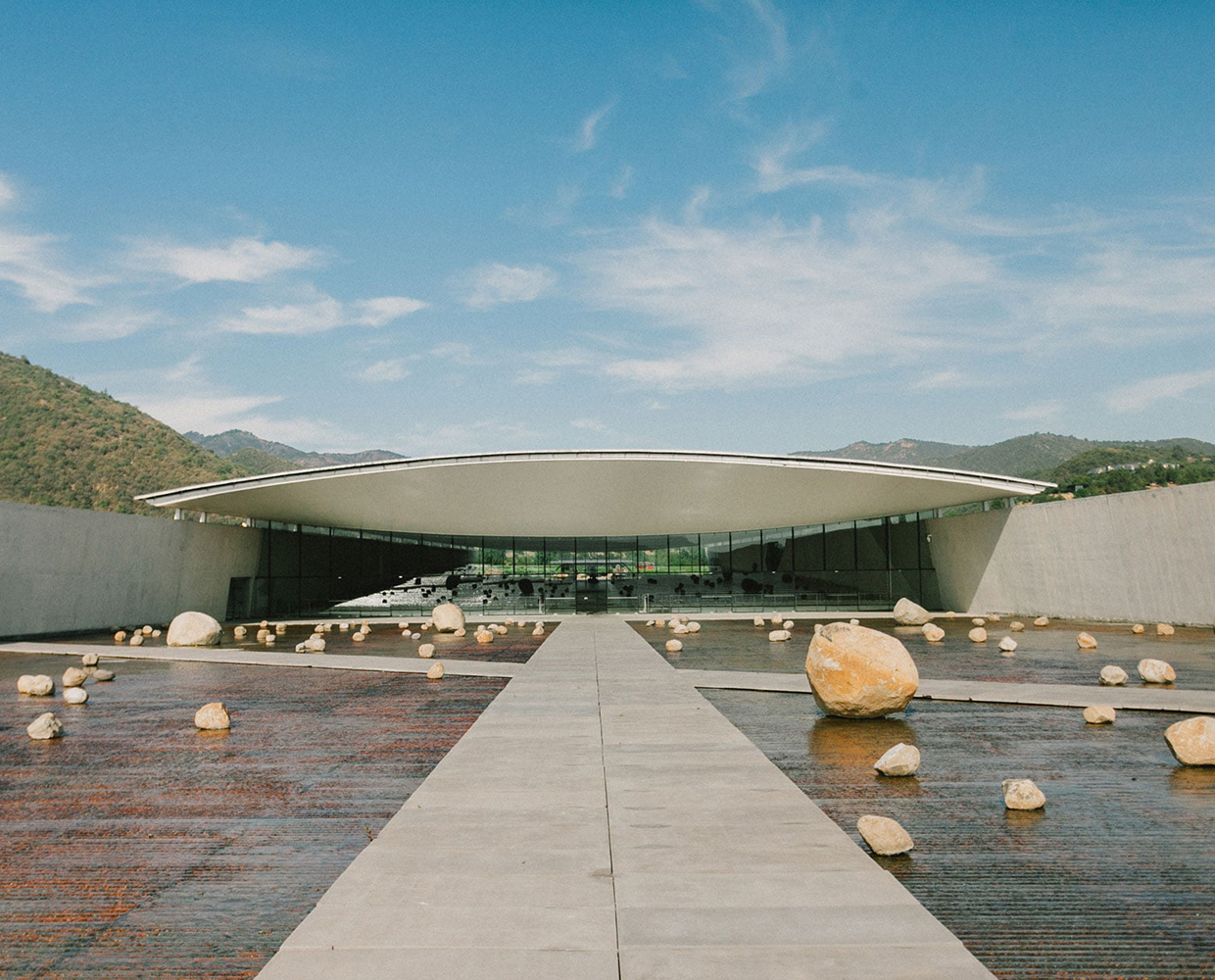
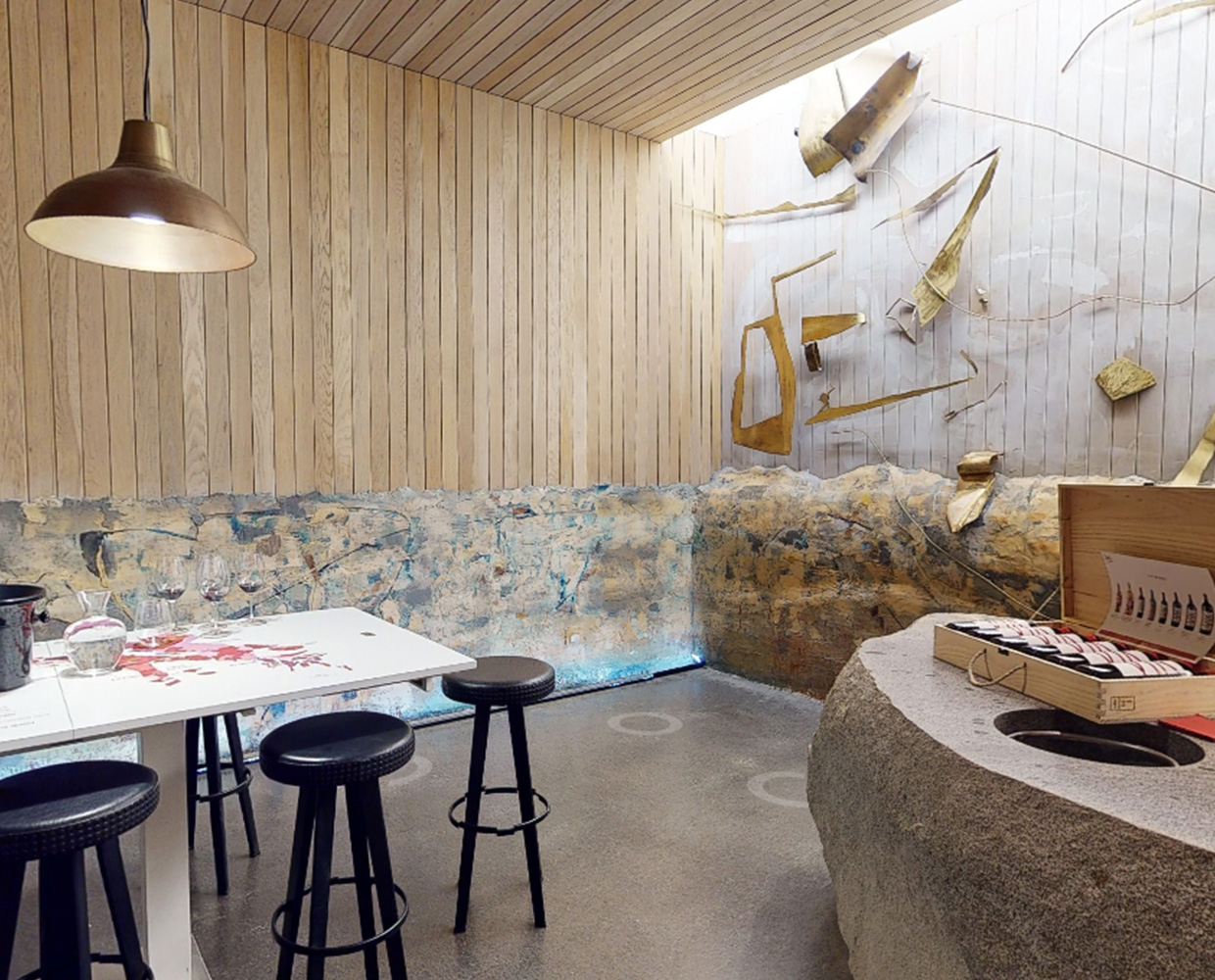
Torres del Paine, Patagonia
For the next part of our trip we flew south the Torres del Paine National Park. This part of in Chilean Patagonia has a stunning mix of rugged mountains, azure lakes and massive glaciers. What an incredible contrast to the arid desert of the Atacama we saw in the north of Chile!
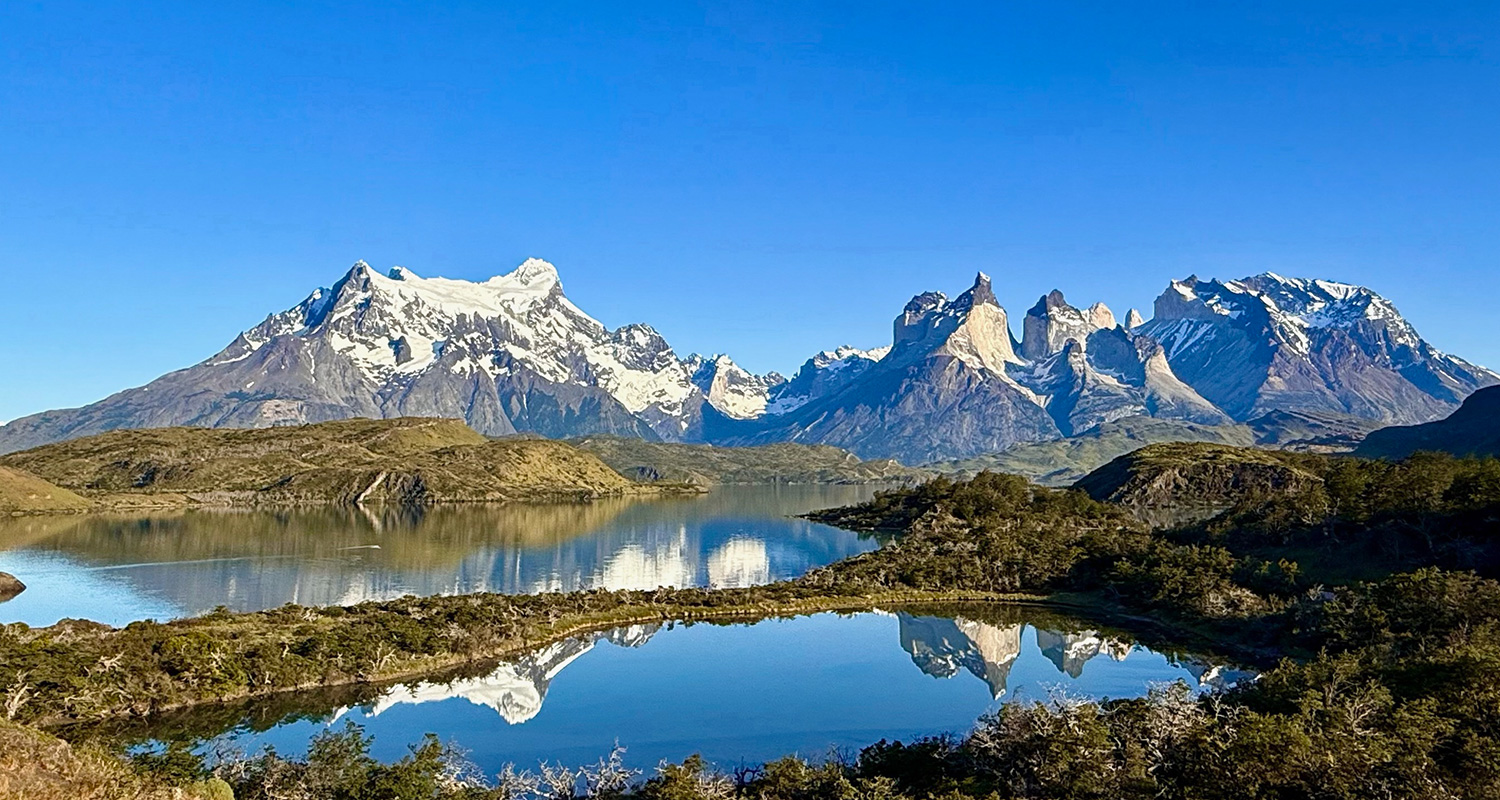
Stay
Explora Torres del Paine
Explora Torres del Paine is situated on the shores of Lake Pehoé, with stunning, sweeping views of the famous granite spires of the Torres del Paine. Next to the lodge there are the cascading waters of Salto Chico waterfall. This lodge is perfectly located as a base for exploring the park.
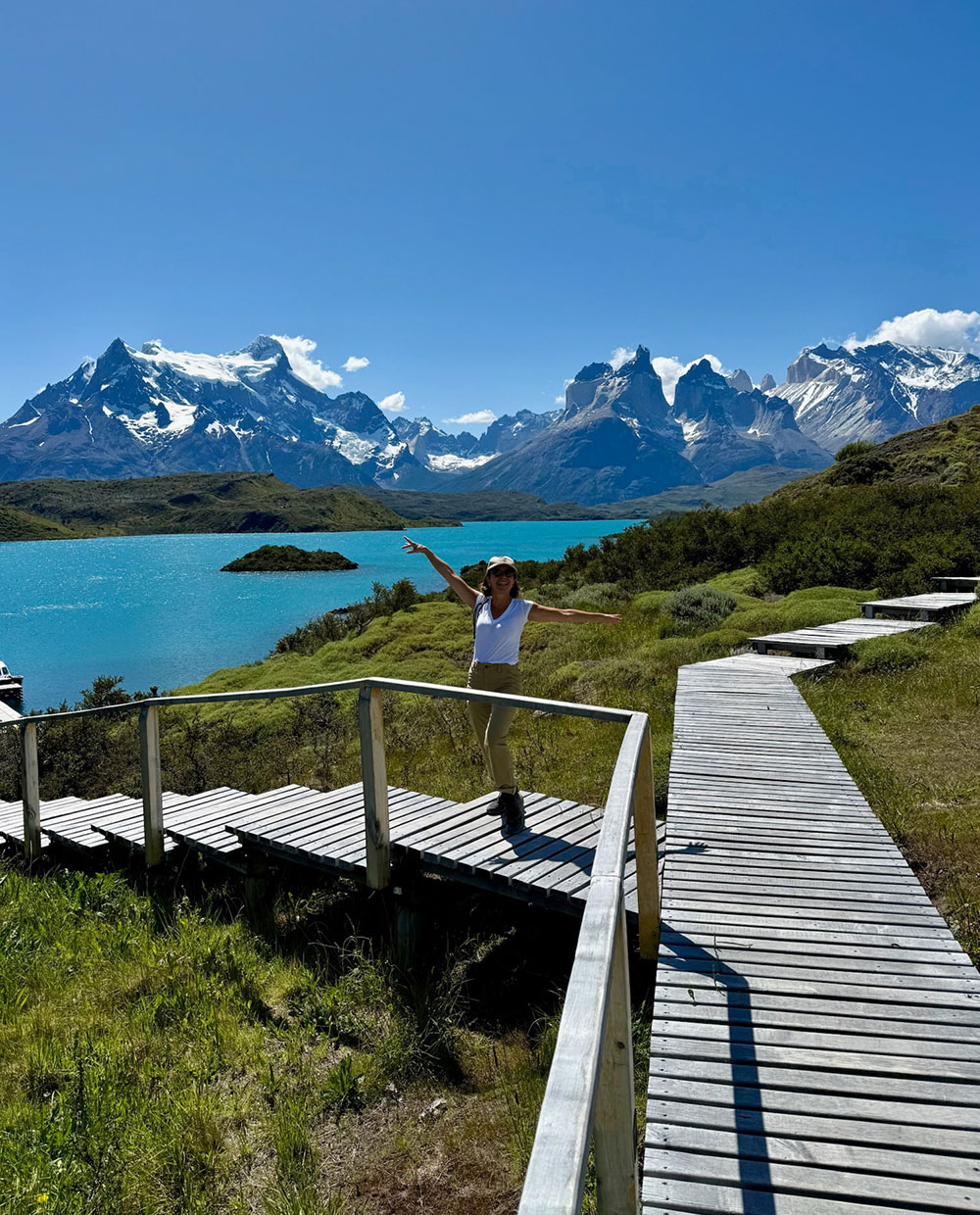
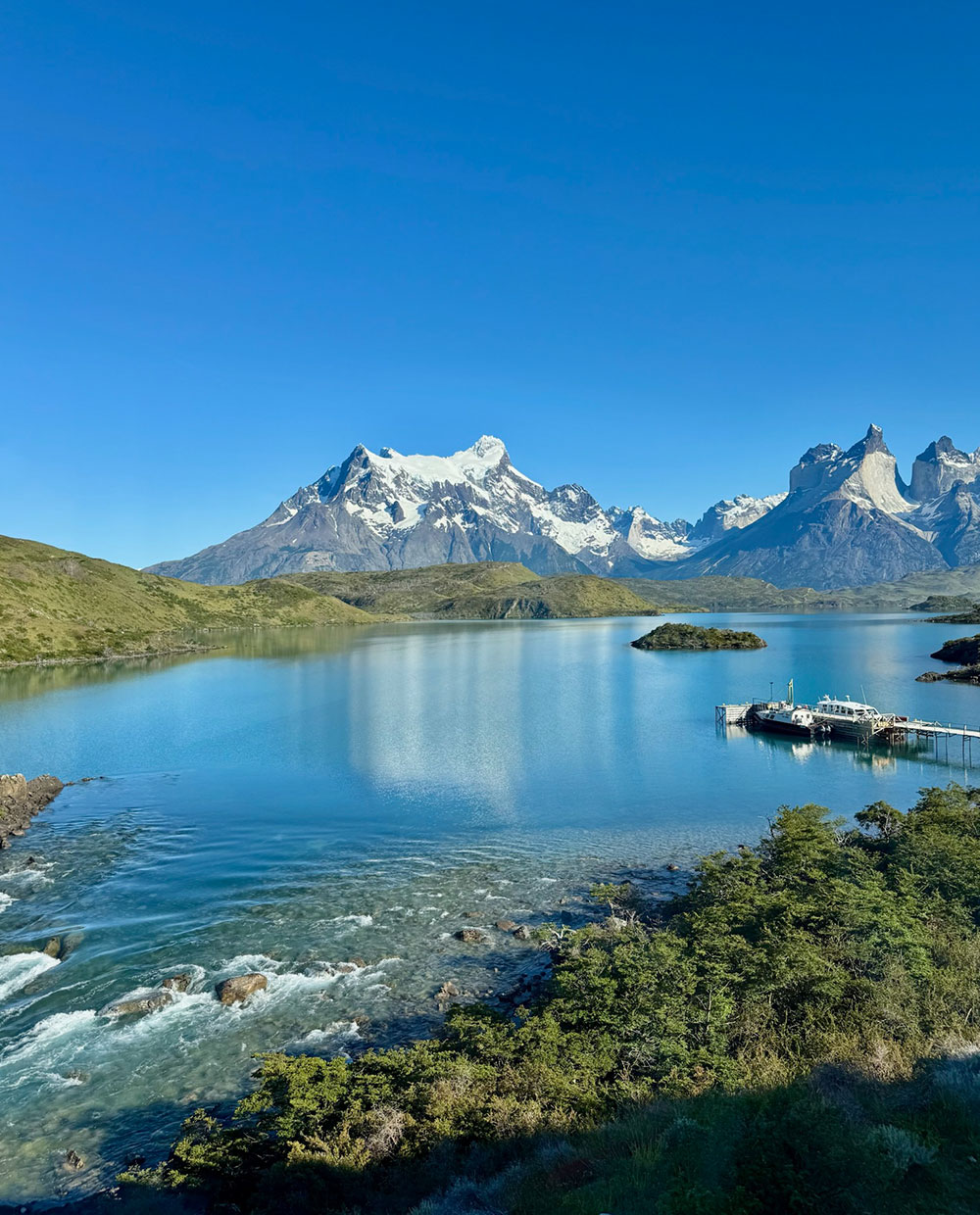
The lodge’s angular white façade mirrors the contours of the surrounding landscape. Inside, we loved the understated, contemporary interior design. Warm wood tones created a cozy atmosphere, complemented by regional textiles and artwork.
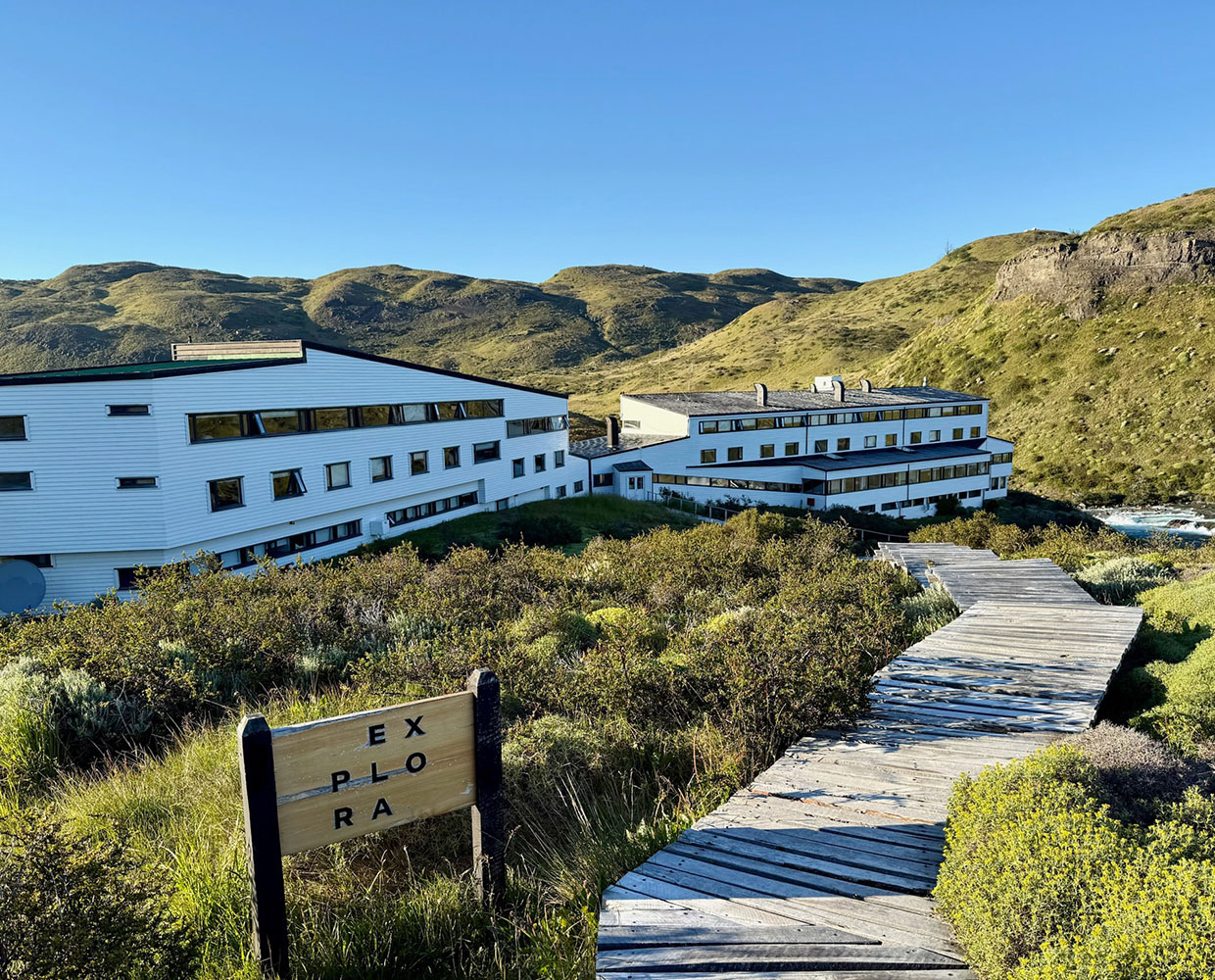
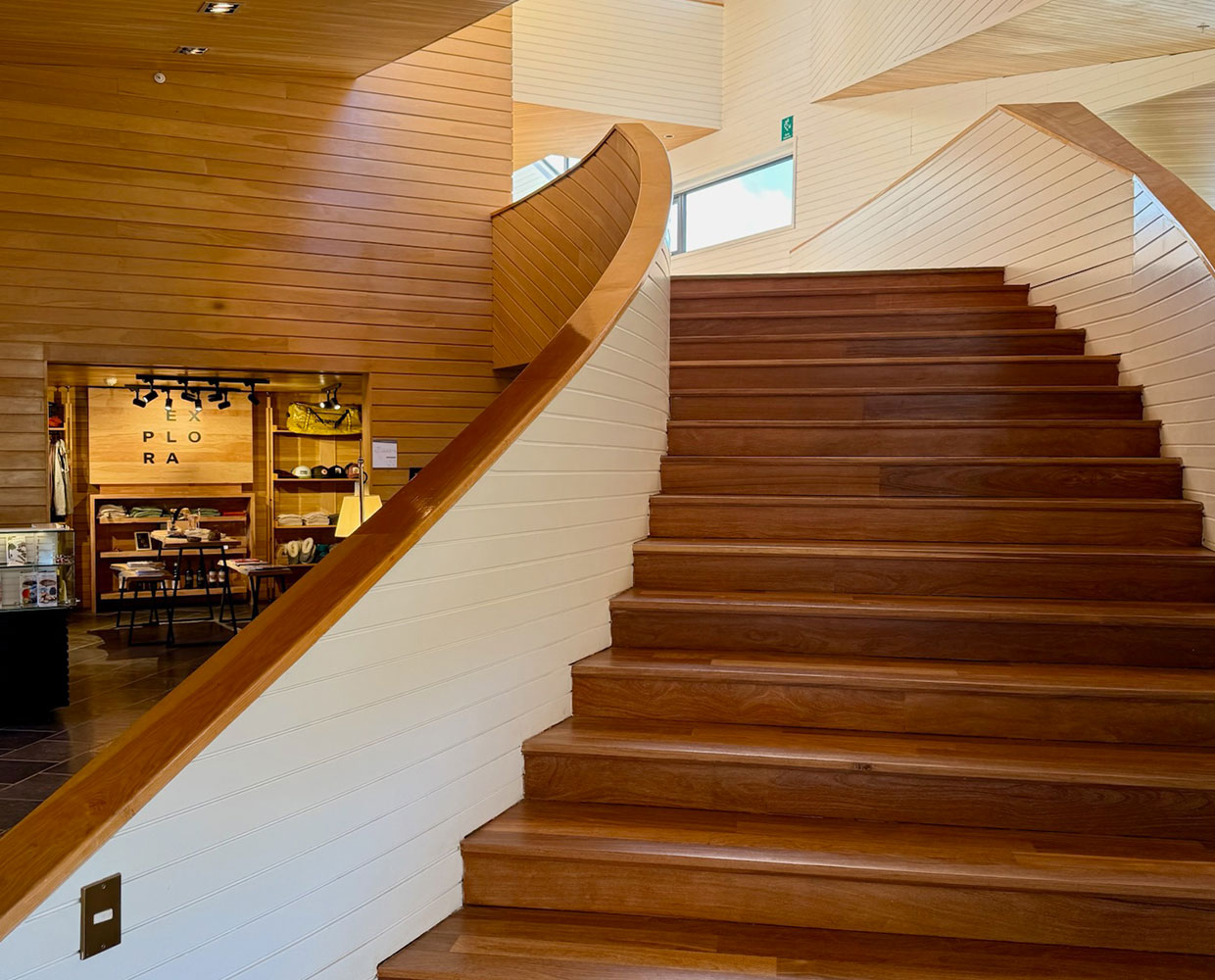
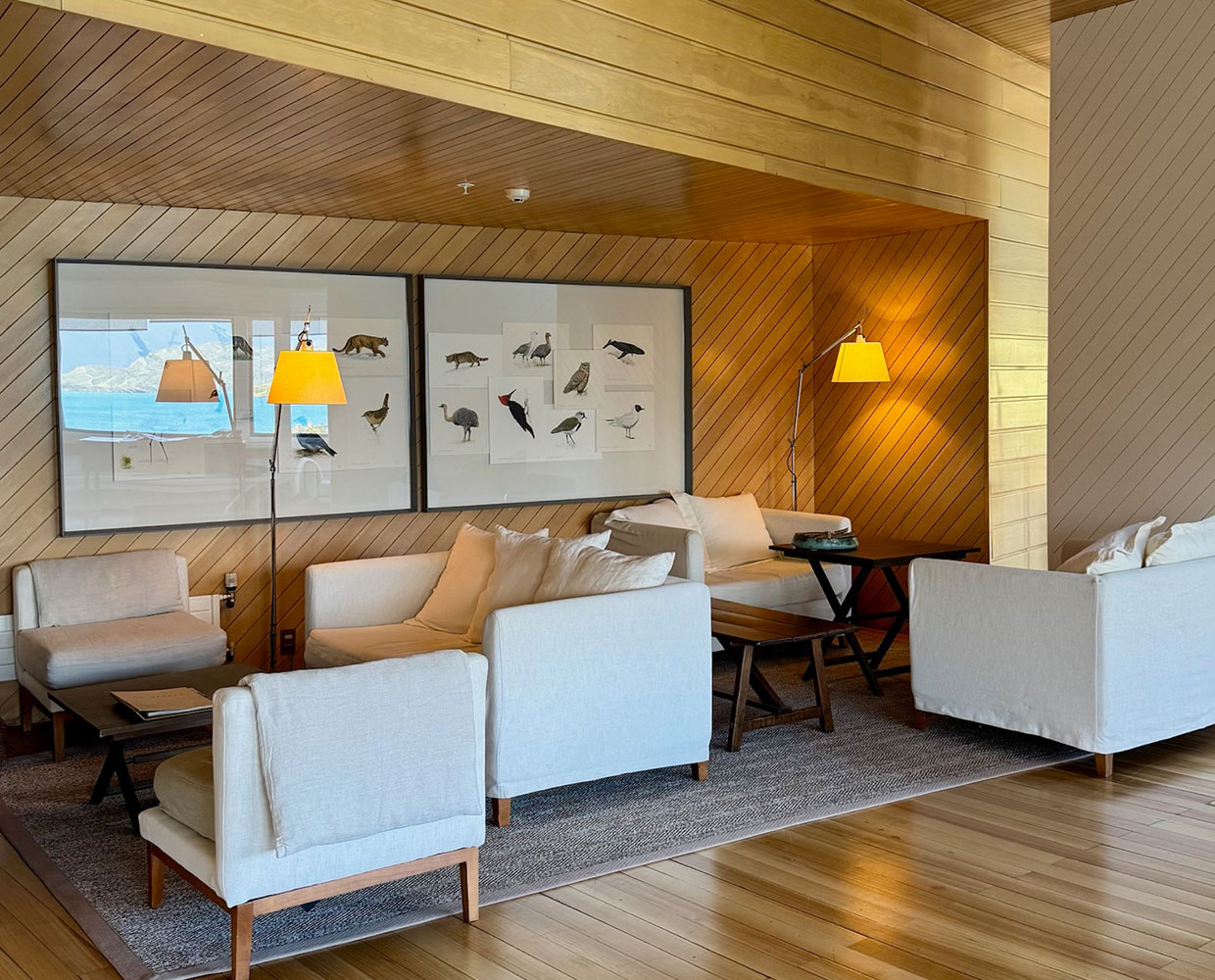
The communal areas, including the dining room and lounges, have large windows that frame the ever-changing Patagonian landscape, allowing you to remain connected to nature even while indoors. The other special feature of the Explora Torres del Paine was the relaxed and sociable vibe. Conversation with other guests flowed freely over dinner, sharing experiences from the day’s explorations, and we met some lovely people. All meals are included at the Explora along with Chilean wines and a great bar serving excellent cocktails. We ate very well during our stay, with delicious and well presented dishes inspired by the Patagonian countryside.
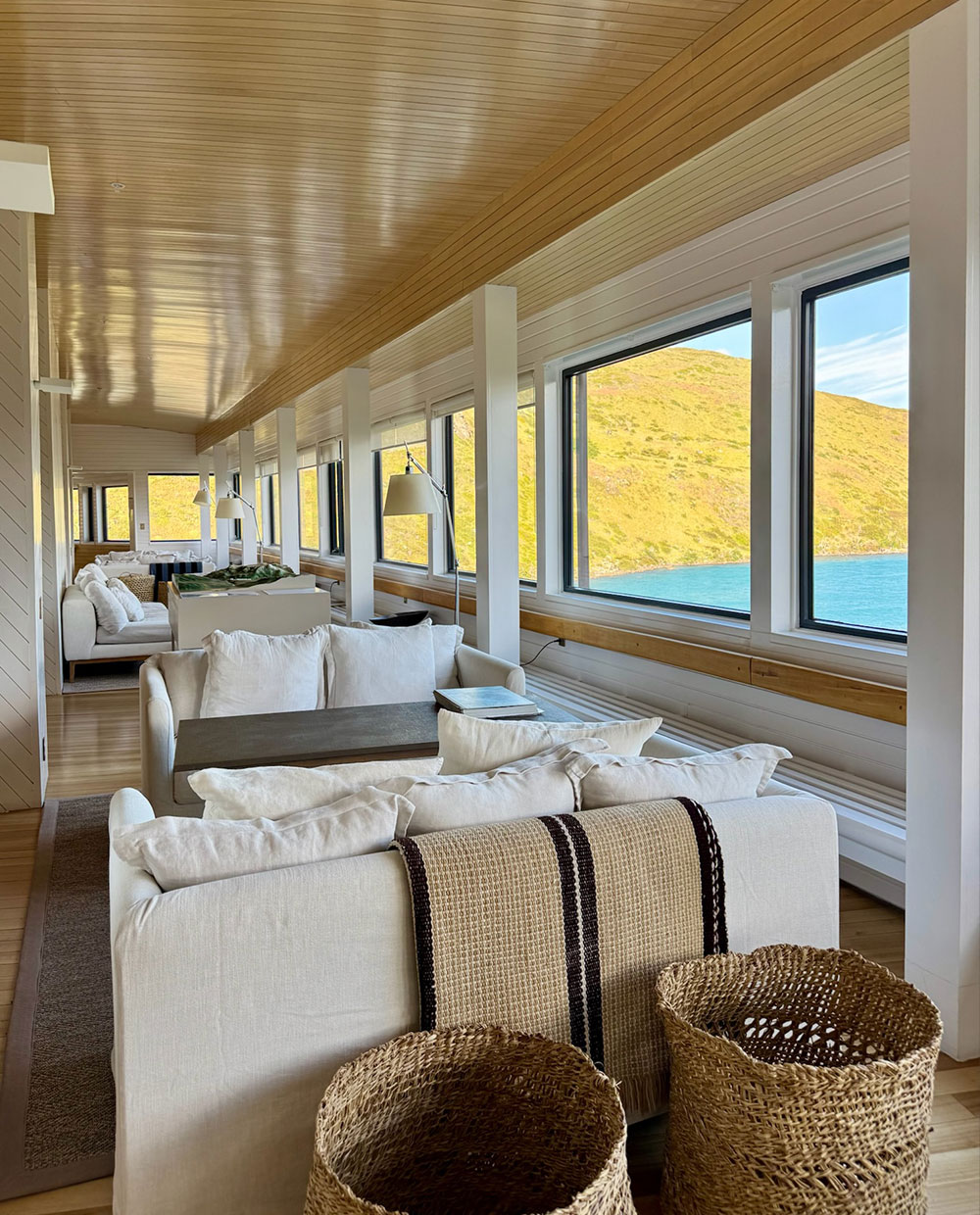
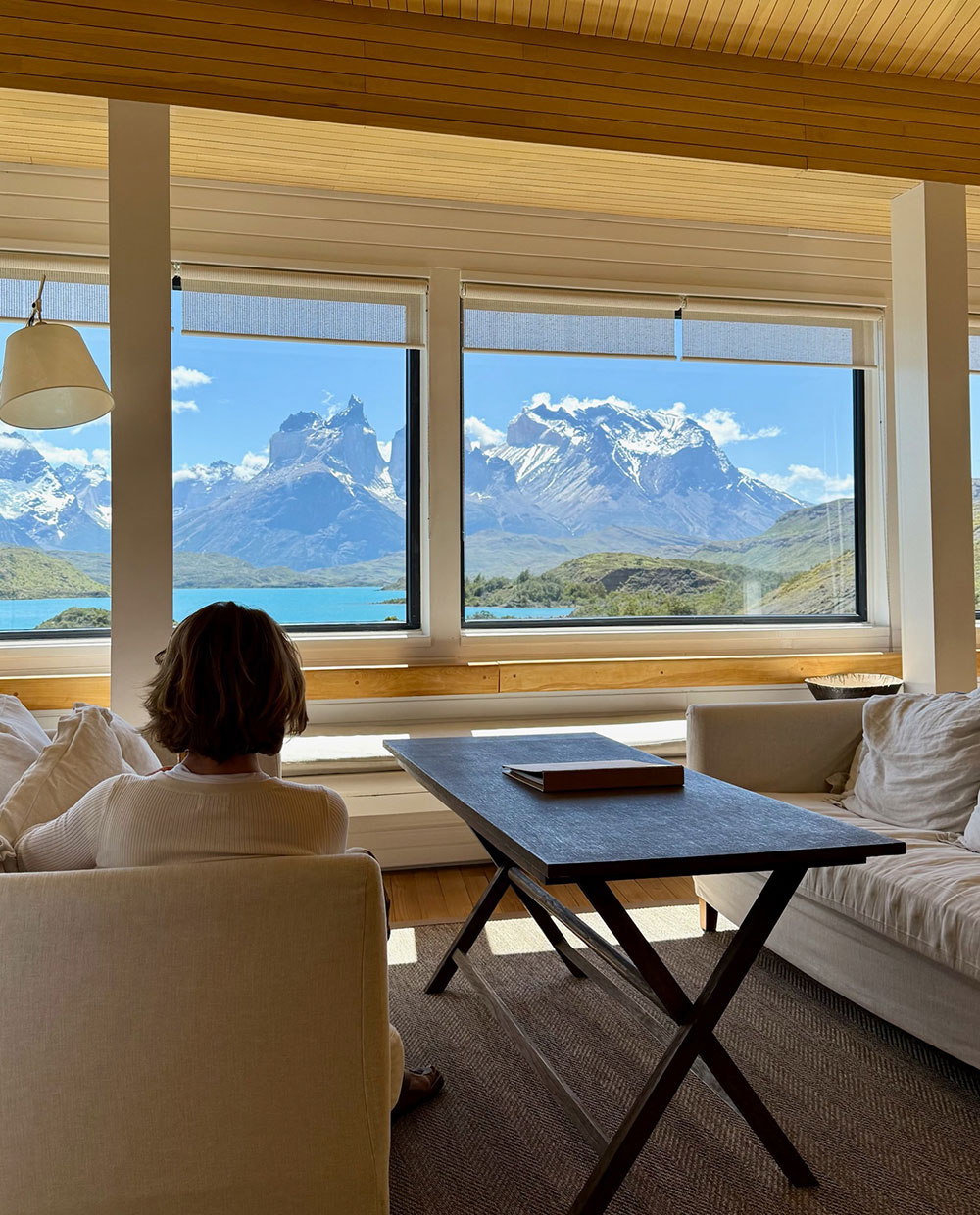
The 49 rooms offer views of the surrounding wilderness and have the same fresh, contemporary design as the lodge. We paid a bit more to have a Cordillera Paine room, well worth it for the simply stunning views of the mountain range (see the view below, which looks like a screensaver image!).
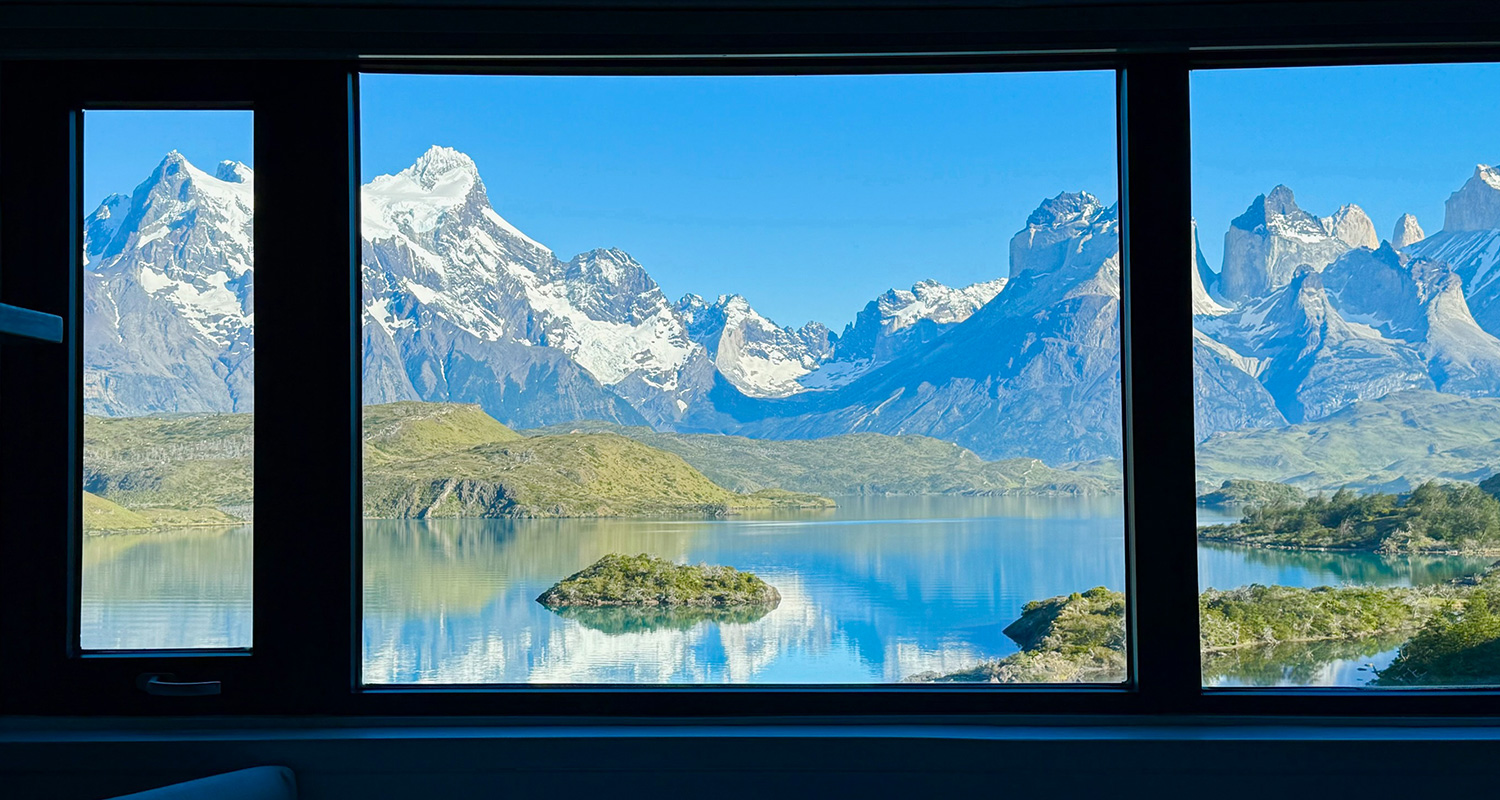
Relax
The lodge has some great facilities for some well-earned relaxation after a day of exploration! There is an indoor pool, sauna and steam room. Outside, a highlight of our stay was sitting in one of the several hot tubs with a glass of bubbly, admiring the spectacular views! We only dipped our toes in the chilly water of the lake, not being brave enough to jump off the pontoon. There is also a spa offering a range of treatments, though we didn’t have time to use it during our stay.
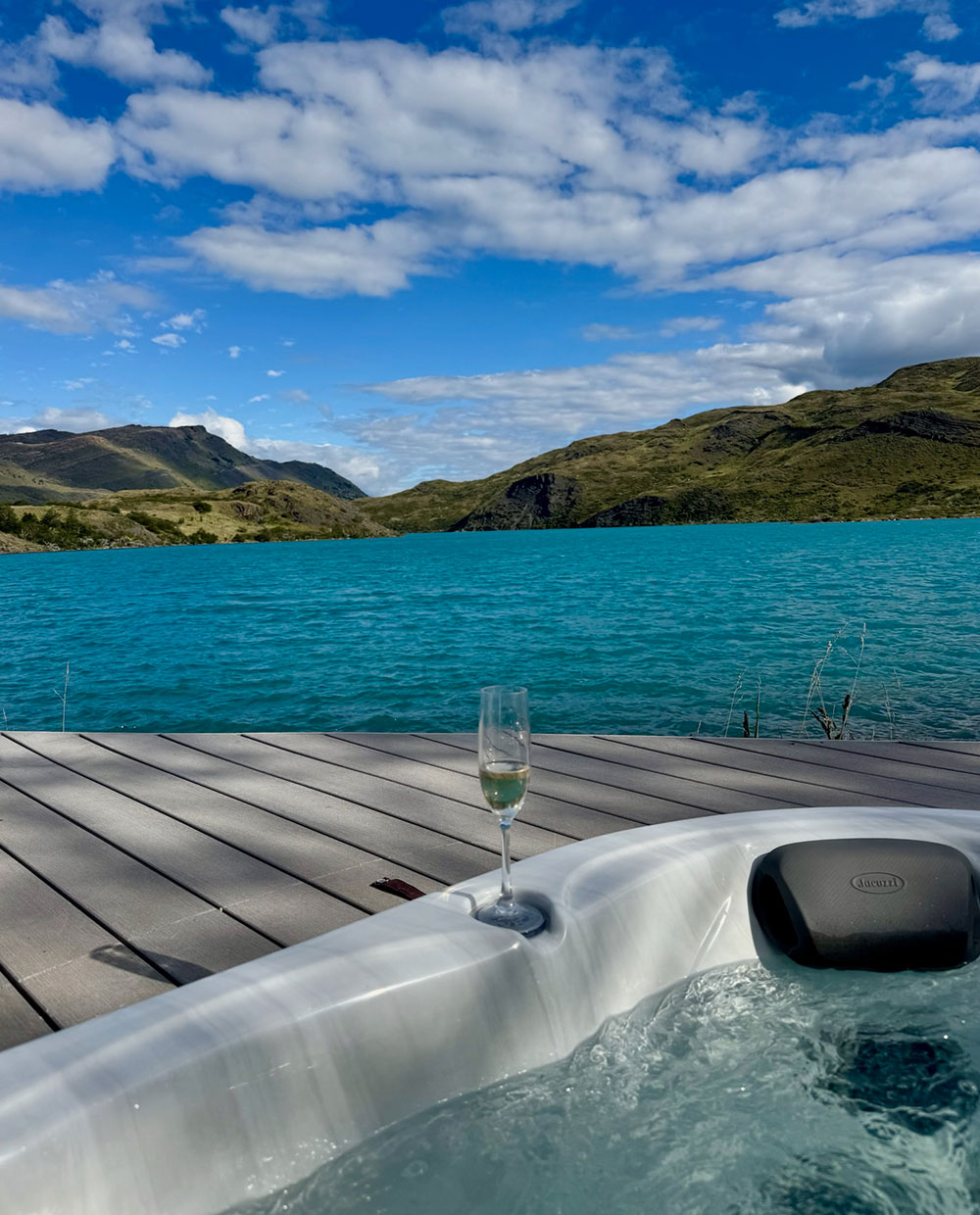
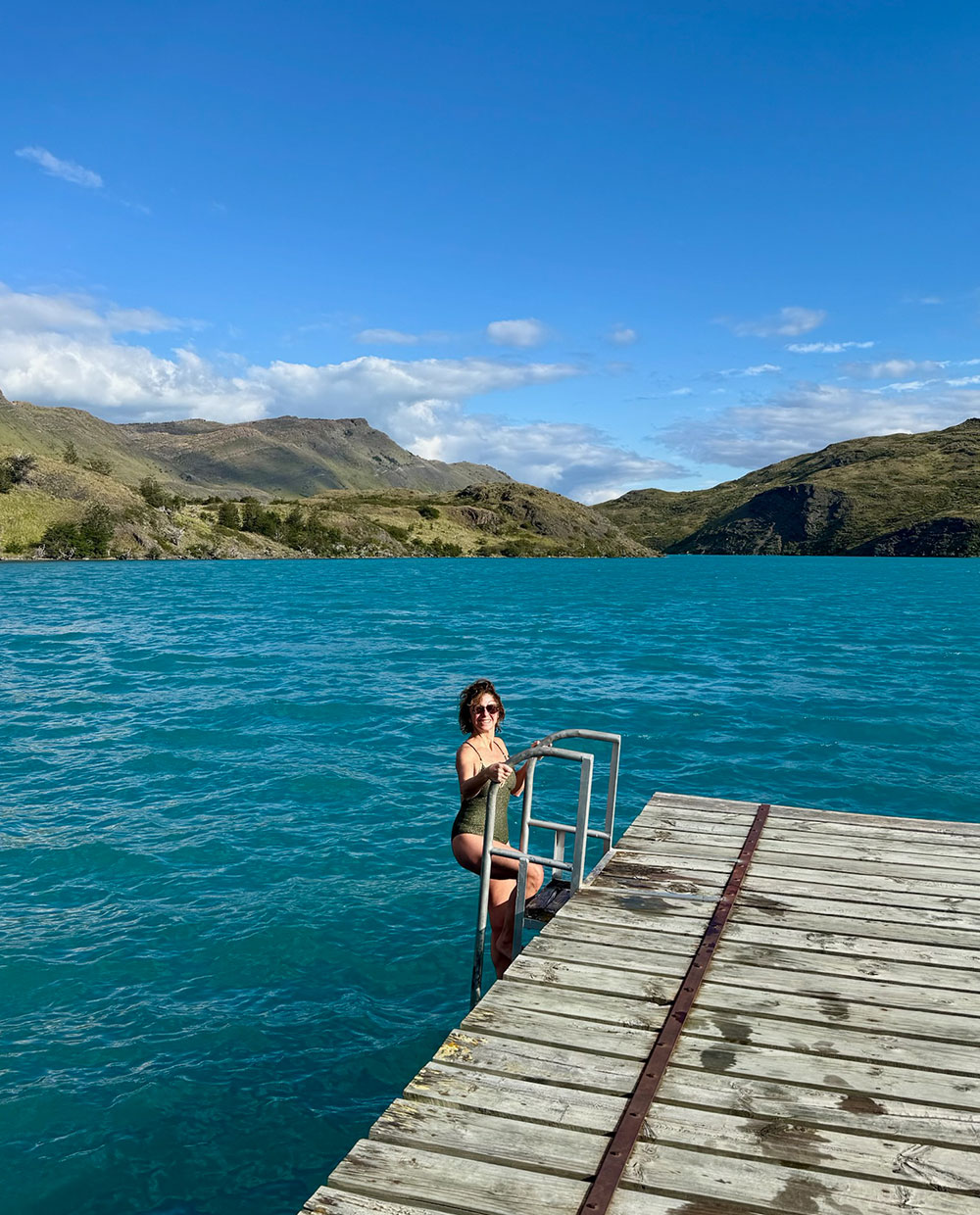
See & Do
The lodge offers over 40 guided explorations, ranging from challenging mountain treks to more leisurely walks. We liked the personal approach to planning each day’s explorations, sitting down each evening with an expert guide to discuss our interests.
On our first morning, we did a leisurely hike to the turquoise waters of Lake Nordenskjöld, at the foot of the massif, with views of a waterfall on the way.
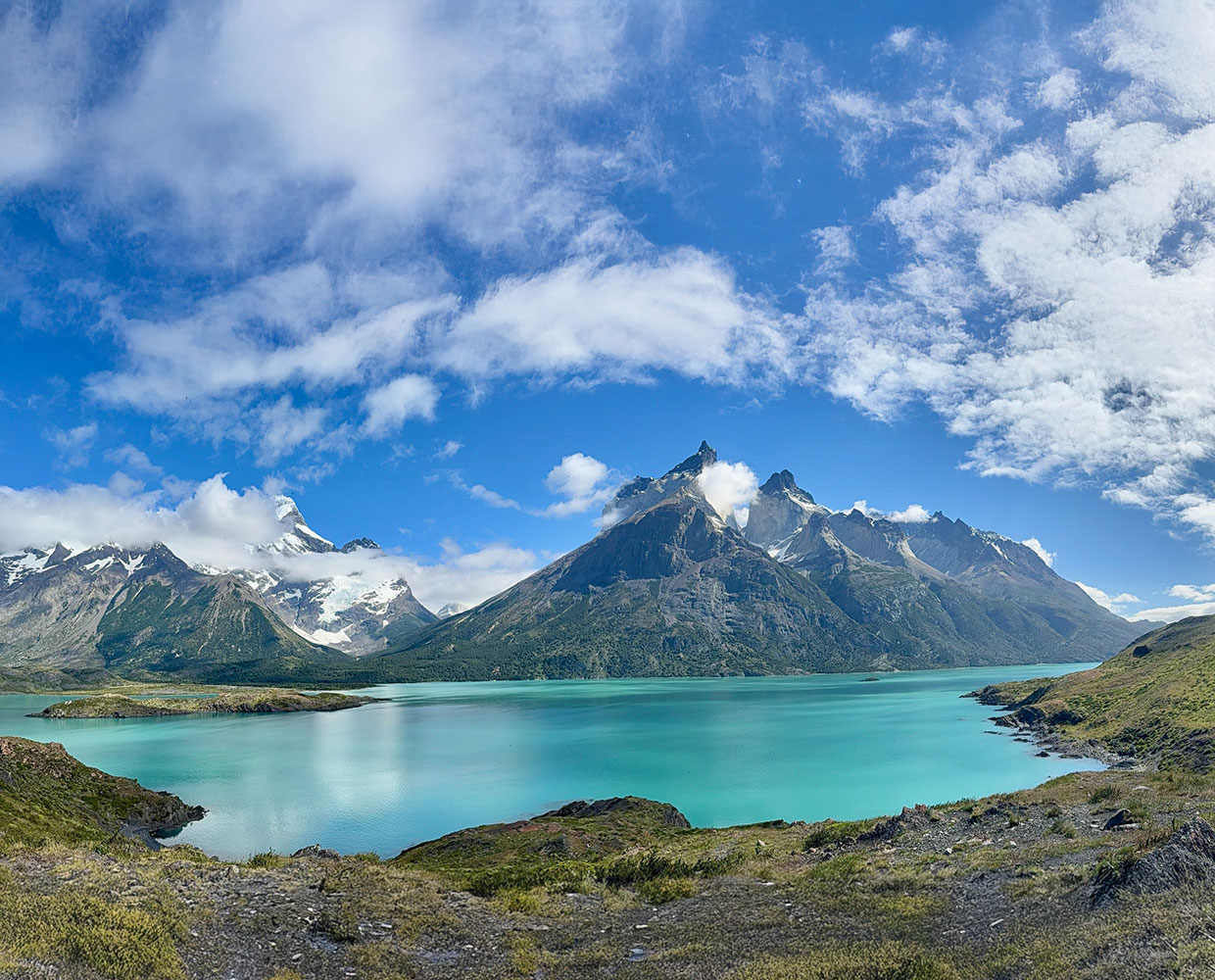
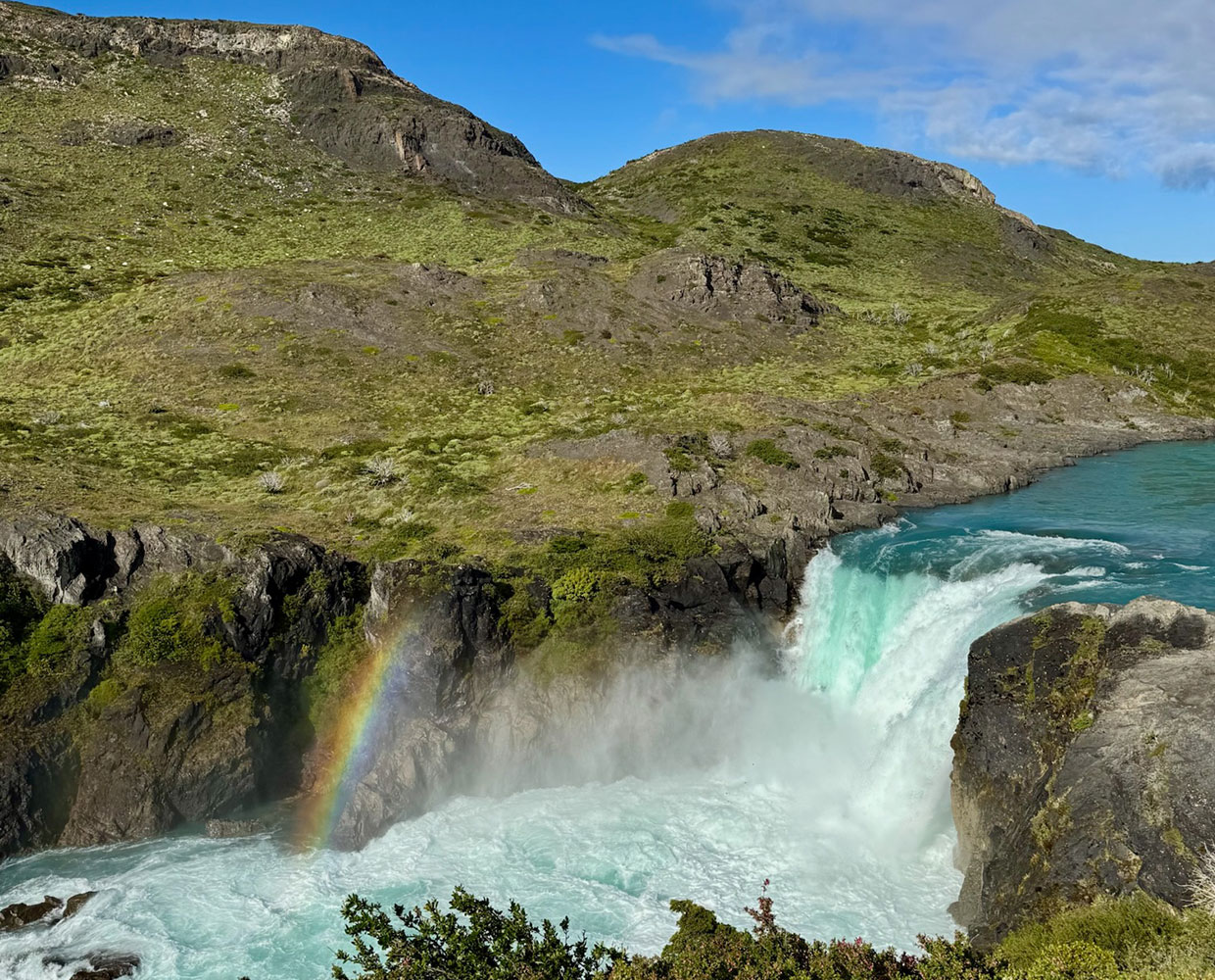
In the afternoon we did another easy hike to the shores of Lake Sarmiento. We walked along a trail with low vegetation and views of the Paine Horns. We then walked down to the beach on the shores of Lake Sarmiento with striking calcium carbonate rock formations.
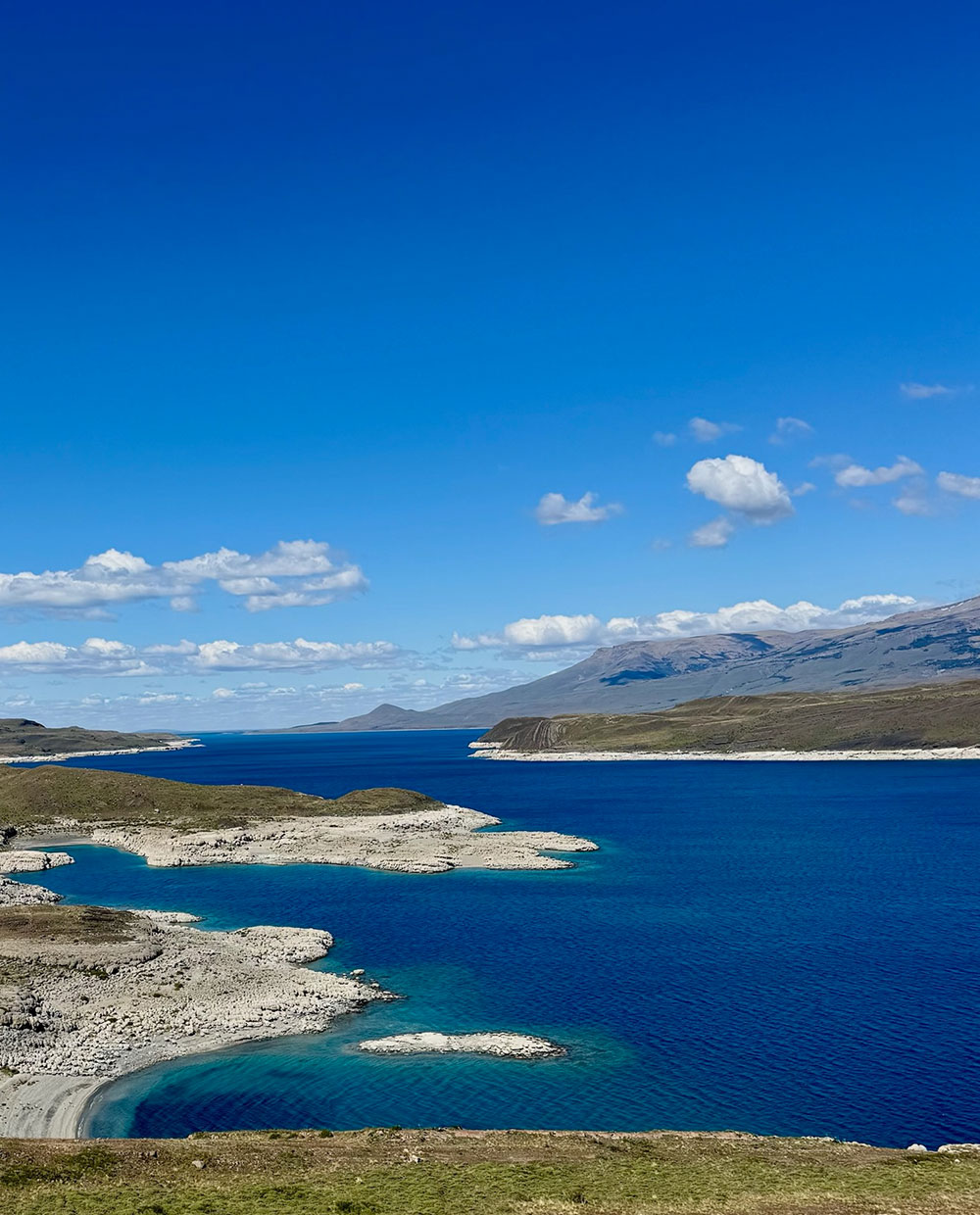
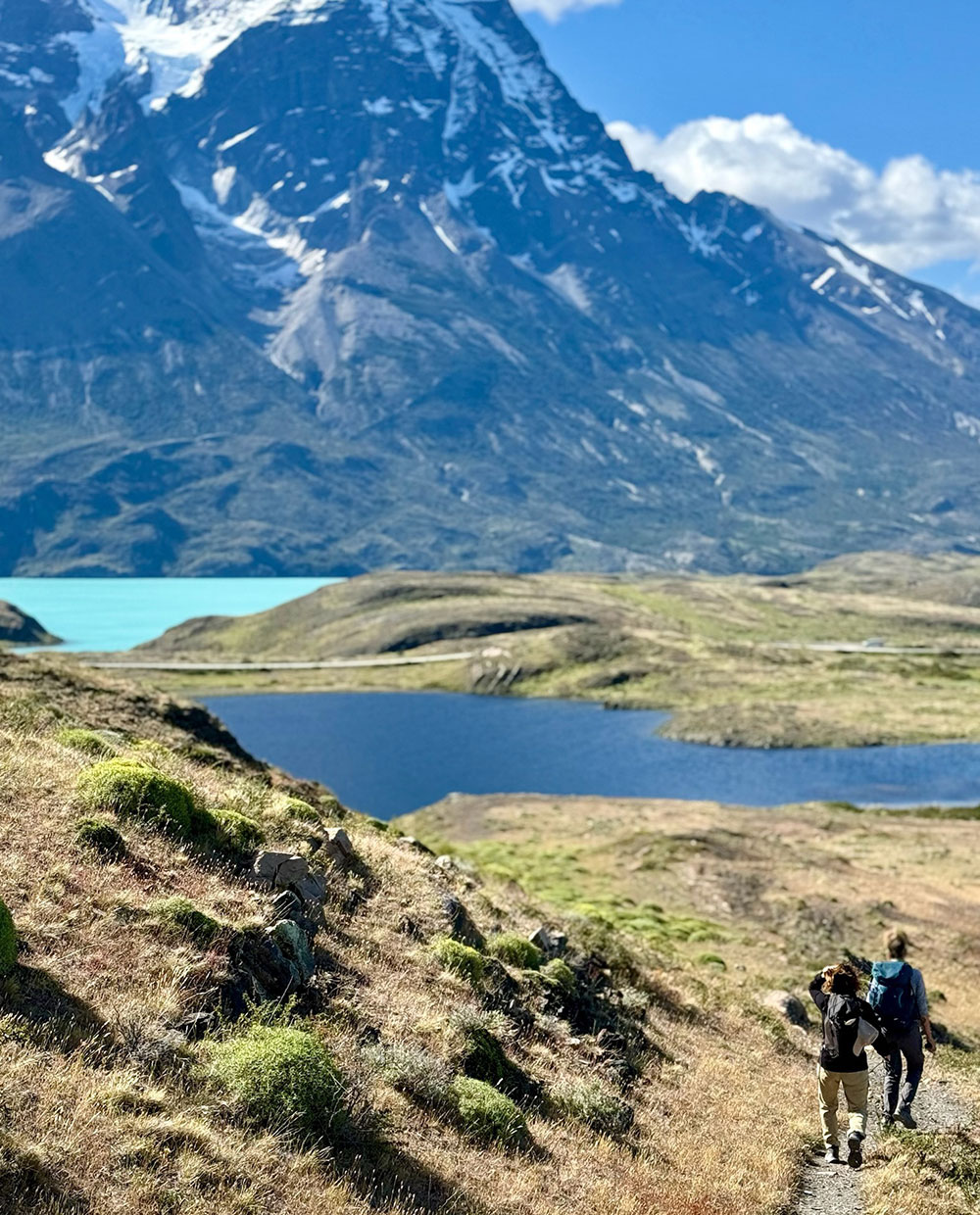
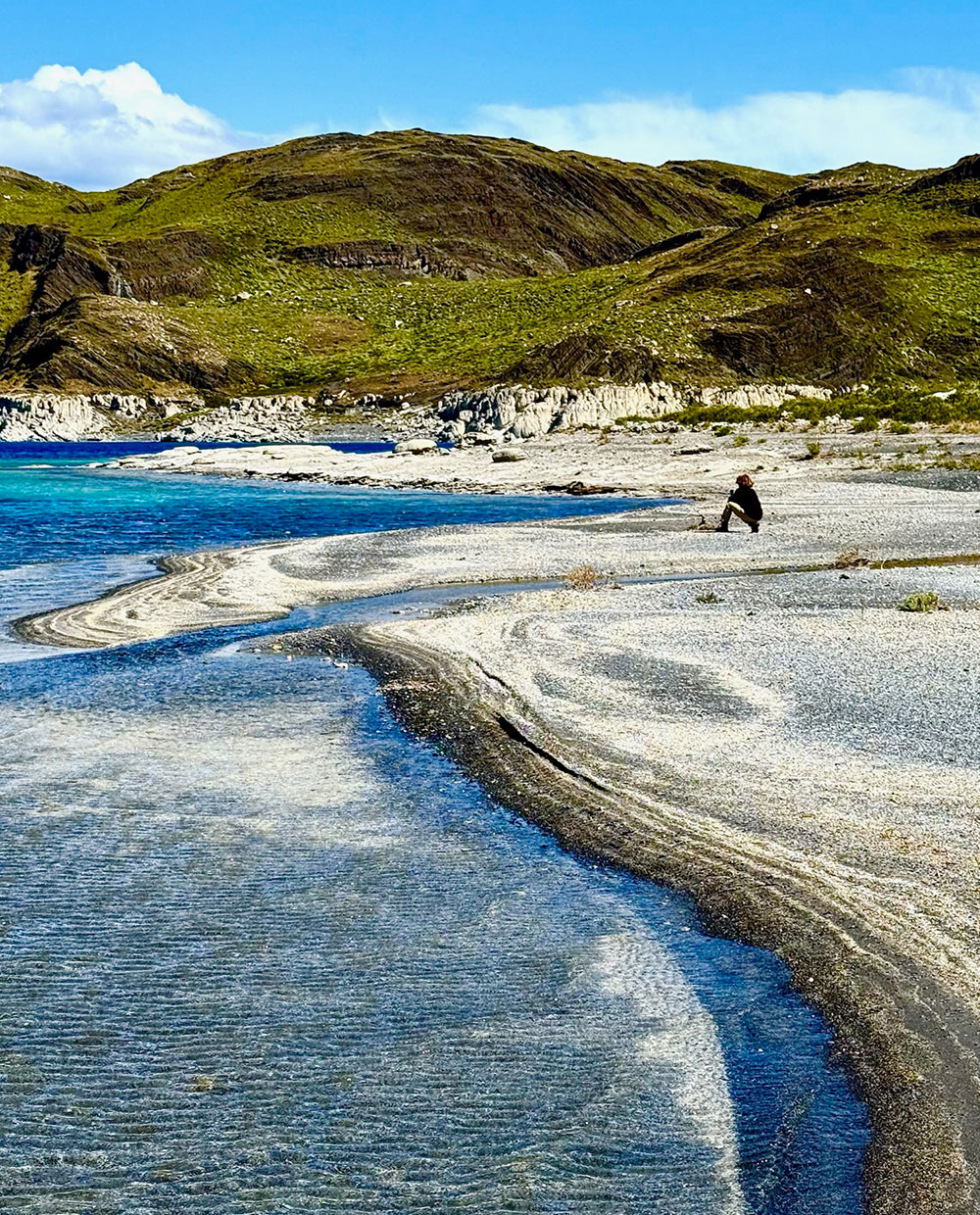
On our second day we did a more challenging 18.5km hike along the trails of the French Valley. We crossed the Pehoé Lake on Explora’s private catamaran to the Paine Grande refuge where we started the trek. We entered the French Valley through a forest, crossed the suspension bridge over the River and continue to the Italian Camp. From there, we saw the majesty of the glacier and the granite peaks that frame the area.

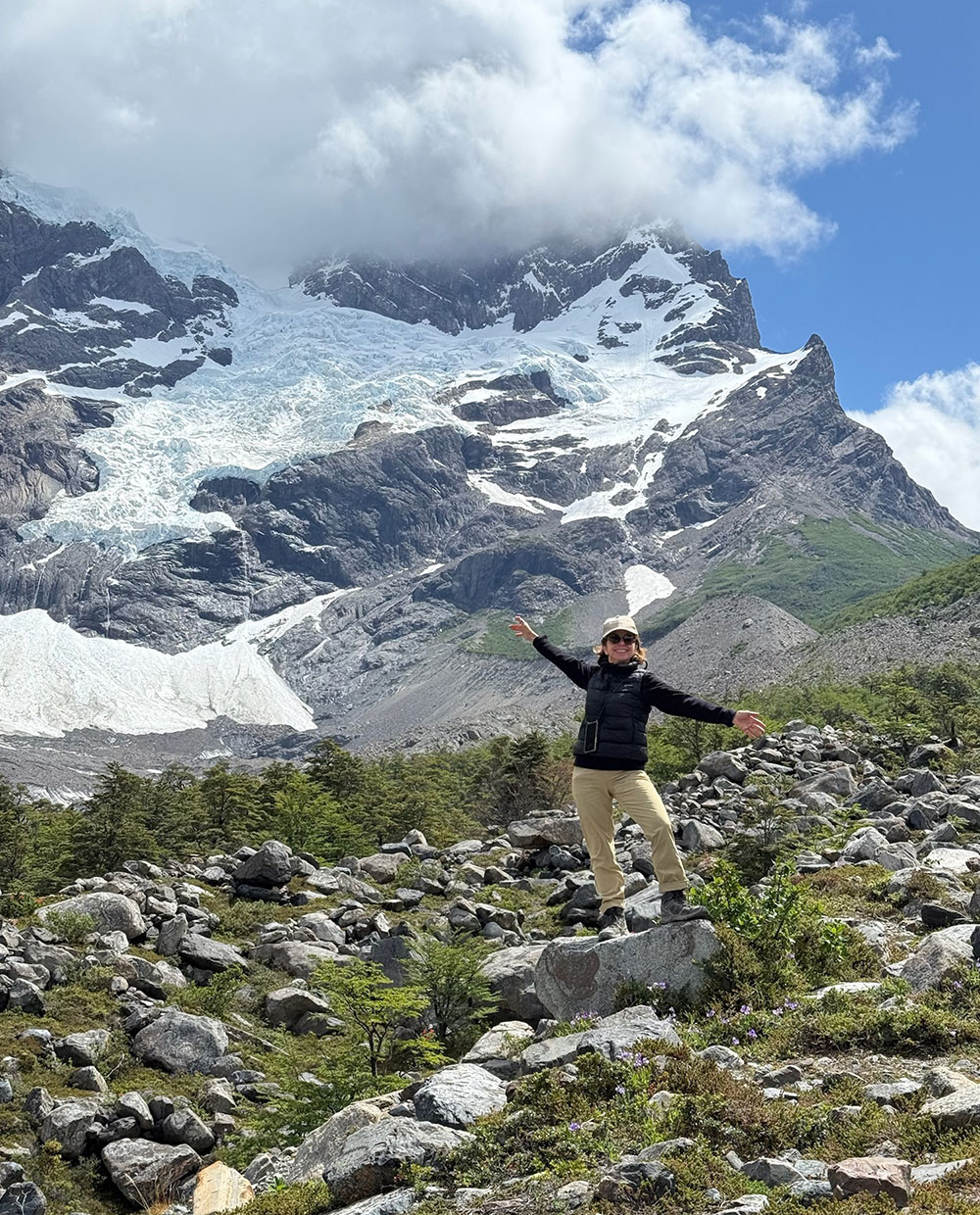
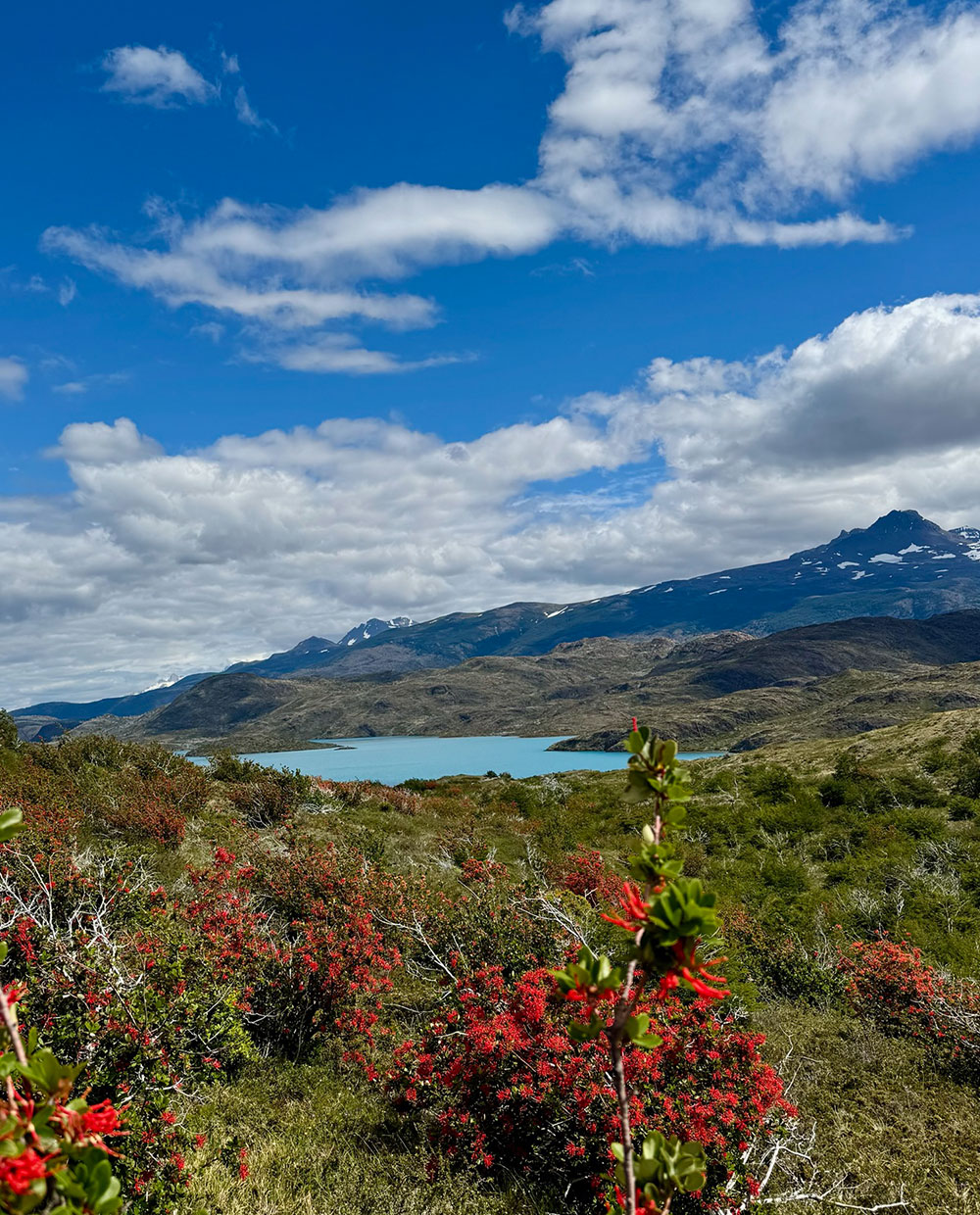
El Calafate
For the final adventurous part of our trip, we had a long drive across the border into the heart of Argentine Patagonia. Our destination was, El Calafate the perfect gateway to exploring the world-renowned Perito Moreno Glacier.
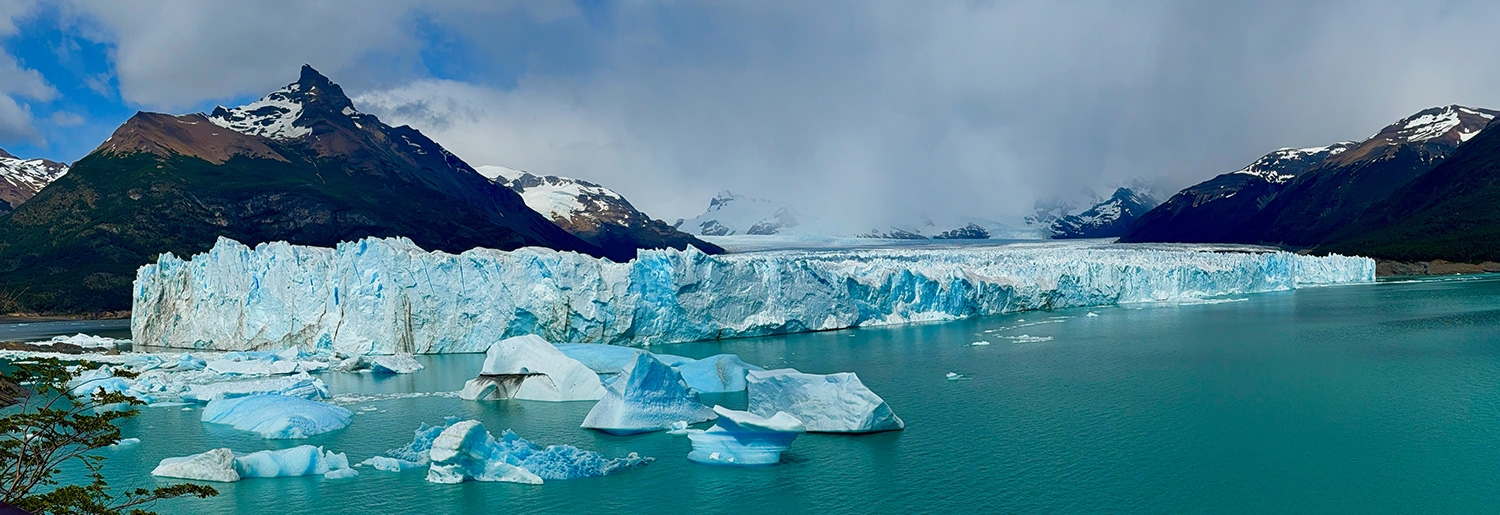
Stay & Dine
EOLO
Hidden amongst the vast expanse of Argentina’s Patagonian steppe, EOLO is a secluded and luxurious retreat. The lodge is situated on a sprawling 10,000-acre estate, with sweeping vistas of rolling hills, serene lakes and the majestic Andes mountains.
EOLO’s exterior exudes rustic elegance, designed to reflect the traditional estancias of Patagonia. The décor combines antique furnishings and locally crafted textiles with contemporary comfort, creating an ambiance that is both cozy and sophisticated.
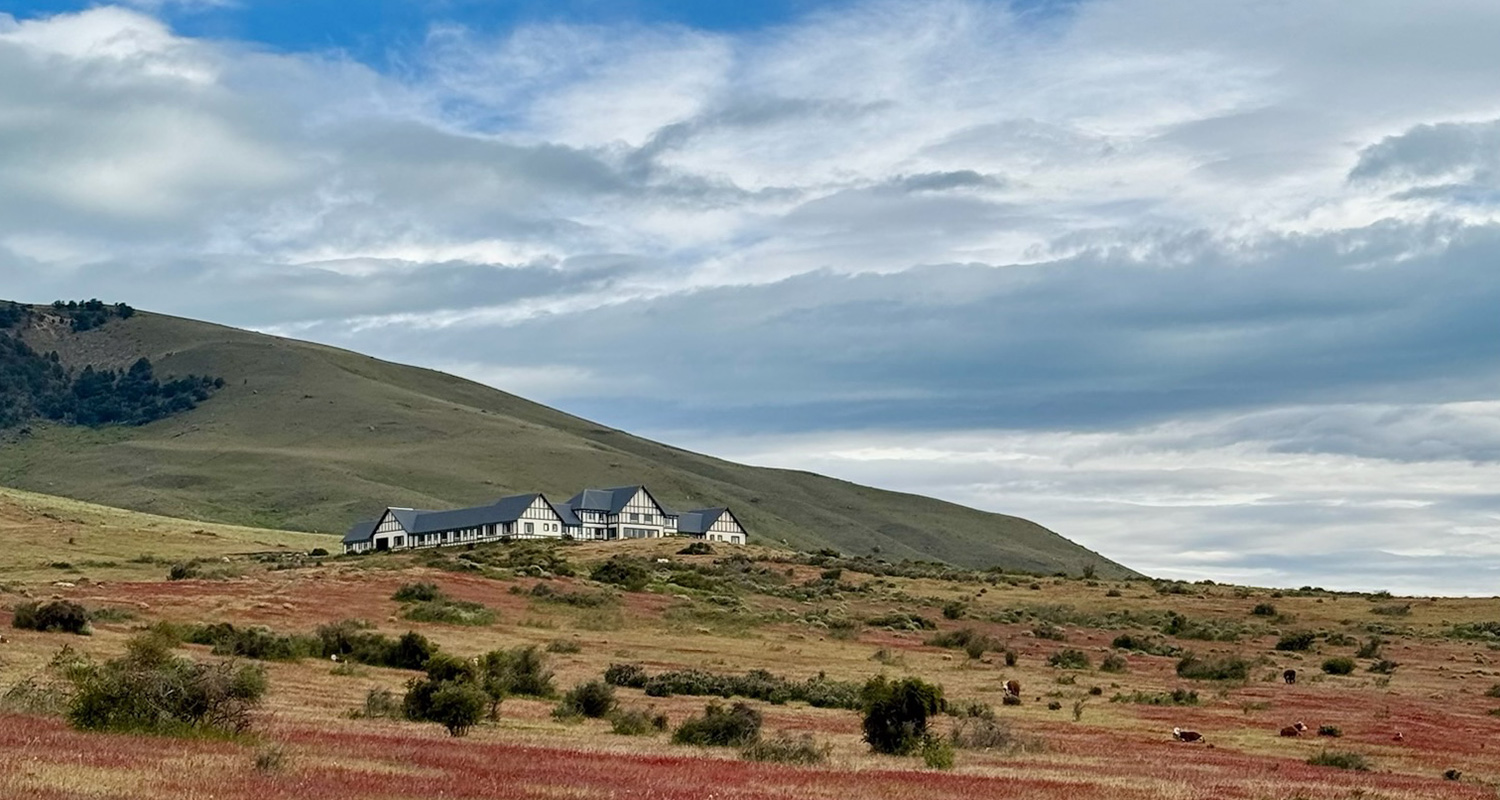
One of the wow features of EOLO are the large windows in the lounges, library and dining room, offering uninterrupted views of the stunning landscape from every angle.
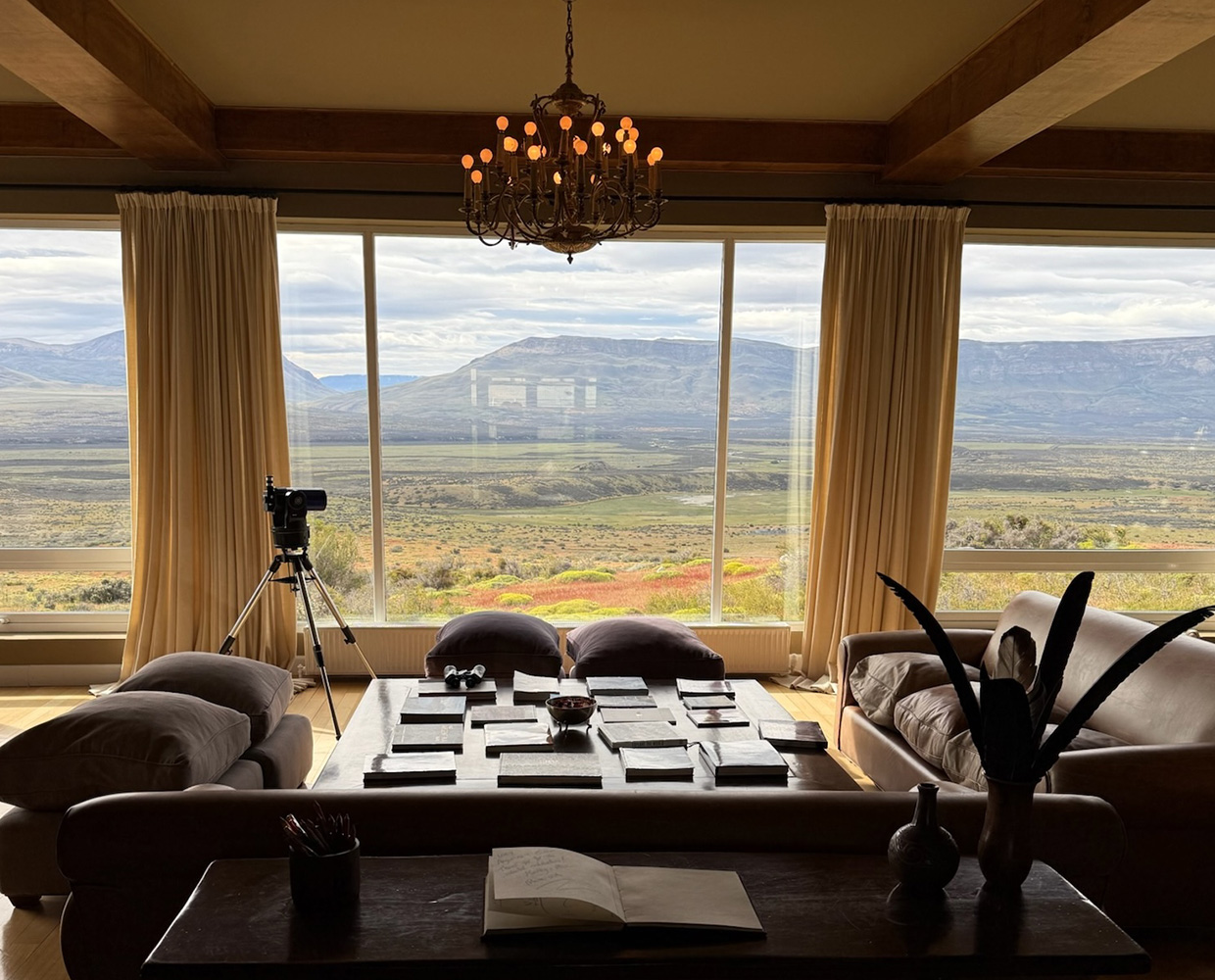
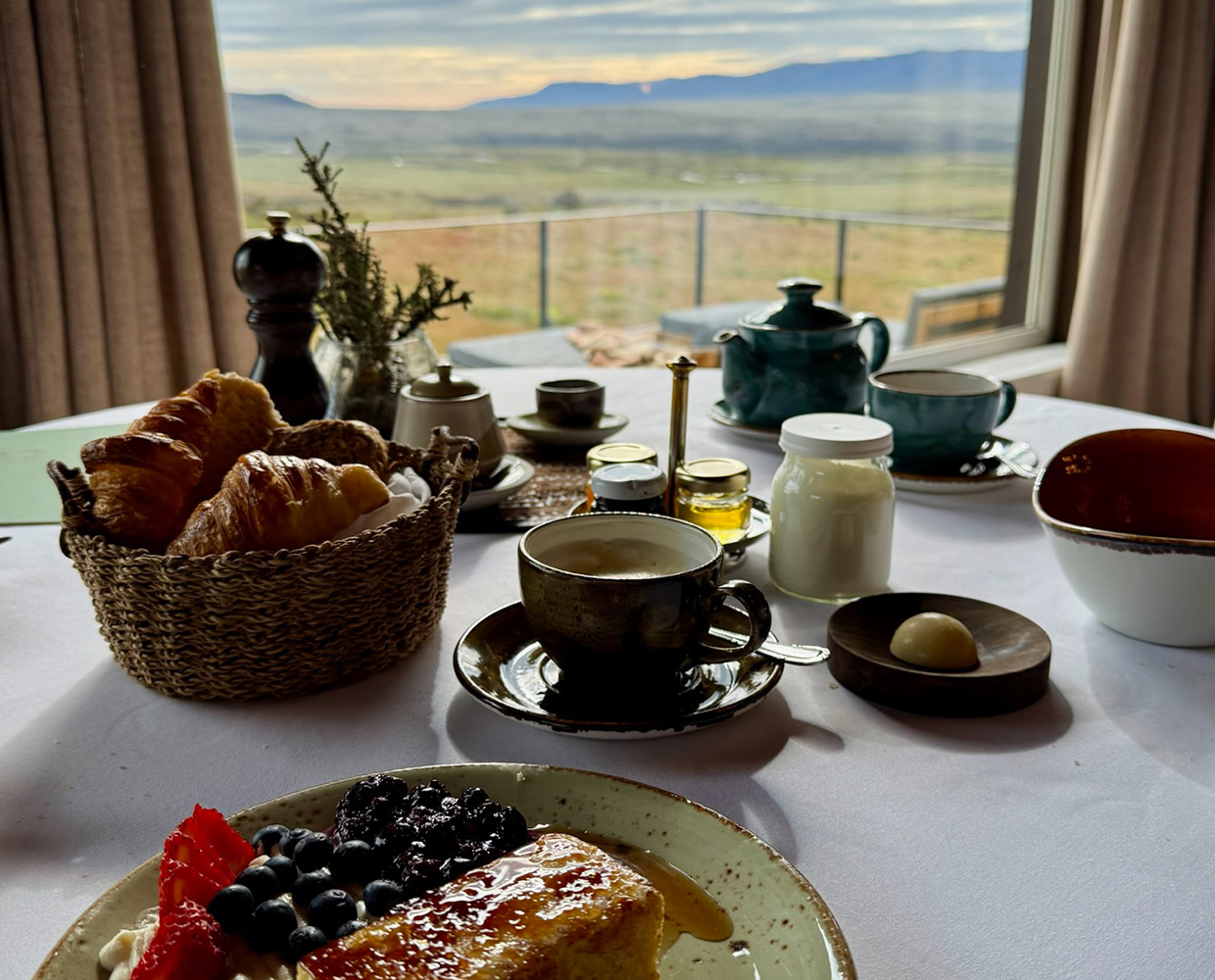
The lodge has only 17 rooms, each with expansive windows that frame the picturesque surroundings. The décor reflects the region’s character, with plush bedding, handcrafted furniture and subtle colour palettes.
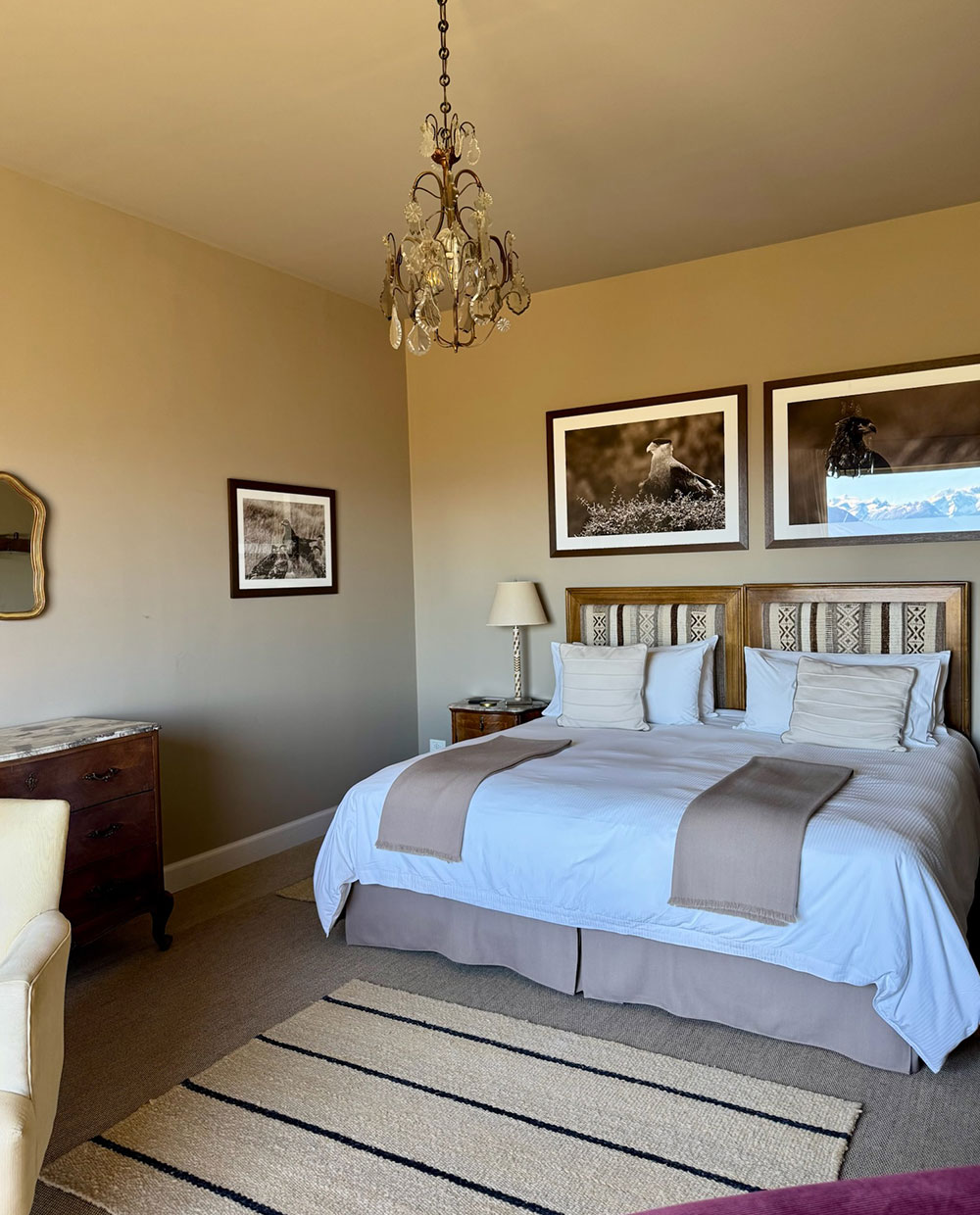
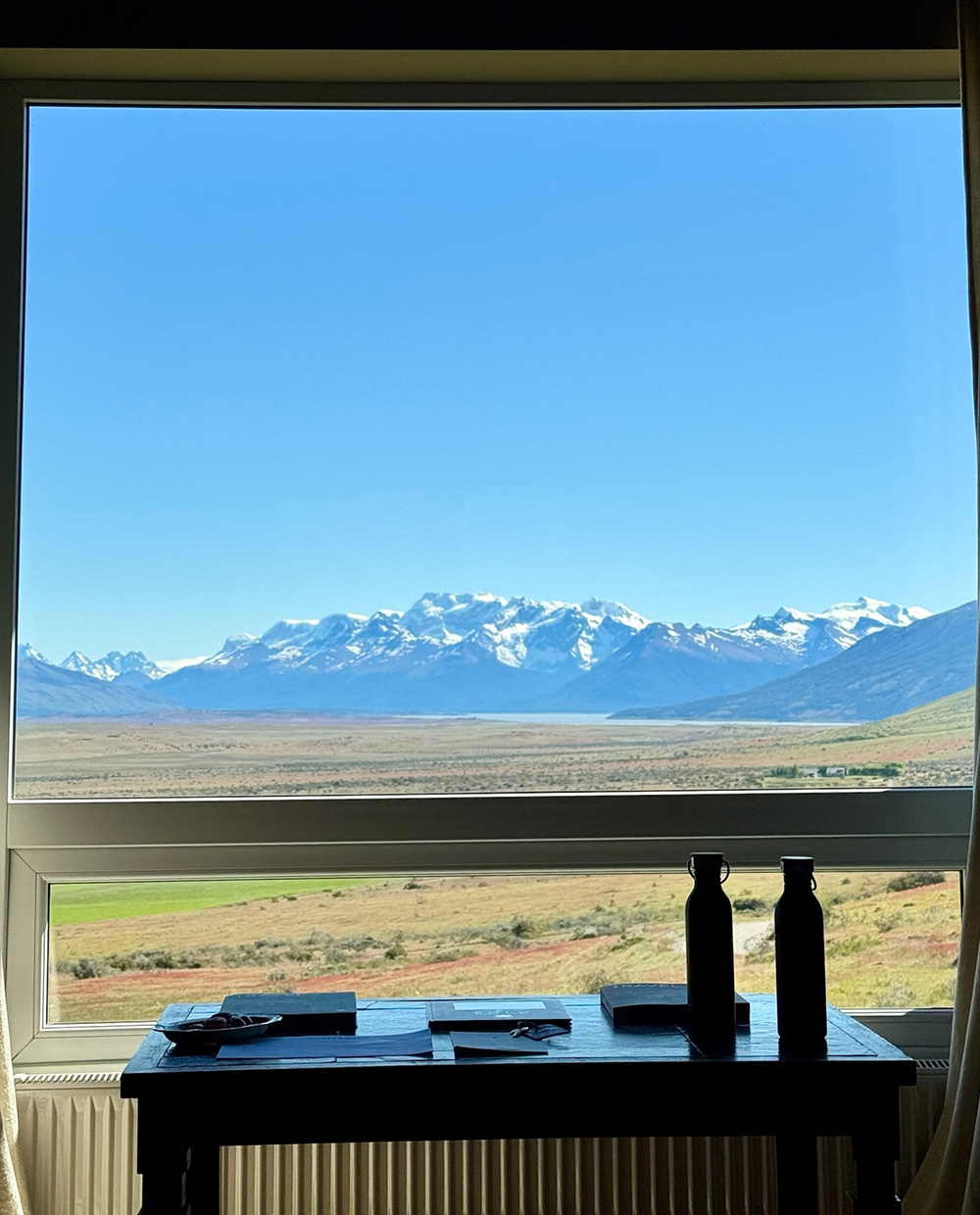
Wining and dining was excellent, with delicious and beautifully presented dishes living up the expectations created by EOLO being a Relais & Chateaux property. We also enjoyed crafted cocktails and a selection of Argentinian wines, personally selected by the knowledgeable sommelier based on our tastes and preferences.
See & Do
EOLO
EOLO provides a curated selection of activities that allow guests to explore the Patagonian wilderness intimately. We did a horseback ride across the estate’s vast terrain, with panoramic views of the surrounding valleys and mountains. We also did a 4×4 excursion up the rugged terrains of Cerro Frías, leading to an elevated viewpoint with vistas of the Andes, the sprawling steppe and the shimmering waters of Lago Argentino (below right).
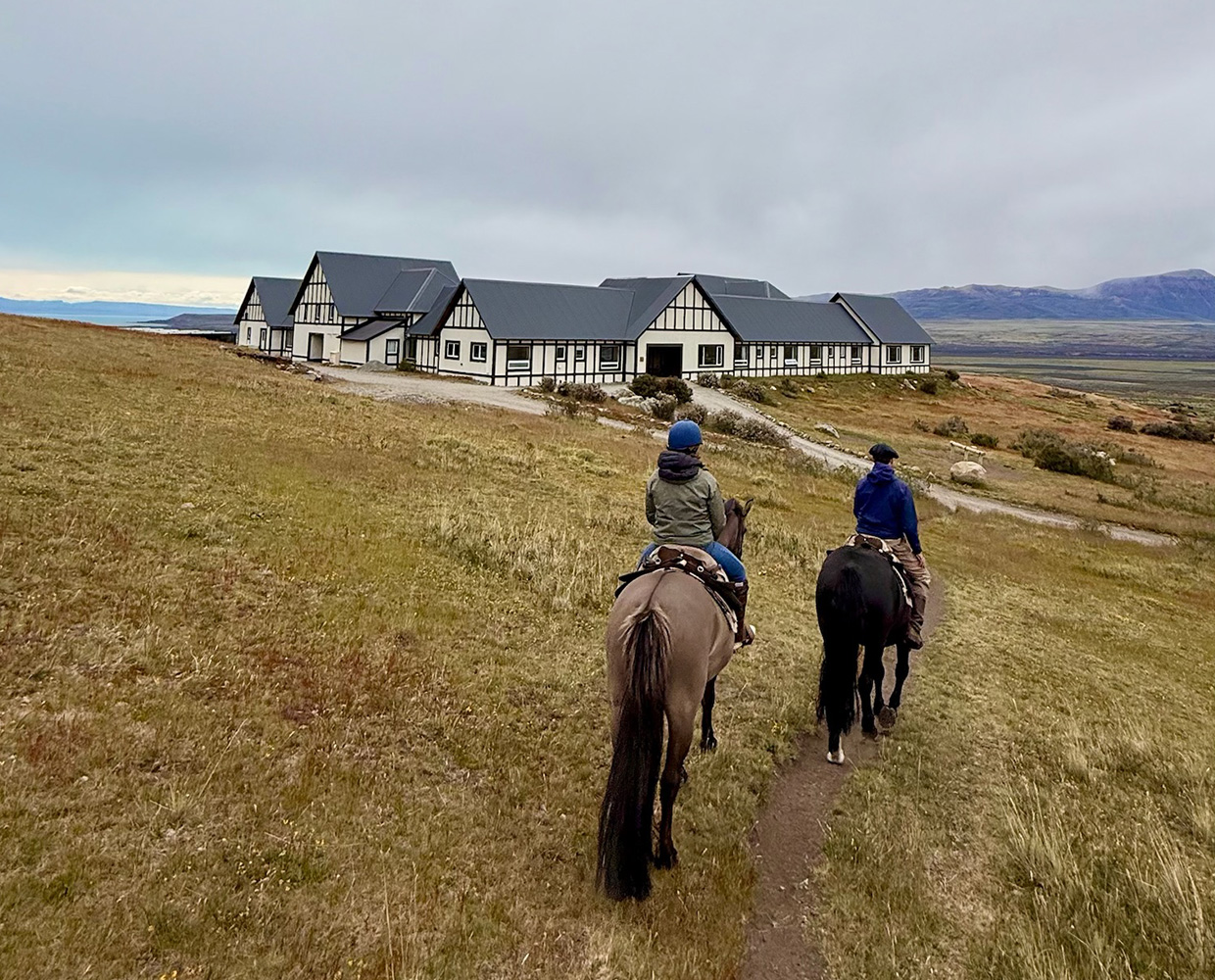
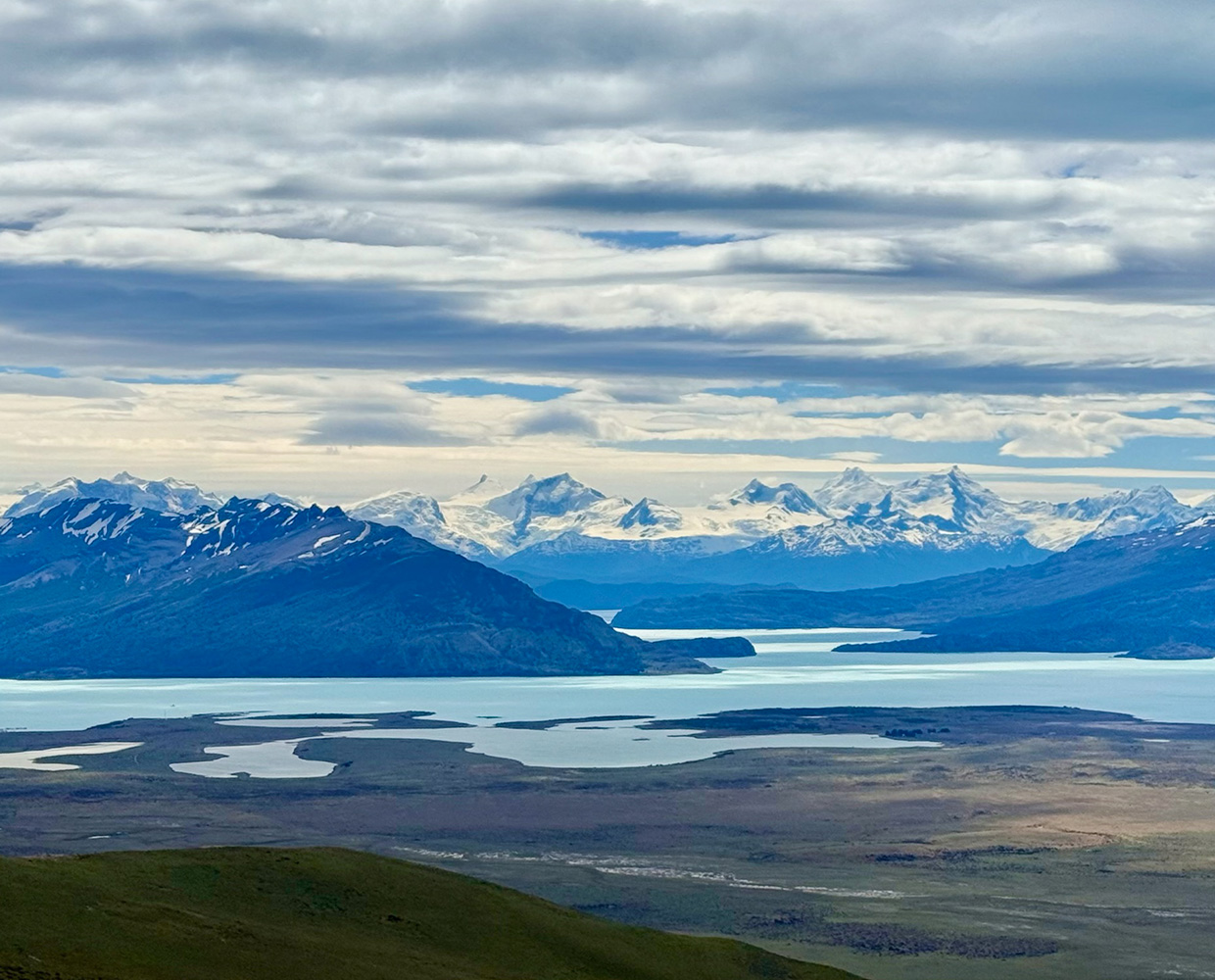
We also did some more relaxing activities, enjoying massages and the hot tub in the spa and doing an interesting wine tasting of Argentinian wines with the expert sommelier.
The Perito Moreno Glacier
Our main activity was a day exploring the amazing The Perito Moreno Glacier. Spanning c.250 square km, this immense ice formation is the third largest reserve of fresh water on the planet.
A special feature of this glacier is the different ways you can explore the site. We started by taking the many walkways to see it from a distance.
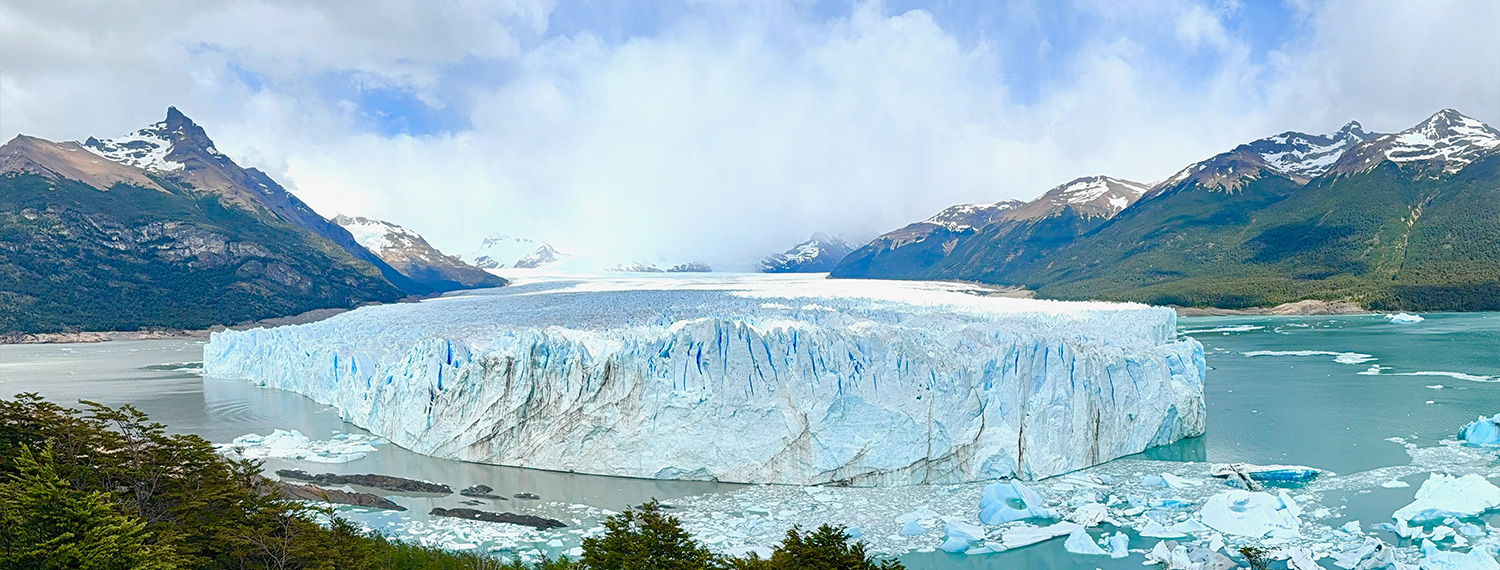
We then did a boat trip to get even closer to the glacier, descending to do a short hike. Close up, the ice formations with different shades of blue and white were truly a spectacular sight to see.
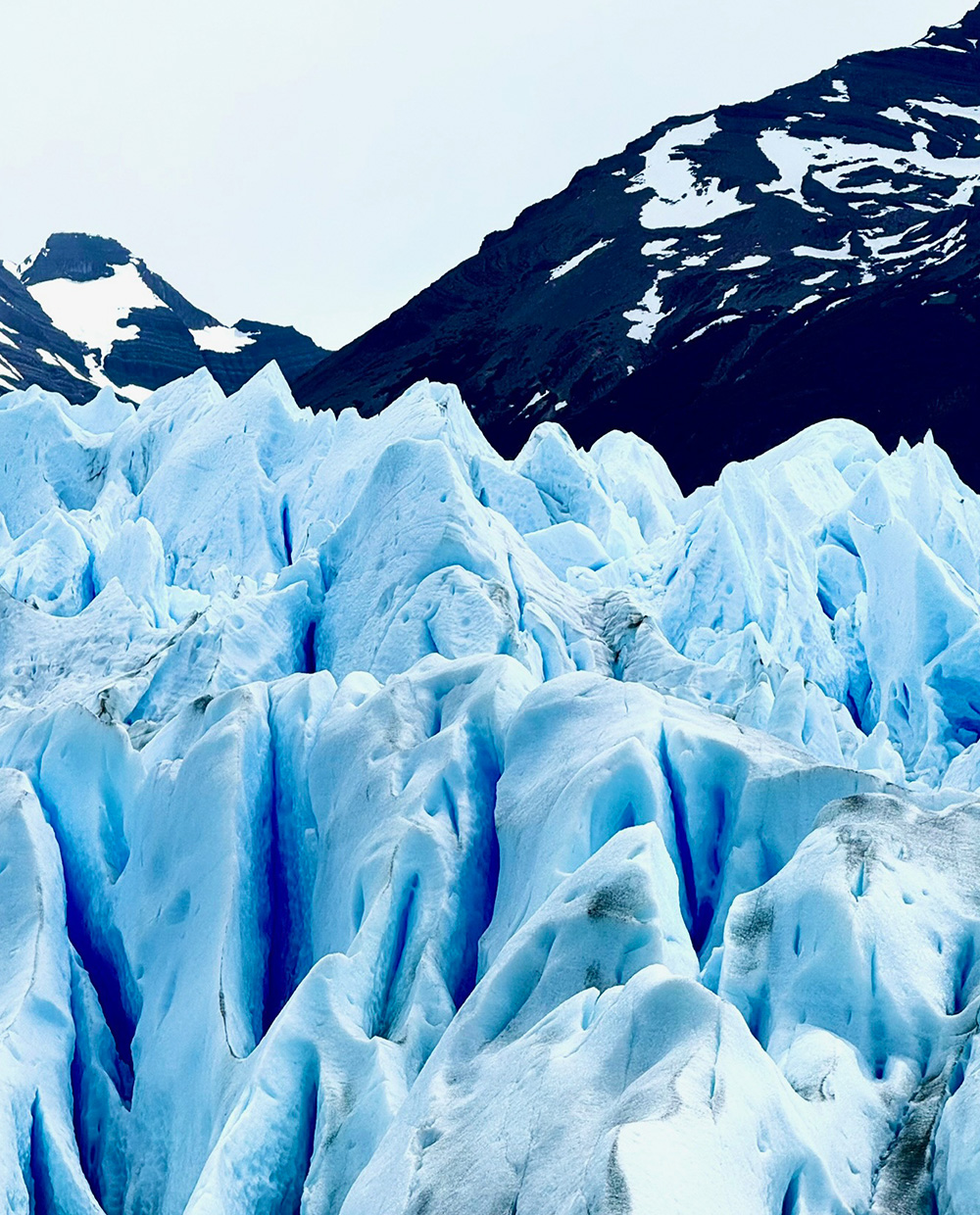
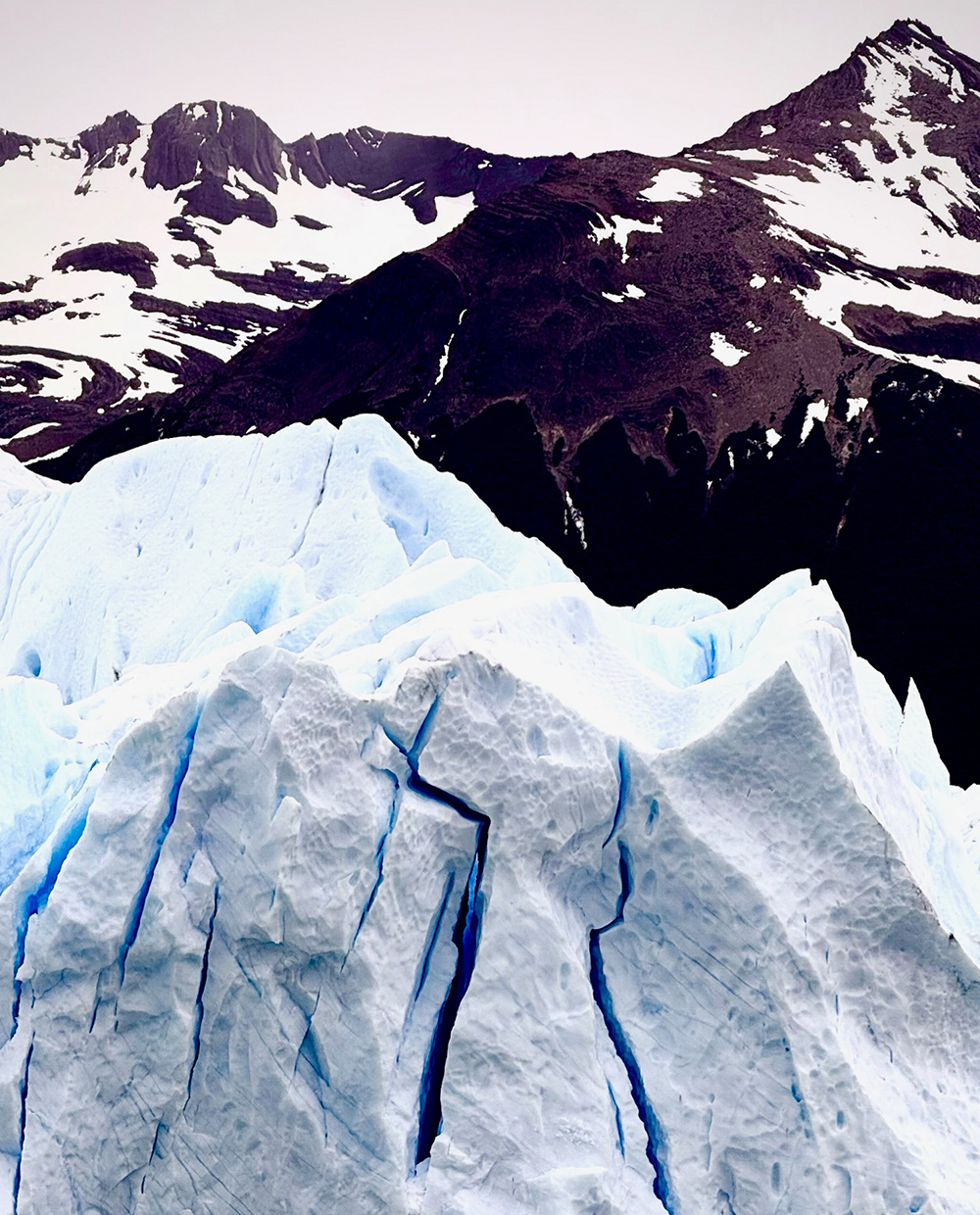
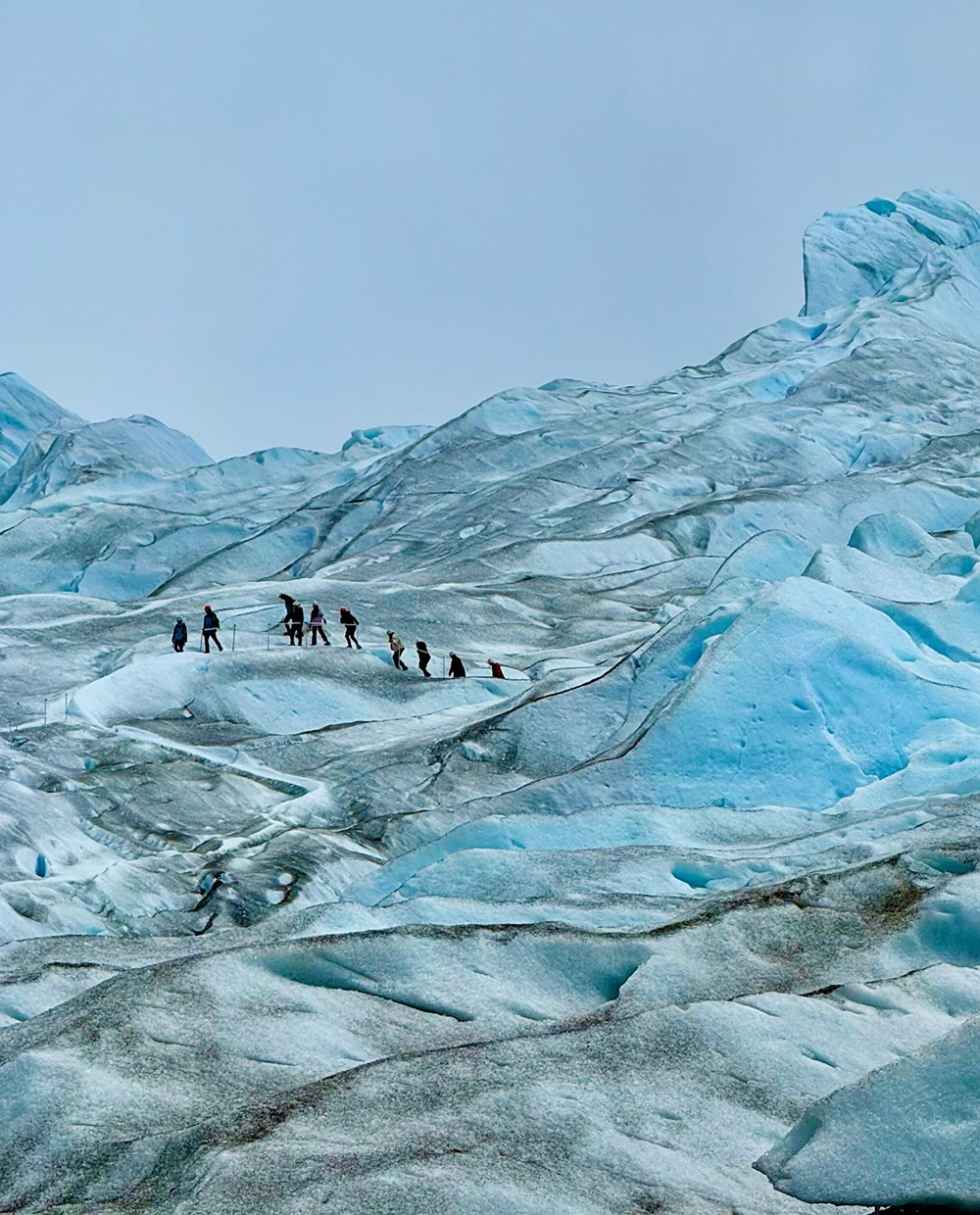
Why visit Chile & Bolivia?
A journey through Chile and Bolivia is an amazing trip worthy of any travel bucket list! The sheer range of experiences is hard to match, from the arid desert and salt flats in the north, to the wild and mountainous Patagonia in the south. There is also range of beautiful lodges to stay in, each offering a combination of expertly guided explorations, fantastic food & wine and also a chance to connect with other like-minded travellers.